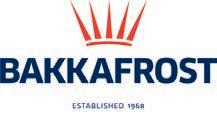




















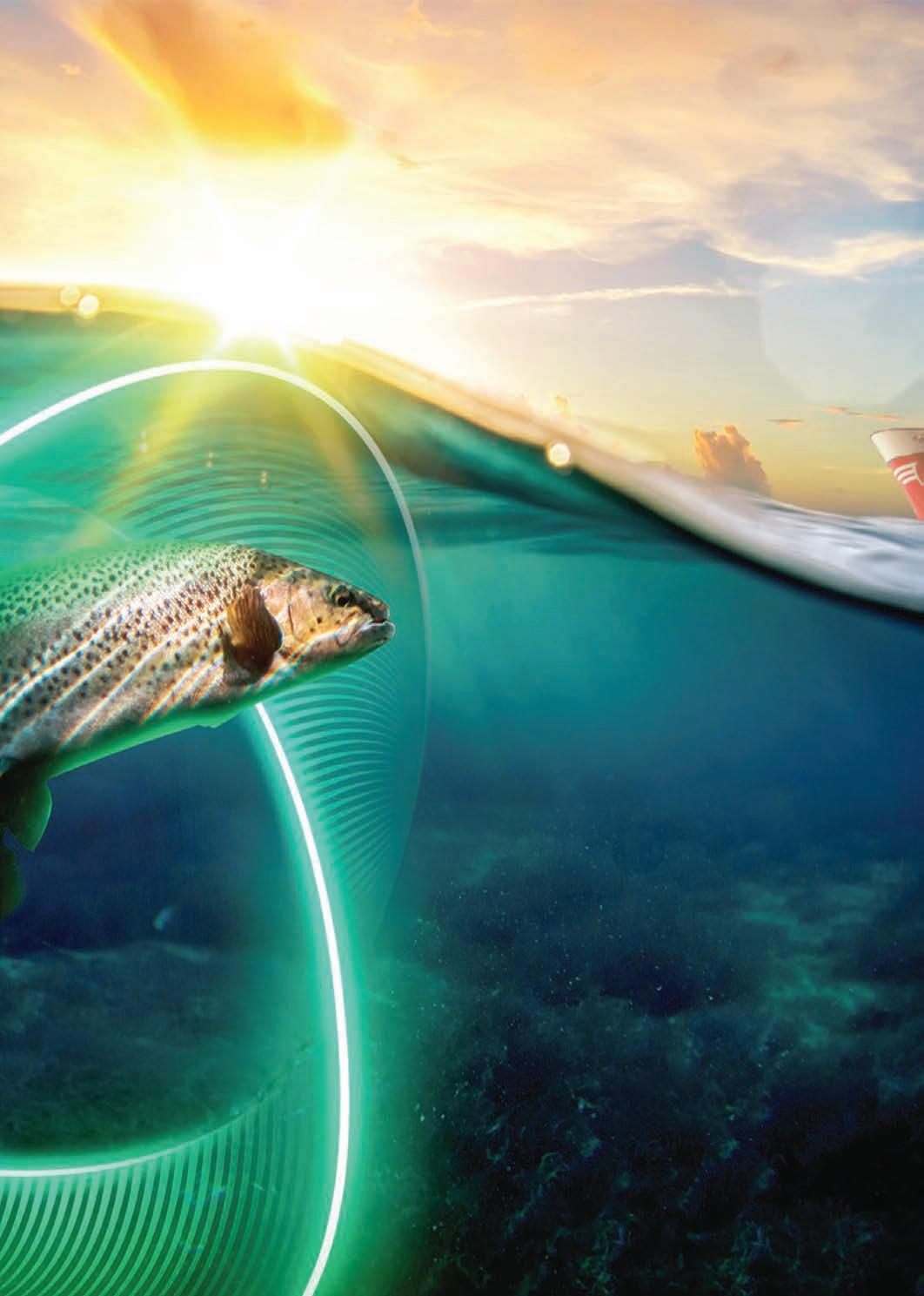
Our award-winning range of in-water Stunners are backed by the UK’s leading supermarkets and global producers.

• Suitable of salmon, trout, tilapia, cod, seabass, seabream, prawns, yellowtail, and smolt
• 100% stun rate
• Low stress and less handling
• Effective and humane, without pre-stun shocks
“This is the best solution in the market in terms of animal welfare standards and environmental impact.”

Jarl van den Berg M.Sc, General Manager
HG SALMON UK, HENDRIX GENETICS
“This in-water stunner is a huge step forward to a more humane and controlled stunning process with better fish welfare. As a side effect, process and quality parameters improved: reduced bruising, better quality of the fillets, and better working conditions for staff.”
Emily McGregor, Sustainability Manager, REGAL SPRINGS
The 2023 edition of the Fish Farmer Year Book includes a look back at the big news over the past year in the aquaculture sector as well as detail from two key reports from the industry in Scotland: the Fish Farm Production Survey and the Scottish Shellfish Production Survey.
We’re also delighted to include, in this edition, contributions from Salmon Scotland, the Shellfish Association of Great Britain and the British Trout Association.


This was supposed to be the year the sector bounced back triumphantly after two years of the Covid pandemic and associated lockdowns, not to mention – for the UK industry anyway – addressing some of the issues thrown up by Brexit.
It didn’t quite work out that way – Brexit barriers to trade continued to cause problems, and while production soared and fish prices shot up in the first half of the year, producers also found inflation was driving up costs in the postCovid recovery somnething which as exacerbated by the catastrophic impact of Russia’s war on Ukraine.
Fish farmers, particularly in Scotland, also struggled with
biological issues that look set to ensure that the overall harvest for 2022 will not match the growth curve set in the previous year. That this has happened in a year in which Europe experienced record heatwave temperatures is probably no coincidence.
The aquaculture industry around the world has also faced challenges to its “licence to operate” over the past year, with ongoing debates over the future of fish farming on Canada’s Pacific coast, a new and unsympathetic government in Chile and a new tax regime in Norway. In Scotland, however, while the industry saw cost hikes in the charges it pays to regulators, we have also seen a promise to reform the convoluted consent process, a development the farmers have welcomed.

promise to reform the convoluted and term future.
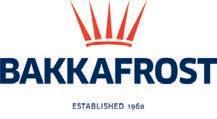
It’s also been a challenging year for the processing sector, with increasing fish prices and labour shortages in many countries.
The aquaculture industry has continued to innovate, however, and this above all else gives grounds for optimism for its longterm future.
As ever, thanks are due to our sponsors, advertisers and contributors, and of course, you, the readers.

The past year has certainly brought challenges, impacting every aspect of our lives, but the aquaculture sector’s remarkable resilience continues to show.

Halfway through my second year as Cabinet Secretary for Rural Affairs and Islands, I remain committed to supporting the sector to flourish and to deliver positive outcomes for Scotland’s communities and natural environment.
We can celebrate good news this year. Fish farming’s latest statistics are record-breaking: 2021 production of Atlantic Salmon was up 7% from the previous year, the first year that production in Scotland surpassed 200,000 tonnes. I am pleased at the progress SEPA, the Scottish

Environment Protection Agency, has made in implementing the finfish sector plan, creating an enabling framework, removing the biomass limit on fish farms and supporting growth in the right places. Seafood and fish remain Scotland’s top food export, valued at £1bn in 2021. UK exports of Scottishfarmed Atlantic salmon alone were worth £614m, making up 38% of total UK fish and seafood exports.
The past year also marked the welcome return of in-person events following the Covid-19 pandemic, giving us the opportunity to meet many from the sector for the first time. I opened the Aquaculture UK meeting in Aviemore, delivered a speech at the Association of Scottish Shellfish Growers and championed Scottish seafood at the Expo Global in Barcelona.
Scotland’s vibrant seafood sector is something to celebrate and, in October, the Scottish government published its first seafood strategy. This takes an end-to-end look at the supply chain, sets out how the aquaculture and fishing sectors are being supported to remain domestically and internationally competitive, and attract skills and talent to some of Scotland’s most rural and coastal areas to support this valuable economy.
Above: Mussel farm

Left: Fish farm Opposite: Mairi Gougeon meets Brian Perkins, CEO of the Global Seafood Alliance (left) with Donna Fordyce of Seafood Scotland (right) at Seafood Expo Global, Barcelona

I remain grateful to Professor Griggs, whose comprehensive regulatory review report was released in February 2022. We have welcomed the report’s recommendations in principle and acknowledge the important expectations it sets out for tangible change at pace. Since its release, we have worked to implement rapid change where possible, while preparing the ground for further improvements in the coming year.
A fundamental aspect to set the context of the regulatory review is our new Vision for Sustainable Aquaculture. Environmental protection is a guiding principle of the Vision, as well as emphasising community benefit. Innovation and effective regulation are key enablers, underpinning support for a thriving sector that is environmentally and socially sustainable, and internationally recognised for producing high-quality seafood.
The new Scottish Aquaculture Council (SAC), which I chair, will continue to meet regularly to help maintain momentum and to ensure equal progress across all government commitments relevant to aquaculture.
A consenting task group has also been established to consider new ways of processing fish farm applications and I look forward to the lessons learned as these are trialled, with a key focus on streamlining as well as better communication from all parties involved.
Finally, work with the Scottish Science Advisory Council (SSAC), Scotland’s highest-level independent science advisory body, to consider Professor Griggs’ recommendations on science, is underway. I have asked the SSAC to explore the way science is commissioned, used and communicated across aquaculture consenting, and advise us on how to achieve a trusted process that makes the best use of science and keeps pace with innovation. Their findings, due in spring 2023, will feed into development of current and future frameworks.
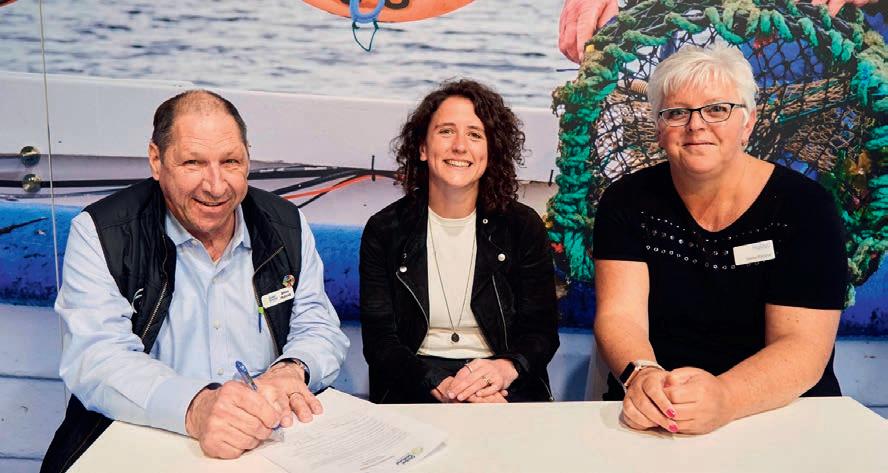
The coming year will bring ample opportunities to celebrate Scotland’s aquaculture industry as a success story, despite all of the challenges this changing world throws at us. We continue to collaborate with our international colleagues to share knowledge and experience. I am excited to be participating in the Aqua Nor conference in Trondheim in 2023 and will be hosting the Global Seafood Alliance’s Responsible Seafood conference in 2024, its first time ever in the UK.
Collaboration is crucial to ensuring Scotland remains firmly on the map as a global leader in high-quality, sustainable seafood production. That includes everything from international discussions to individual relationships. Let’s continue to work together to fulfil aquaculture’s promise as a sustainable success story and a flagship example of Scotland’s thriving blue economy.







This page
Opposite from top: Gary MacLean, Scotland’s National Chef; Celebrating the 30th anniversary of Scottish salmon’s Label Rouge status, a group of leading French importers and processors visited Scotland

The hard work and professionalism of the workforce is what makes Scottish salmon so popular, producing healthy and nutritious food that is the best in the world.
This immense effort is hugely appreciated by everyone from government ministers to the world’s best chefs and the millions of consumers across the planet who love Scottish salmon.
It has been another highly successful year for Scottish salmon and I pay tribute to everyone involved from egg to plate.
We are collectively part of a global success story, which now delivers an extraordinary £760m for the Scottish economy.
That includes a direct economic contribution of £303m in Gross Value Added (GVA) in 2021, up nearly a fifth on pre-pandemic levels, with the supply chain further supporting jobs in every part of Scotland, and employment costs benefiting local communities and companies all year round.
All this has been achieved by a dedicated workforce despite the incredible challenges of Covid and

Brexit, so by tapping into salmon farming’s full potential I’m confident the blue economy can deliver even greater benefits for local communities – and could be worth £1bn to the Scottish economy in just a few years.

Demand for our product remains strong at home and abroad.
Scottish salmon exports recovered to near-record figures in 2021, increasing to £614m.
Meanwhile, sales of all salmon in UK shops also rose to £1.1bn last year as consumers increased their consumption of the protein-rich fish.
However, it’s not just our product that is popular – it’s our entire sector.

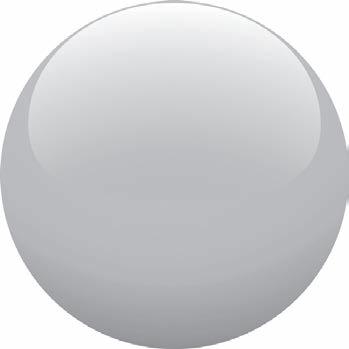



An opinion poll published earlier this year confirmed that most Scots who live near salmon farms support what we do. Residents said that farms provided jobs for local people, helped to improve the local economy and provided a highquality product that Scotland can be proud of.
Our popularity further extends to the planet’s best chefs, which is why Salmon Scotland has this year been accepted into the prestigious Worldchefs group in recognition of the extraordinary quality of our high-protein fish.
And this year has marked the 30th anniversary of Scottish salmon being awarded the Label Rouge accolade.
As Gary MacLean, Scotland’s National Chef, said: “When you’re buying Scottish salmon, you know you’re buying something that’s a cut above the rest.”
We’re also working hard to ensure that a new generation of people enjoy the nutritional value of our salmon. In

WE ARE COLLECTIVELY PART OF A GLOBAL SUCCESS STORY
2022, a new initiative was launched to encourage pupils in Stirling to eat nutritious Scottish salmon in their school meals, which we hope will be adopted across Scotland.
As the trade body that represents Scottish salmon, the past year has seen us significantly expand our membership.
A total of 41 companies are now members of Salmon Scotland, with a range of supply chain companies joining us in recognition of our work to promote the entire sector.
We will continue to expand as we deliver this “Team Salmon Scotland” approach.
Standing up for our members is what takes up a huge amount of our time –and it’s not always easy.
As the economic storm clouds gather, it is imperative that governments tap into the full potential of the Scottish salmon sector as 2023 approaches.
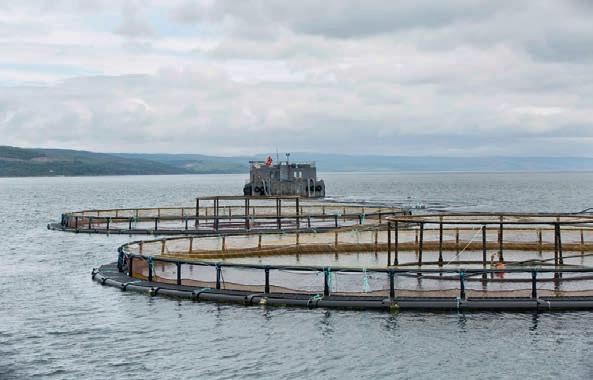

For the Scottish government, that means a more streamlined regulatory framework that is both transparent and efficient, removing the unnecessary planning delays and bureaucracy generated by too many quangos.
We are fortunate to have strong support from Scottish ministers, but that
doesn’t always translate through to the way that government in Edinburgh operates.
We have put forward a sensible proposal to redirect millions of pounds that currently head to Crown Estate Scotland coffers and invest that money in housing in the communities where we farm.
We will continue to campaign for this in the year ahead, as well as press the government to swiftly introduce the changes recommended by Professor Russel Griggs, with his deadline for reform fast approaching.
Delivering Griggs and regulatory reform is what will enable Scotland to compete with our international rivals, as well as enable the Scottish government’s ambition for the sector between now and 2050.
Much of our work in 2023 will also involve the sea lice risk
framework and SEPA’s overly cautious approach to sea lice.



As for the UK government, following an unprecedented period of political turmoil, we need the new ministerial team to address the post-Brexit challenges our sector faces.
Low unemployment and extremely limited labour availability in areas where our businesses have processing facilities mean factories have been running around 20% light on staff.
A more enlightened approach to immigration is vital to assist business, and we want to make progress on digital export health certificates in 2023.
Next year, it is imperative that we do not see a repeat of the cross-channel delays that affected us and so many other businesses last summer.
Coupled with these operational difficulties, our farmers have faced environmental challenges in recent months.
Whether on land or sea, raising animals outdoors inevitably comes with risks as the climate continues to change and evolve, but that makes environment-induced events no less devastating.
A new online early-warning system to help identify and share data on potentially harmful organisms such as micro-jellyfish could help all seafood producers fight back against climate change, and I look forward to that progressing in 2023 to avoid a repeat of the problems recorded this autumn.
I’m also proud of our own work to address the impact of habitat loss and rising river temperatures for wild salmon, such as restoring the Fincastle Dam in West Harris.
Perhaps some of our critics should spend more time next year taking a more constructive approach and addressing the human impact on wild salmon stocks rather than peddling myths about the farm-raised sector. With a long recession ahead of us, 2023 will not be without its challenges. Nevertheless, few sectors are as well placed as ours to help the country through this, and then deliver our recovery and renewal.
Opposite from top: Fincastle Dam in West Harris was on the brink of collapse a year ago, but has now been restored to maintain a vital wild salmon run thanks to the Wild Salmonid Support Fund; Scottish fish farm
Above from top: Label Rouge salmon; Misty fish farm
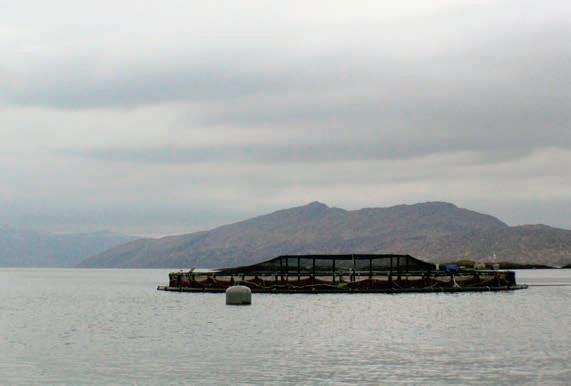
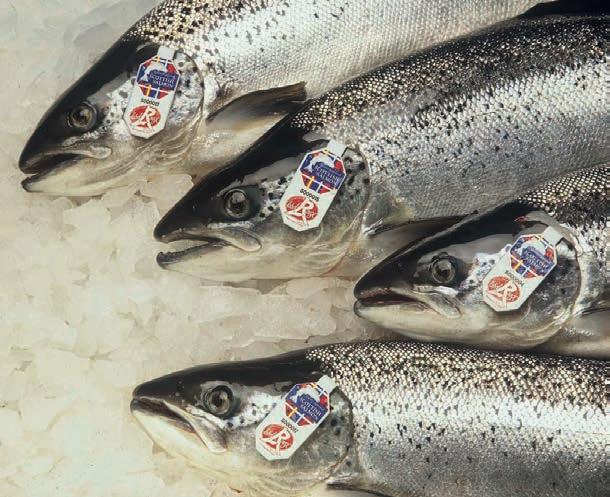
YOU KNOW YOU’RE BUYING SOMETHING THAT’S A CUT ABOVE THE REST
Benchmark Genetics is bolstering its commitment to the UK aquaculture industry



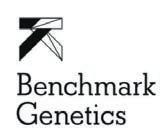
As a leading provider of aquaculture genetics globally, Benchmark continues to develop its product and service offering with a customer-centric focus.

The Scottish salmon industry is one of the company’s key markets, and valued
customer partnerships guide the local strategic priorities commercially and in R&D.
A Scottish-based commercial team has already been operating for several years to support market development. New this year is a state-of-the-art incubation centre in Iceland, ensuring the continuous supply of biosecure, high-quality genetics throughout the year. With an annual capacity of 300 million ova and 10,000 single incubators installed, this operation is by
Opposite from top: Dr Ross Houston, Director of Innovation, Benchmark Genetics; Incubation centre in Iceland, holding 10.000 single incubators and a capacity of 300 M eggs
Above: SNP Chip for genotyping Atlantic salmon
far the largest in the world of its kind. After a soft launch at the end of 2022, the facility is now running at full capacity exporting eggs to more than 29 countries, including the UK. The feedback from clients in Scotland and other parts of the world has been unequivocally positive.
Molecular Genetics program established in Edinburgh Benchmark has also launched a new Molecular Genetics program from a leading-edge laboratory in Edinburgh. This program will optimise genotyping and other genomics solutions for Benchmark’s salmon, shrimp, and tilapia breeding programmes. The lab will also bolster the offering of
cost-effective genotyping solutions to the global aquaculture industry via Benchmark’s Genetic Services business.
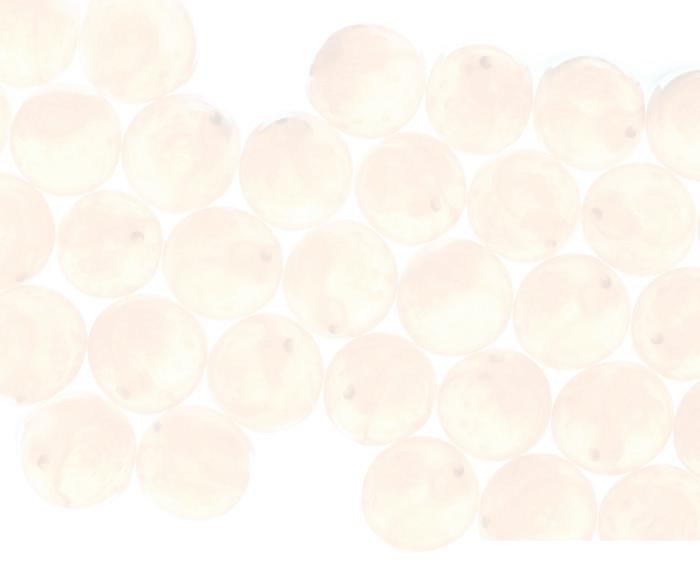
“In so doing, Benchmark is enabling access to affordable genomic tools and services to support genetic improvement, empowering companies to achieve better performance, and enhance productivity in our in-house breeding programs,” says Dr Ross Houston, Director of Innovations in Benchmark Genetics.
The program will be led by Senior Scientist Dr Carolina Peñaloza and will include research and development focussed on translating the latest genomic technologies to practical applications for the industry.

Genetic improvements based on family data, collected locally
These new R&D activities will benefit the UK aquaculture industry by providing more cost-effective genomic tools in Benchmark’s salmon breeding programs that can improve genomic selection for key target traits. Extensive collection of data from Benchmark’s families in UK salmon farm environments and targeted disease challenge trials are paired with genomic data to perform evaluations. This allows the selection candidates (siblings of families in these trials based in Iceland) to be chosen to develop tailored salmon lines for optimal performance in UK farm environments. In addition, the genomic services being developed in Edinburgh can be accessed by UK partners wishing to perform genetic improvement of their strains.
“Benchmark Genetics offers a unique one-stop-shop for supporting the genetic improvement of aquaculture species, whether via the provision of our high-performing strains or via expertise and tools provided as services to partners,” concludes Dr Houston.
“Benchmark Genetics offers a unique one-stop-shop for supporting the genetic improvement of aquaculture species”Photo: Benchmark, Thomas Morel


on the industry’s methods by environmentalists and raids on its resources by governments seeking to plug their own fiscal black holes.
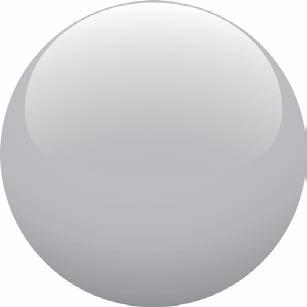
The year started so promisingly, with the world finally emerging from the pandemic, leading to a surge in demand for salmon, which in turn brought higher prices.

It ended on a downer with the industry, in Norway at least, in a state of semi-depression brought about by major structural changes and potentially punishing new government taxes, which have already led to layoff notices being sent to hundreds of employees, mainly in salmon processing.

For an industry that feeds millions of people around the world with high-quality protein and provides gainful employment for tens of thousands more, salmon farming faces an extraordinary amount of turmoil.

The past 12 months has been no different, with regular attacks
The situation in Iceland is a lot brighter, with several companies expanding or planning major growth programmes.
The country received a huge boost when Mowi bought a controlling interest in Arctic Fish from its previous majority shareholder, Norway Royal Salmon.





The move was also seen as a shot across the bow to Norway, reminding the government that the company can invest elsewhere.
However, Iceland is also planning
A year that started brightly ended with a threat for the big producers
tax rises on the industry in 2023, which is causing some concern.
It is Norway where most of the drama was centred last year. Russia’s invasion of Ukraine in February was the first setback. It knocked the industry sideways for a while as sales to Russia, Ukraine and Belarus came to a halt. Some feed companies stopped exporting to Russia, even though there was no government ban on this commodity.
The war also began to stoke inflation as energy prices took off following Russia’s decision to curb
gas exports.
But with salmon prices approaching NOK 100 a kilo (£8.33), the sector was more than able to overcome any inflationary pressures.

That became evident as the larger farming companies started to publish record revenue and profit figures for the first and second quarters of 2022. Norwegian Finance Minister Trygve Slagsvold Vedum was quietly taking note, but more about him later.
Meanwhile, a large part of the industry was having its own internal
Opposite from top: Icelandic fish farm; Norwegian fish farm; Trygve Slagsvold Vedum
This page from top: Mowi farm in Beitveitnes, Norway; Norwegian fish farm cage structure
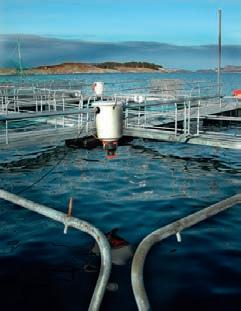
conflict centred around SalMar’s bid for the NTS group and its prize subsidiary business, Norway Royal Salmon. Mowi also considered a bid, but pulled back.
Essentially it was a battle between two giants of the industry, SalMar founder Gustav Witzøe and Helge Gåsø, the former university art and economics student who created his own aquaculture empire.




Both men grew up on the small island of Frøya in Norway, but despite that they could hardly be described as bosom pals.

Witzøe badly wanted NRS – Gåsø tried to make sure he didn’t get it, but eventually lost out and was even voted off the board of the group he created. Not a man to take defeat lying down, he is currently making a comeback with his new business, Frøy Kapital AS.


SalMar is now Norway’s second largest salmon producer, not too far behind Mowi.
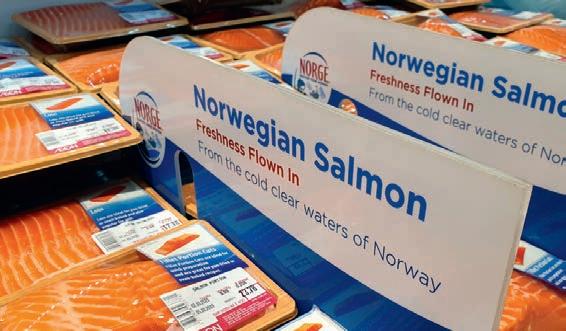

I expect to see further mergers and acquisitions in Norway this year, particularly among the smaller private companies whose owners face the additional burden of a wealth tax.

This brings us onto the government’s proposed ground rent tax (also referred to as “resource rent” tax), which threw the industry into a spin when it was announced in the September budget.
Not unreasonably, the government says salmon companies are using
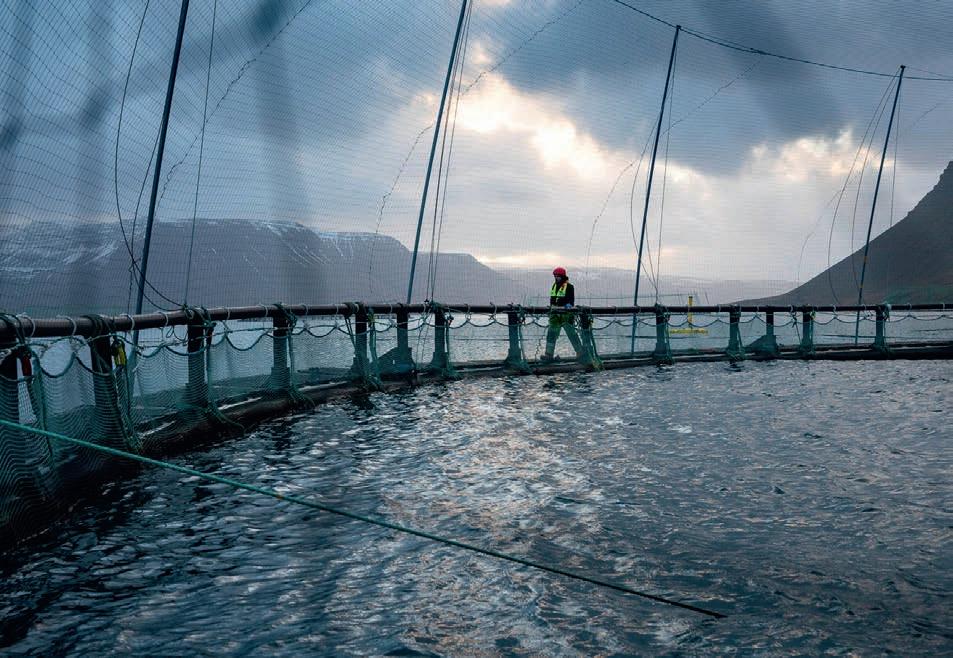
natural resources such as land and water so they should pay more for the privilege. The question is how much more?
Businesses had been expecting some form of additional taxation, but not something that is going to land them with a total tax bill of at least 62%.
Industry reaction was both swift and brutal with the larger companies boycotting a salmon permit auction two weeks later, costing the exchequer an estimated NOK 4bn (around £340m).




Then came a mass postponement of investment plans along the Norwegian coast totalling close on NOK 40bn (£3.4bn), followed by hundreds of layoff notices being sent out by SalMar, Lerøy Seafood and others.
The flurry of announcements suggests an element of coordination among the various companies. Whatever the motive, their actions

Opposite from top: Arctic Fish farm; Norwegian salmon; Gustav Witzøe; Helge Gåsø
This page from top: Bird’s-eye view of Ocean Farm 1; Norwegian salmon farm
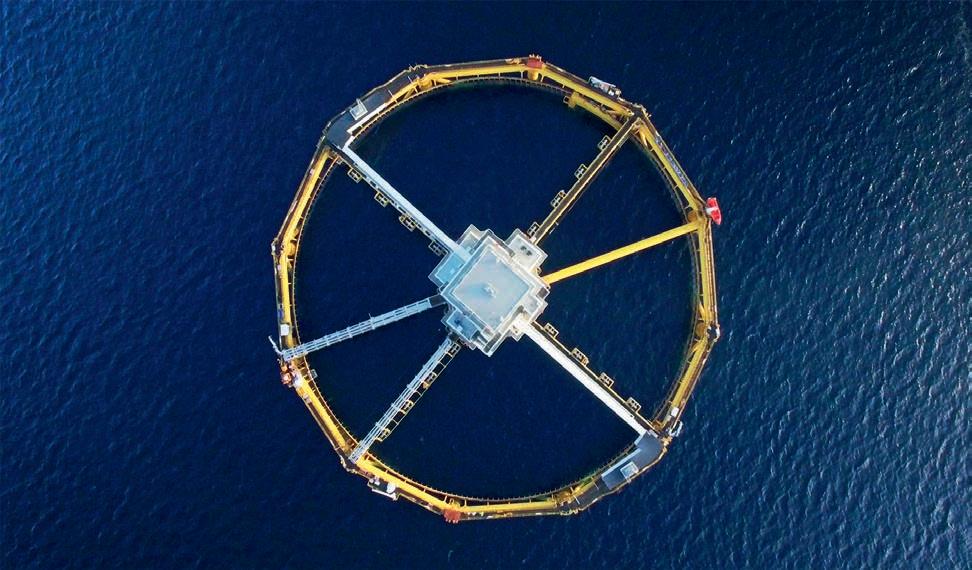
have certainly alarmed the thousands who work in coastal processing centres, with local mayors belonging to Vedum’s Centre party and union shop stewards, who would normally support Labour, calling on the coalition government to step back.
So far Vedum is standing firm, telling Norwegian newspapers that ground rent tax will be brought in. He has hinted there could be
“I expect to see further mergers and acquisitions”
concessions without stating what they might be.
The tax plan is opposed by the Conservatives and the more rightwing Progressive Party, while the Liberal Party has called for it to be postponed until 2024. But they do not have a majority in the Storting, Norway’s parliament.
Also the industry sometimes forgets the likes of Mowi, SalMar and Cermaq got many of their farming licences for free and they would be worth NOK 40 billion (£3.4 bn) under today’s system. Charging for permits
did not start until 2002.
Assuming Vedum gets his way, even with amendments, coastal salmon farming in Norway will change. Farms will become smaller so they fit into the 4,000–5,000 tonne exemption bracket and more investment will go overseas, which could be to Scotland’s advantage if it can overcome some of its biological problems.



Mowi wasted no time with its purchase of Arctic Fish, previously owned by Norway Royal Salmon, towards the end of the year.




“Mowi wasted no time with its purchase of Arctic Fish”
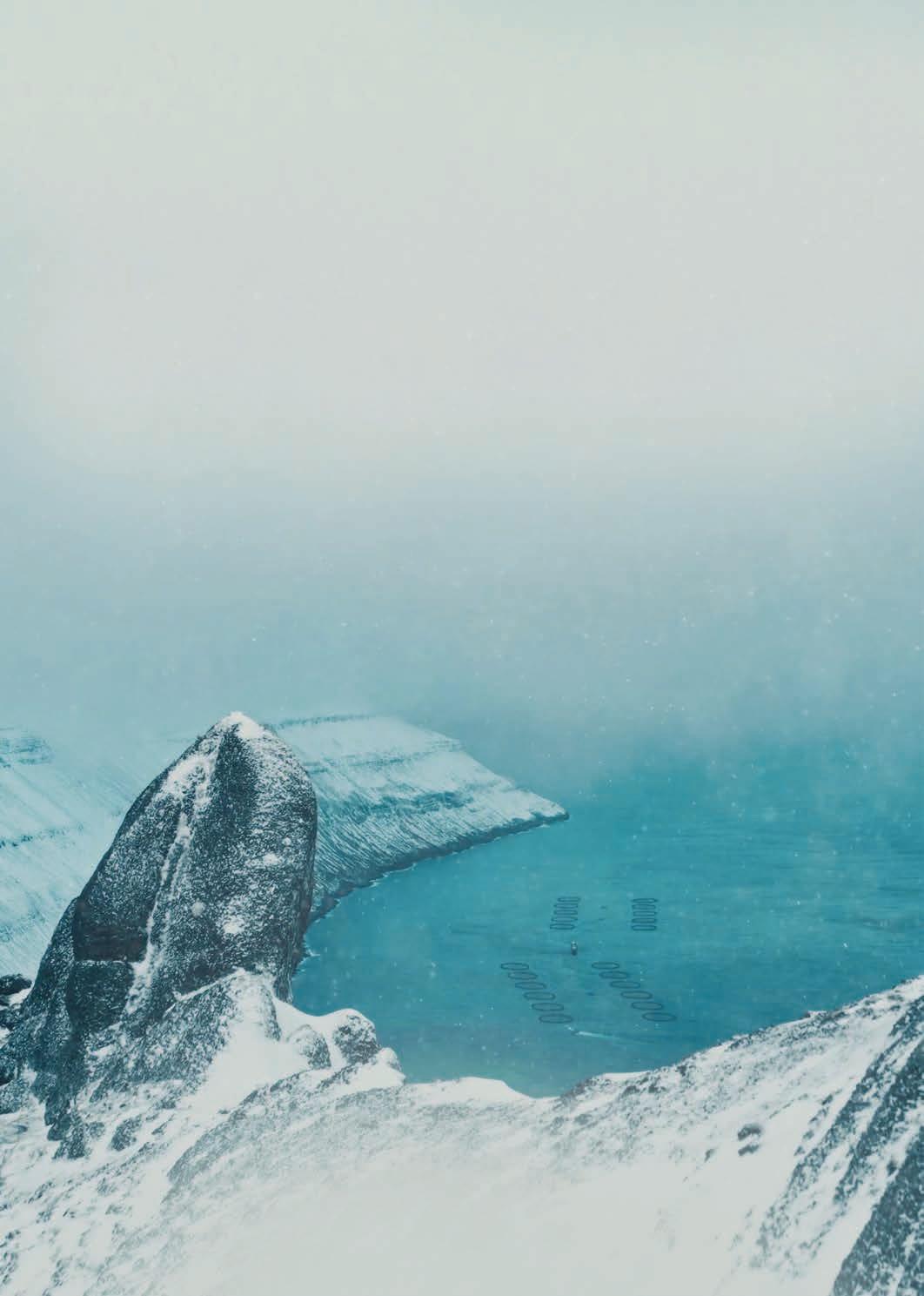
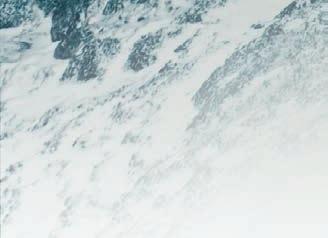


 Specialized in the tough high energy sites
High quality cage nets and robust mooring solutions made for the harsh conditions of the North Atlantic
Specialized in the tough high energy sites
High quality cage nets and robust mooring solutions made for the harsh conditions of the North Atlantic
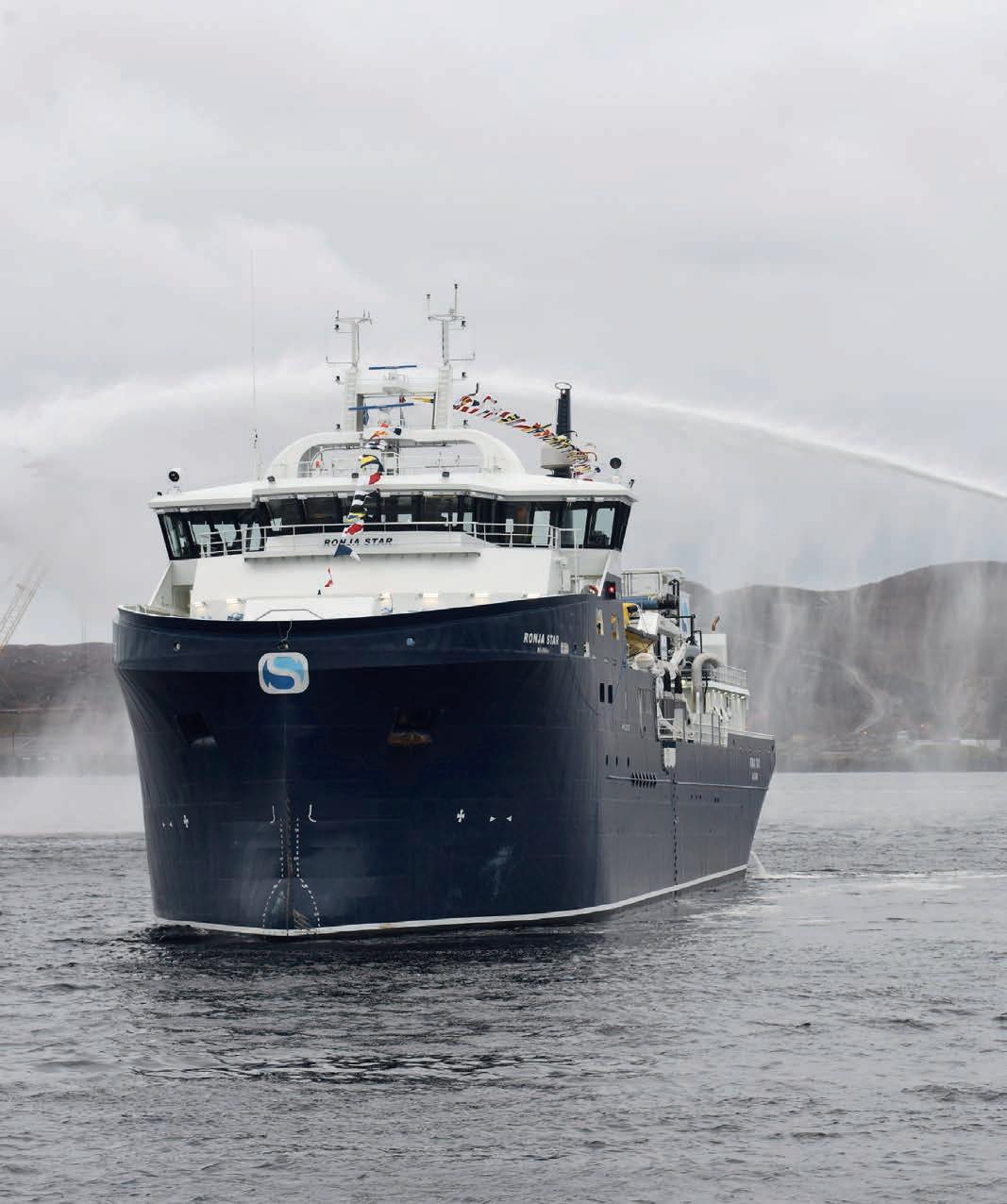
With more than 600 staff across 60 sites on the Scotland’s West Coast and The Hebridean Islands, Bakkafrost Scotland’s ambition remains to become the leading and most sustainable salmon producer in Scotland.

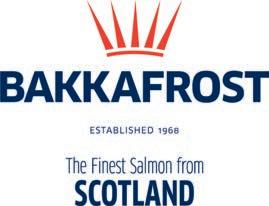
Its five-year “Fresh Approach” strategy is underpinned by its Healthy Living Plan which outlines priorities under the following five sustainability pillars.
In 2021, Bakkafrost Scotland strengthened this commitment by linking its financials to performance and progress on sustainability targets as well as announcing a five-year sustainable growth plan. This includes a substantial investment programme across our value chain to strengthen, grow and transform the business. A fundamental element is the development of innovative recirculating aquaculture systems (RAS) for the freshwater stages of the life cycle and investment in the fleet.
Healthy fish and a sustainable approach are the keys to success
As an integral part of the five-year investment and sustainability plan, the Bakkafrost Group has committed to an investment programme of £711m to increase its worldwide output of premium salmon by more than 40%. A substantial proportion of this investment will, of course, be made in Scotland.
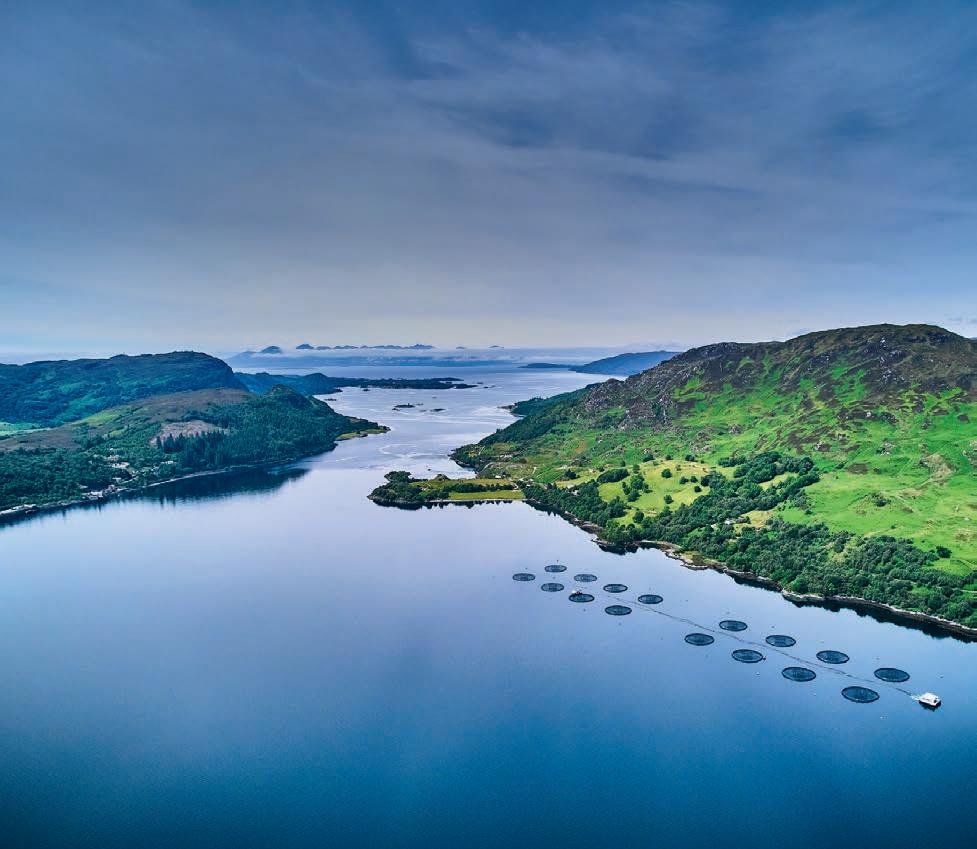
The investment is creating jobs, driving forward rural economies, developing business performance and improving day-to-day operations.
Sustainable growth of Bakkafrost Scotland is a priority. This is being
realised by introducing industryleading RAS freshwater infrastructure for larger smolt production.
RAS technology will eventually be used across all freshwater production, transforming Bakkafrost Scotland’s operations.
The year also saw Bakkafrost Scotland pick up two key awards at the Highlands and Islands Food and Drink Awards in October, underlining the importance and success of its transformational sustainability strategy and the quality of produce it makes.
With a total of 15 categories, The Highlands and Islands Food and
Right:


Drink Awards, now in their 17th year, recognise the very best products, food and drink experiences, outstanding retailers and businesses demonstrating sustainability, quality and diversity. The two awards won were Primary Producer, sponsored by Salmon Scotland and Sustainability, sponsored by Scotland Food and Drink.
Awarding Bakkafrost Scotland, the judging panel said: “This business nurtures a positive culture of continuous improvement and best practice – integral to their sustainable development”.




A key element of the investment
was the arrival in November of the largest wellboat vessel in the Scottish aquaculture industry.
The hybrid diesel-electric vessel, commissioned from the world’s leading wellboat operator Sølvtrans in Norway, boasts world-leading technology with an FLS mechanical sea lice removal system and freshwater treatment using a reverse osmosis system for de-salination of water producing freshwater to improve gill health and remove sea lice.
It has been specifically built to handle fish with care, while increasing biosecurity in line with Bakkafrost Scotland’s sustainability strategy which will see an increase in the use of freshwater treatments


across its marine sites on the West Coast of Scotland. Bakkafrost Scotland senior management, MP Angus Brendan MacNeil and MSP Alasdair Allan and, as well as local government representatives officially “welcomed” the Ronja Star at a reception in Stornoway on Friday 18 November.




The vessel has state of the art life support systems, which includes high-capacity oxygen production, a carbon dioxide removal system, and a water cooling system to ensure the fish are kept in optimal condition during treatment. In addition, the vessel has an automatic cleaning system, alongside sensors and cameras to monitor fish and water quality.





“Sustainable growth of Bakkafrost Scotland is a priority”
The Ronja Star is fitted with dieselelectric propulsion and a battery hybrid solution which reduces fuel consumption and emissions, all while generating less noise.
Our people remain our greatest asset. Their health and safety are paramount; providing a safe working environment and ensuring we nurture a culture of continuous improvement and share best practice through our training and development programmes are priorities.
Bakkafrost Scotland continues to invest in our people through modern apprenticeship programmes, health and safety campaigns, positive recruitment projects and our recently launched Healthy Living Awards for individuals, teams or groups who have gone above and beyond to
contribute to the responsible and sustainable development of the business, showing commitment to the sustainability pillars in our Healthy Living Plan.
We’reproudtoinvestinModern Apprenticesandhaveover 40apprenticesacrossour team,undertakingaskillsbasedqualificationinsubjects includingAquaculture,ITand Food & Drink.


James Ronald is Marine Site Manager at Upper Loch Fyne in Argyll and he joined Bakkafrost Scotland 16 years ago as a Harvest Operative. This was his journey.

“I’ve received lots of training over the years with the company including advanced powerboat, sea crane, forklift, first aid and an SVQ Level 4 in Aquaculture.
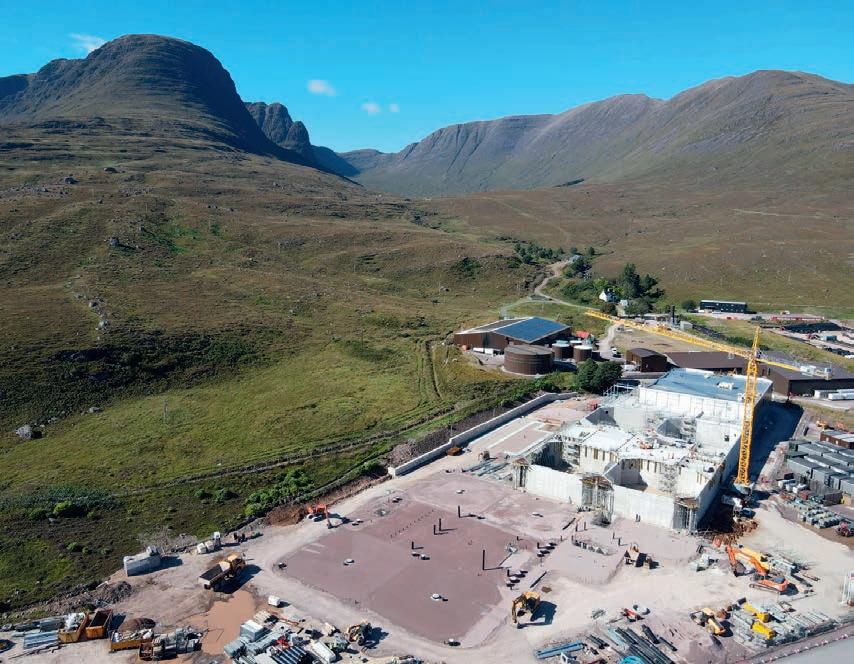
“It offered flexible learning which allowed me to enhance my career while working around my home life. I manage three farms on Loch Fyne and I also have a one-year-old son, so finding spare time can be difficult.









“I’ve benefited greatly however and will carry the knowledge and skills throughout my career.


“An apprenticeship allows you to build up your knowledge, understanding and skills and gain a qualification at the same time. It’s a no brainer and I would encourage anyone who is interested in aquaculture to get involved.”



Recirculating aquaculture systems (RAS) technology will transform the Bakkafrost Scotland business and is integral to our aim to become the leading and most sustainable producer of salmon in Scotland.


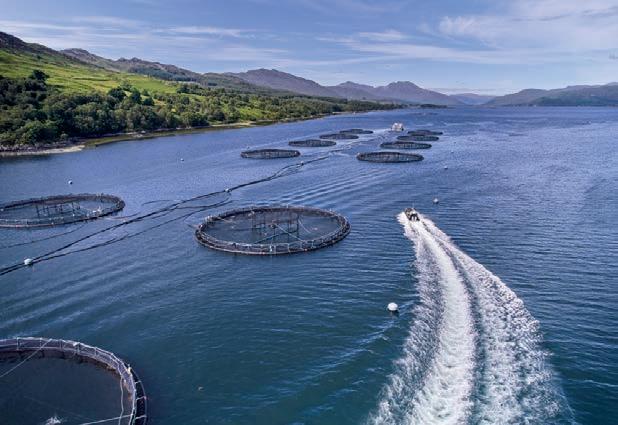

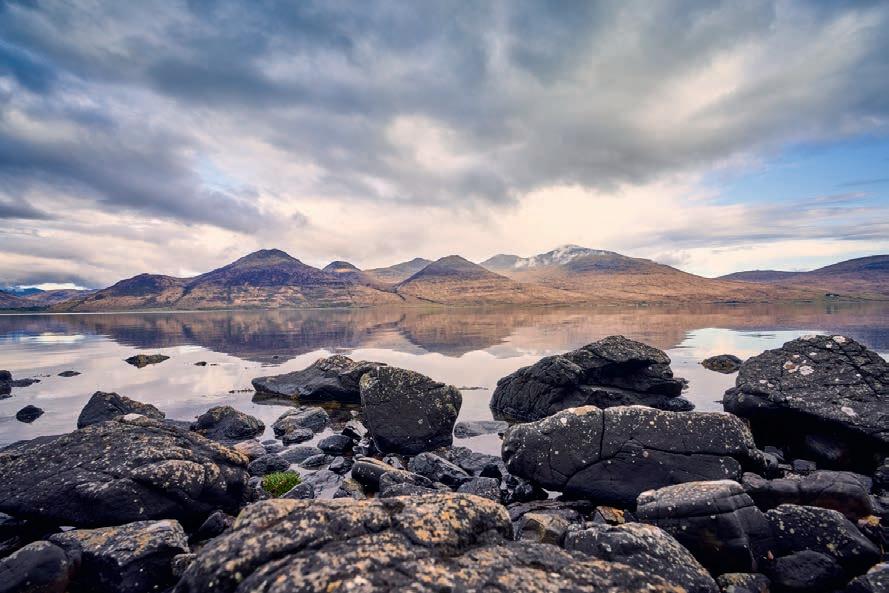
Our new RAS facility at Applecross will be fully operational by 2024. It will not only be the largest RAS facility in Scotland, it will also be the most sustainable, with an ambition to be 100% powered by our own solar power and locally produced renewable energy. There will also be a reduction of more than 90% in both waste and water consumption.
Bakkafrost Scotland is committed to creating shared value in the rural communities in which we live and work. Its Community Charter pledges our commitment to our people, suppliers, and communities.
















As part of this, our Community Fund encourages staff to nominate local groups, causes and charities in their community, which promote health and wellbeing or stewardship of the natural environment, to receive funding support.
Since its launch, over 100 staff have nominated groups including community food banks, schools who needed support to purchase equipment or to take part in outside activities, sports teams, charities and social enterprises for funding.
A key part of our community engagement programme is supporting local, traditional, cultural and sporting events such as the Skye Half Marathon, the Cowal Gathering and the Lochcarron Highland Games. These are all key community events



















and some have been a highlight of the rural calendar for centuries.
Opposite from top: Mull; Bakkafrost Fish farm; Farm worker




















This page from top: Farm workers; Healthy community

“Our people remain our greatest asset ”
As the year began, we reported that the Department for Environment, Food and Rural affairs (DEFRA) had pledged an additional £75m for the UK’s beleaguered seafood industry.
This included a £65m infrastructure scheme for projects such as modernising ports and harbours, as well as increasing capacity and efficiency at processing and aquaculture facilities. Up to £10m was also earmarked to be used to encourage new entrants into processing, catching and aquaculture, and for training existing workers.
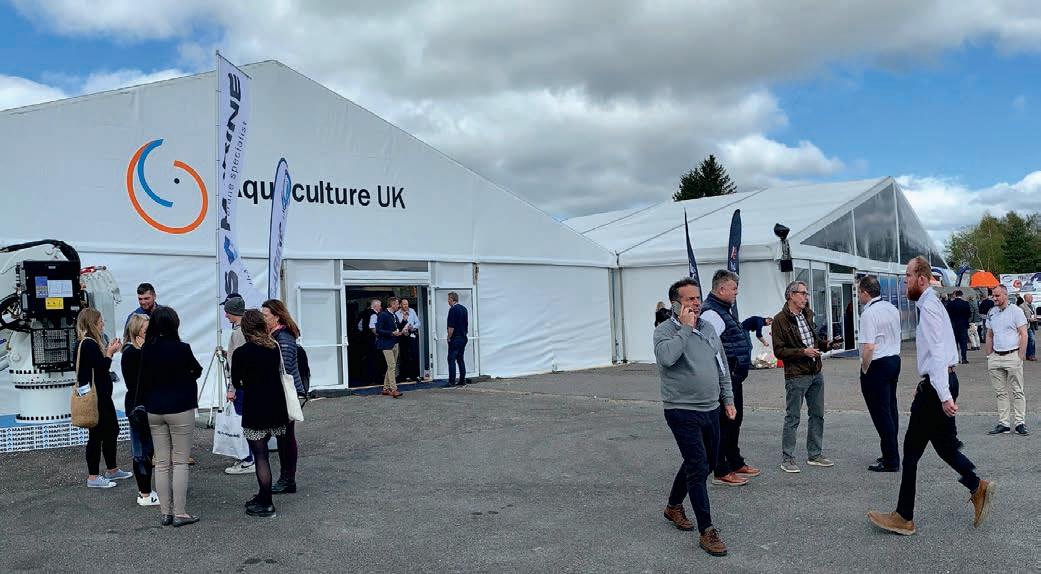
The two funding schemes were the second and third parts of an £100m UK Seafood Fund aimed at “levelling up” coastal communities – and counteracting the twin impacts of Brexit and Covid-19.
The start of the year also saw Scottish Sea Farms start the process of taking on the Shetland assets formerly owned by Grieg, which had struck a deal in the previous year to sell its last remaining Scottish assets.
The deal, reported to be worth £164m, was cleared by UK competition authorities in early December and the sale finally went through on 15 December. The assets concerned included 21 salmon farms across Shetland and Skye, a freshwater facility and a salmon processing plant.
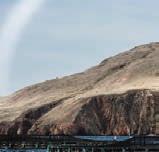


In February, fish farmers expressed their unhappiness at a new rent regime announced by Crown Estate Scotland, which will see some rents increased by as much as 95% as well as ending the Outer Islands Discount.

The new rents, which will be introduced in phases from January 2023, mean that the overall charge for finfish producers will be 1.5% of production turnover. Shellfish producers will see an increase in minimum rents, but otherwise their rents stay the same.
Alex Adrian, Aquaculture Operations Manager at Crown Estate Scotland, said: “This review was essential to ensure that we keep up with the pace of an ever-changing sector.”
Scotland’s aquaculture community mourned the passing of one if its pioneers, Sir William Lithgow, who died on 28 February. He was, among many other achievements, the founder of Landcatch, now part of Hendrix Genetics.



February also saw the publication
of the long-awaited review of aquaculture by Professor Russel Griggs OBE. As expected, the Griggs Report advocated sweeping reform of Scotland’s convoluted consent system. It proposed that different regulatory solutions are developed for finfish, shellfish and seaweed production. A single consenting document would be required for all forms of aquaculture and producers would pay a single licensing payment based on the tonnage output of the site concerned. Portions of the funds raised through the licensing charge would be earmarked for the benefit of the local community and for supporting scientific research.
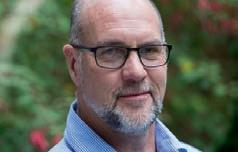
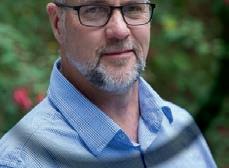

What was perhaps less expected was that Griggs did not pull his punches as far as the existing system was concerned, describing it as “not fit for purpose”.
He also had strong words for the “…degree of mistrust, dislike, and vitriol at both an institutional and personal level between the industry (mainly finfish), certain regulators, parts of the Scottish government and other stakeholders”.
Rural Affairs Secretary Mairi Gougeon said: “This is a comprehensive piece of work by Professor Griggs… I welcome the ambitious range of recommendations he has made and


“Griggs did not pull his punches as far as the existing system was concerned”
we accept them all in principle.”
The Scottish government committed to publishing a Vision for Aquaculture by the end of 2022, taking account of the Griggs recommendations. At the time of going to press it was expected to come out before the Christmas recess.
In May, Mairi Gougeon opened Aquaculture UK, the trade show and conference, which returned to Aviemore after a four-year break. The show recorded more than 2,600 visitors. Aviemore was also the venue for the UK Aquaculture Awards, in which – among other winners – Kames Fish Farming was named Best Aquaculture Company and the Finfish Farmer of the Year was Stephen Woods of Scottish Sea Farms. Jim Treasurer from FAI Farms received an award for Outstanding Contribution.
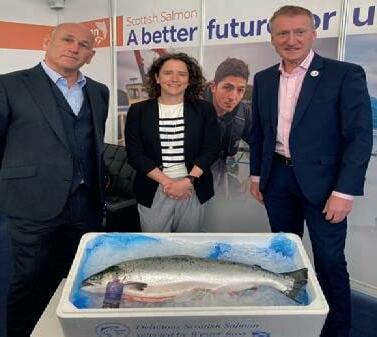

Also in May, the Food and Drink Federation reported that Scotland’s total food and drink exports for 2021 were up 15% on the previous year, with Scottish salmon as the UK’s biggest fresh food export. Overseas sales reached £614m in 2021.
In July, there was another cost hike for fish farmers, this time from the Scottish Environment Protection Agency (SEPA), which said an increase in its charges was
necessary to fund the organisation’s expanded role as a regulator for the sector. The application fee for pens holding a biomass of more than 1,500 tonnes is set to go up from £4,444 to £32,000, with a smaller increase to £26,617 for applications between 50 and 1,500 tonnes.
Salmon Scotland said that SEPA’s slow decision-making did not justify the higher charges. The trade body was also campaigning on behalf of Highlands and island communities, with a plea to earmark some of the money the state receives from fish farm rents to help coastal areas tackle the housing crisis.
Also in July, it emerged that Mowi –with very little fanfare – had snapped up one of the few remaining independents in the sector, Wester Ross Fisheries. Wester Ross continues to trade under its own name and it will be interesting to see how its very individual approach to aquaculture – hand-rearing and hand-feeding its fish, with low stocking densities – continues as part of a larger group.
Mowi’s founder and Managing Director Gilpin Bradley is now Business Development Director –
“Salmon Scotland said that SEPA’s slow decision-making did not justify the higher charges”
Farming, Scotland, with Mowi and, in October, he was named Ambassador of the Year at the Highlands and Islands Food and Drink Awards 2022.



The Scottish Salmon Company is also no more – but only because it has changed its name to Bakkafrost Scotland, reflecting its acquisition three years ago by the Faroesbased Bakkafrost Group. Ian Laister, Managing Director of the Scottish business, said: “’Bakkafrost Scotland’ cements our position on the global stage, while retaining our proud Scottish provenance.”



Brexit issues continued to be a sore point for the industry and, in August, Salmo Scotland’s Chief Executive Tavish Scott met with UK Fisheries Minister Victoria Prentis in Shetland to talk about the problems – especially the delays of up to 48 hours at the Channel ports.








In September, we reported that the Scottish government’s proposed Wild Salmon Protection Zones, which will restrict new and existing fish farms in order to protect wild fish from sea lice and other threats, will be extended to cover wild sea trout. The new zones are expected to be fully in force by the end of 2023.
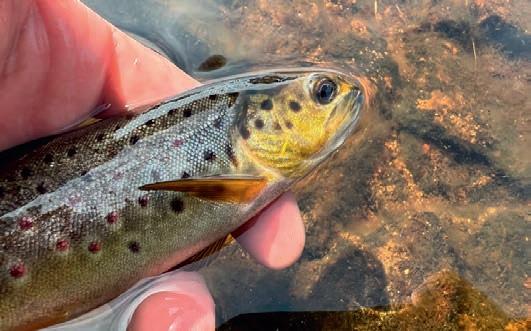
Meanwhile, two fish farming applications were rejected at the planning stage. A proposal for a farm using semi-closed cages on Loch Long was turned down by the Loch Lomond & The Trossachs National Park Authority, while Mowi’s application to expand its site at Loch Hourn

with fewer but larger pens was also turned down after a concerted campaign by objectors.



Cooke Aquaculture found more success when Orkney Islands Council approved its application for a new salmon farm site in the north of the islands, despite vociferous opposition. The six-cage site will be based at East Moclett, off the island of Papa Westray in Orkney’s North Sound, with permission for up to 3,850 tonnes of biomass.
As the year draws to a close, the picture in Scotland is that of a broadly supportive government, less sympathy for the industry at local level and the prospect of significant reforms to the consent system.



Opposite from top Aquaculture Awards 2022 Winners; Salmon Scotland Chair Atholl Duncan, and Chief Executive Tavish Scott, with Rural Affairs Secretary Mairi Gougeon at Aquaculture UK, Aviemore
This page from top: Loch Hourn; Salmon protection zones will be extended to include sea trout; Ian Laister; Gilpin Bradley at the Highlands and Islands Food and Drink awards 2022, with Nicky Marr, host (right) and Margi Campbell, Saffery Champness (left)
The Covid lockdowns have accelerated a permanent change in our buying habits
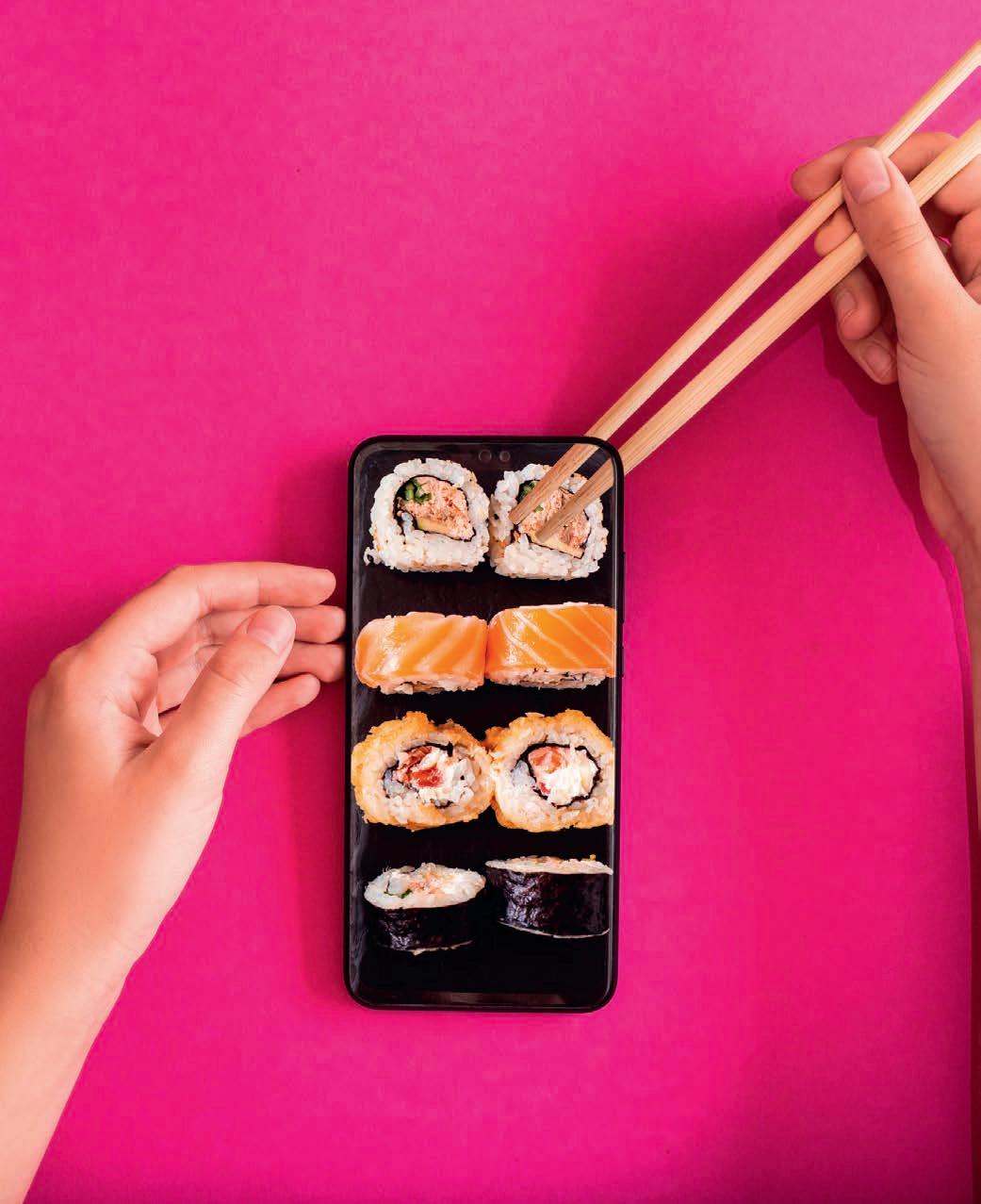
Arevealing study from Norway has found that the pandemic changed seafood shopping habits more than many people may realise.
Leaving aside the unwelcome personal impact in health terms, there is evidence to show that Covid has accelerated innovation and trends that otherwise might not have happened for several years.
The 2022 report was compiled by the Norwegian Seafood Council and it takes a close look at developments such as the expansion of e-commerce and how people now shop for seafood.
The study reports: “At the very cutting edge, we are seeing everything from live stream to voice commerce. More common, though, is a growing blend between online and traditional retailers – resulting in so called ‘click and mortar’ stores.
“Convenience has also been taken to new levels. Last-mile providers
in cities around the world now offer delivery – of takeaways, but increasingly of groceries – in as little as 10 minutes.”
These services have boomed under the pandemic as people stayed home. They have also given rise to a completely new type of grocery store: “dark stores”. These are premises that have closed to the public and now operate only delivery services.
The report continues: “The rhetoric around sustainability is something else that has exploded under the pandemic. Understanding, monitoring and reporting on sustainability is a must – and something that is increasingly a consumer requirement as well.”
It points out that sustainability is not just about the consumer. This catchword covers a huge – and growing – array of issues with “sustainability” having a different meaning for different people.
“But certain issues are certainly more relevant to the seafood industry



”
Opposite: Ordering sushi online
Left: Hello Fresh delivery

“It is not just young people who want sustainable food sources or to shop online
Above: Frying a salmon fillet
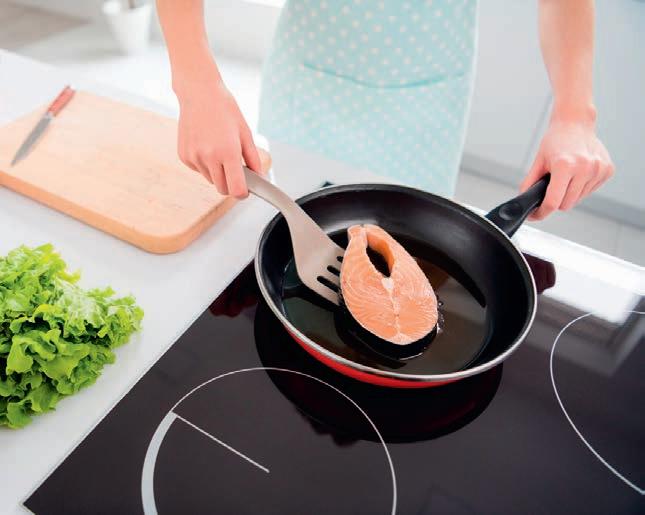
Opposite: Seafood dinner; Salmon on ice
than others. For example, the life of fish below water (fish welfare) is of particular relevance these days, while the younger generation is now more concerned about sustainability and climate change.”
The study also suggests: “Some of the innovative products and plans around fish and seafood are focused on getting younger people to eat more of these healthy, low-carbonfootprint sources of protein.
“Younger generations perhaps best personify an increasingly complex and demanding consumer, but it is not just young people who want sustainable food sources or to shop online or enjoy the convenience of speedy grocery delivery.
“These are trends are not confined to clean-cut demographics. It is something that affects us all.”
The overwhelming consensus is that e-commerce is here to stay. Fuelled by the pandemic, it now stands for a little over 30% of all global chain retail sales.
The Norwegian Seafood Council finds: “Over the last year we have seen restaurants begin to offer home kits in addition to the traditional
takeaway service. The concept is to offer consumers all of the ingredients and the recipes needed to make the restaurant’s signature dishes at home.
“When the pandemic hit, we saw a big spike in orders for home delivery of our products. This was mainly because both we and the consumers were forced to find new ways to deliver and acquire fresh and frozen fish products.
“We divide our services into two categories: fresh or frozen seafood delivered to the door of consumers, and home kits for preparing dishes we make at the restaurant.
“For now, the delivery of fresh or frozen seafood is the most popular, but we have seen an uptick in orders for home kits, especially when the weekend comes.
“In the future we see this new sales channel as a possibility to increase revenue, especially with the younger generation, where the popularity of buying seafood online is increasing.”
So what does this mean for bricksan-mortar shopping? It has been in decline for some time, but the sector is not giving up without a fight, with many shops including an online presence in their stores. The other plus is that customers still like to see or touch certain products.
What does all this mean for the seafood industry? In the Seafood Council’s annual consumer survey for 2021, 6,000 salmon consumers in a number of markets were asked how often they shopped for salmon across different types of channels.
Although numbers for online purchases were notable with an average of 15% saying “quite often” or “very often” for the markets surveyed – tradition still has a hold on the market: hypermarkets and supermarkets take the biggest share.
Consumers are also continuing to show a strong preference for the




traditional fishmonger and fish market
The respondents were then asked to think about the shop or market where they most often buy salmon and indicate how important a set of reasons are.
The drivers that most respondents rated as “very important” in the different markets surveyed were “quality fish and seafood brands”, “the fresh fish counter,” or “always reasonable prices for fish and seafood products”.
When looking at the data for buying salmon online (e-commerce websites or mobile apps), the top three markets for buying this way were all markets in Asia.
The study says: “We are aware that the seafood sector is continuously striving to improve through technology, best practices, research and innovation – all things that
collectively move us towards a more sustainable future.”
The study concludes that, essentially, the old way of thinking about shopping channels, such as simply online vs offline, have changed, with emerging markets such as China, India and Brazil at the forefront of these changes.
The UK, Canada and (surprisingly) Japan were among the countries that rated bottom in terms of regular online use.
The Council says: “We are aware that the seafood sector is continuously striving to improve through technology, best practices, research and innovation – all things that collectively move us towards a more sustainable future.
“So, in highlighting some of the challenges still remaining in terms of reaching the 2030 agenda, we hope to provide an actionable framework on which to structure future efforts in the seafood sector.
“That being said, several frameworks, defined methods and processes, specifically tailored for the corporate sector, already exist.”
Since the start of the Norwegian salmon adventure over 50 years ago, salmon has become the world’s most popular fish, says the Norwegian Seafood Council. This is shown by previous market surveys that have been carried out in several countries, in addition to large international surveys by the Council.
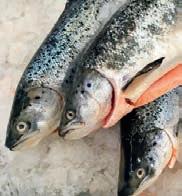
It says salmon is the fish that most people prefer for weekday dinners, weekend dinners and in restaurants.

“

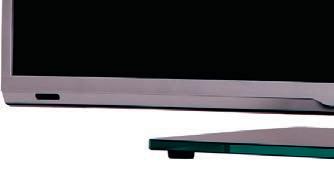

Increasing consumer awareness, building confidence and growing the seafood category continue to drive Mowi campaigns across the United Kingdom and beyond.
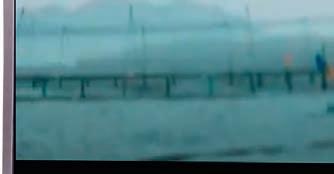
When Mowi conducted consumer research at a time when the UK was looking back on a year of covid lockdowns, survey results revealed that more than half felt



more inventive and enjoyment in the kitchen since cooking at home. The research also found that the majority of respondents admitted they reach for less healthy foods when they are feeling down, despite most recognising that diet can impact depression and anxiety. Of those looking for a healthier option, 64% ate fish at least weekly.
Speaking to the results, chartered psychologist Kimberly Wilson, said: “You might crave a burger, or maybe some chips but you – and

Above: National MOWI TV campaign Opposite: MOWI brand now has ASC endorsement


The Mowi brand is underpinned by hard work to raise consumer awareness and build confidence in its products
your brain – will be much better off eating wholegrains, vegetables and salmon.”
MOWI salmon brand – launched in early 2021 – continues to grow its range to satisfy this yearning for healthy, tasty and convenient foods, and is now available at Sainsbury’s, Tesco, Ocado, Amazon Fresh and ASDA. The company’s investment in captivating national TV advertising and digital campaigns have helped raise awareness and sales of not just salmon, but the entire seafood category.
Speaking about the company’s efforts toward consumer awareness,



James Cowan, Head of Sales at Mowi Consumer Products UK, said: “New for 2022 and a first for Scottish salmon brands, we are now very proud to say that due to the superb efforts of our farming colleagues, consumers will see the Aquaculture Stewardship Council logo on all our MOWI Scottish salmon packs. We believe our ASC achievement will bring new consumers to the seafood aisle and further enhance the sustainability credentials of our salmon.”
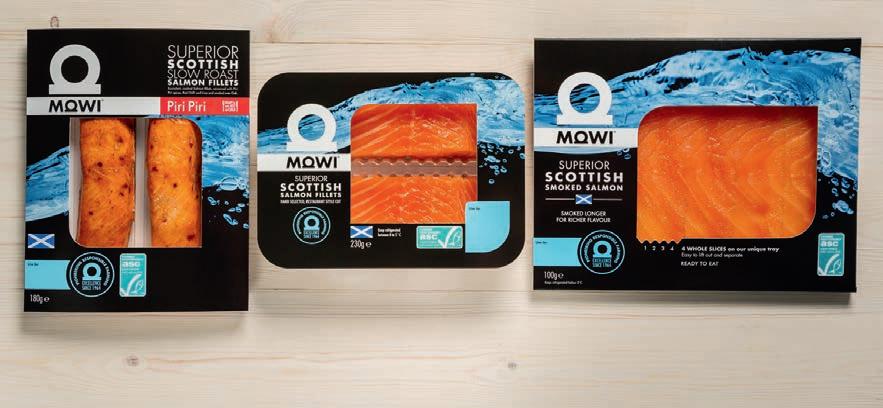
Retailing at over £15m, Harbour Salmon Co. is a Mowi brand that has modestly become the biggest fresh fish brand in the UK with over a million consumers buying regularly. Harbour Salmon Co. provides reliable quality and value – the top drivers for consumer purchasing.


Launched over 10 years ago, Harbour Salmon Co. is mostly famed for its delicious smoked salmon slices, which utilise the superb kiln smoking expertise and slicing capabilities of experts based at the company’s plant in Fife.
2022 saw Harbour Salmon Co. recognised in the “Top 50 Scottish Brands” by The Scottish Grocer.
Cowan adds: “Harbour Salmon is a versatile brand with opportunities for expansion in 2023. This great award from The Scottish Grocer stands proud alongside our past taste and innovation awards over the years
“We believe our ASC achievement will bring new consumers to the seafood aisle”
so our thanks to the team and customers alike.”
Creating new interest, the branded products appear to be having the desired effect both for Mowi’s sales and for bringing new consumers into the category.
Third-party oversight of Mowi’s business in Scotland continues to validate a high level of performance. Over 300 audits of Mowi’s farming operations by governmental, environmental and animal welfare organisations take place each year.


This robust third-party oversight and transparency has in part helped Mowi, for a third year in a row, rank as top sustainable protein producer in the
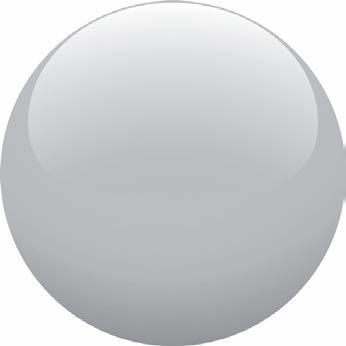
2021 Coller FAIRR Protein Producer Index.
The report assesses 60 of the largest listed global meat, dairy and aquaculture companies on ten environmental, social and governance themes aligned with the United Nation’s Sustainable Development Goals.


Aquaculture companies – primarily salmon companies – continue to perform better than animal protein producers on all risk factors, especially deforestation, biodiversity and antibiotics. Mowi is joined in the top five ranked companies by fellow aquaculture producers
Grieg Seafood ASA and Lerøy Seafood Group ASA, which rank 2nd and 4th respectively.
Mowi’s Chief Sustainability and Technology Officer, Catarina
IS CONSIDERED THE MOST SUSTAINABLE ANIMAL
PRODUCER IN THE WORLD
Martins, said: “I am delighted to see Mowi’s sustainability strategy and achievements being recognised in this global rating. For three years in a row now, Mowi is considered the most sustainable animal protein producer in the world. This achievement is the result of hard work and passion for what we do every day: producing food that is good for people and good for the planet.”
Third-party certification remains key to the company’s sustainability strategy, and is helping to build customer confidence in Mowi’s entire value chain, including feed,



farming and processing.
Of Mowi’s harvested volume worldwide, 98% is sustainably certified by a Global Sustainable Seafood Initiative (GSSI)-recognised standard: the Aquaculture Stewardship Council (ASC), Best Aquaculture Practices (BAP), or GlobalGAP.
In Scotland, all operations receive additional third-party oversight from the RSPCA. The RSPCA-approved animal welfare standard audits the rearing, handling, transport and harvest of farm-raised Atlantic salmon and covers both freshwater and marine growth stages. The RSPCA standards are based
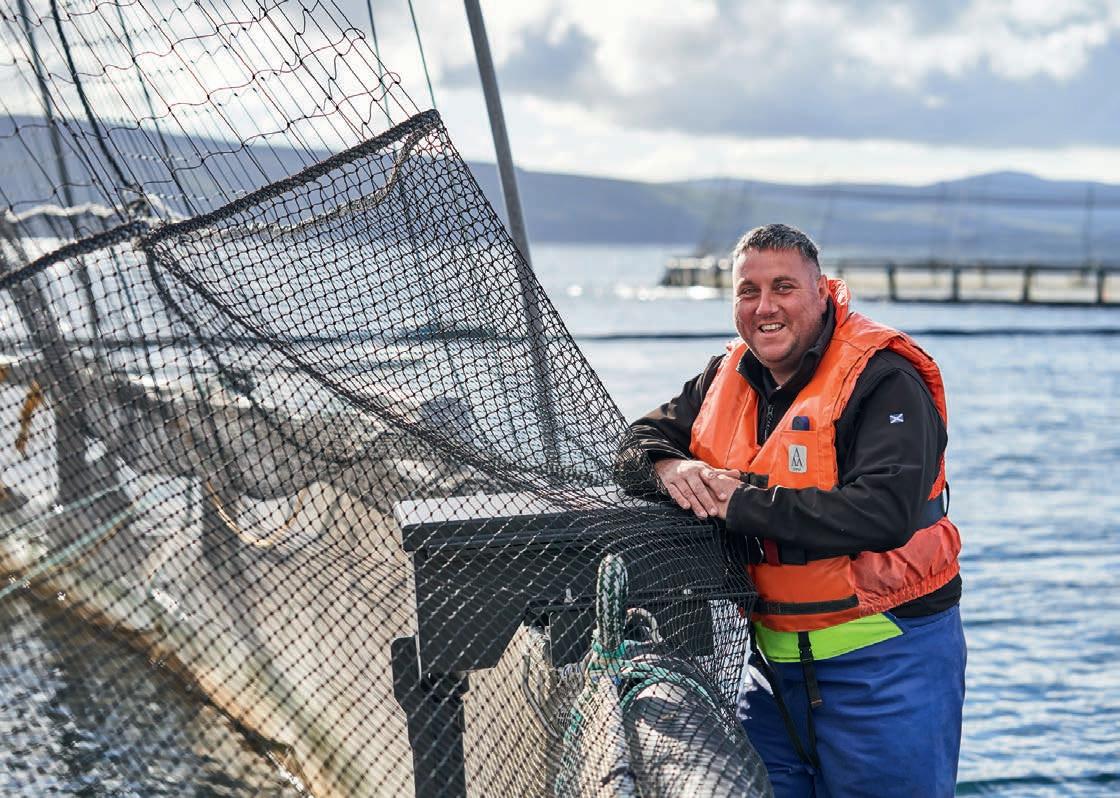
Opposite: Mowi Scotland Feed team
Below: Mowi Scotland Farming
Above: Mowi’s Salmon Wagon Opposite: Salmon fillet on a bun served by the Salmon Wagon
upon the “Five Freedoms” as defined by the UK’s Farmed Animal Welfare Committee:
• Freedom from hunger and thirst by ready access to fresh water and a diet to maintain full health and vigour.
• Freedom from discomfort by providing an appropriate environment including shelter and a comfortable resting area.
• Freedom from pain, injury or disease by prevention or rapid diagnosis and treatment.
• Freedom to express normal behaviour by providing sufficient space, proper facilities and company of the animal’s own kind.
• Freedom from fear and distress by ensuring conditions and care which avoid mental suffering.
Launched to help raise money for charities and communities across Scotland, Mowi’s custom-built “Salmon Wagon” serves up delicious barbequed salmon, with 100% of proceeds from the sale of food

“It is humbling to see the work being done at local level around the country”
benefitting local causes.
The Salmon Wagon took to the road in 2022, attending community events and raising thousands of pounds for local charities.
Charitable giving is a very important value to Mowi employees. Perhaps as important, the Salmon Wagon provides the company and its staff an opportunity to engage with communities and share great food.
Speaking about the success of the Salmon Wagon this year, Mowi Scotland’s community engagement officer, Jayne MacKay, said: “We built the Salmon Wagon in 2019 to engage with our local communities and raise funds for the causes closest to their hearts. Since then, we have attended numerous events around Scotland and been lucky enough to support a range
of charities and causes vital to communities.
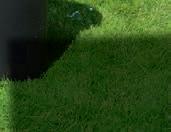
“It is humbling to see the work being done at local level around the country and in 2022 we are delighted to be able to help and support those in need through donations to food banks, mental health, children’s charities and other great causes.”
Charities across Scotland can apply in the spring of each year to have the salmon wagon attend their 2023 summer event. If successful, the wagon will arrive on location with fresh salmon and talented chefs, ready to raise valuable funds for your cause.

You can learn more and also sign up for all the latest Salmon Wagon news and events at mowisalmonwagon.co.uk.













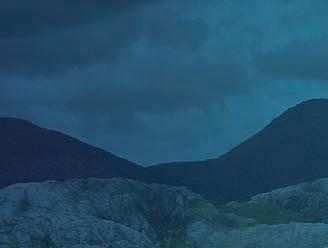
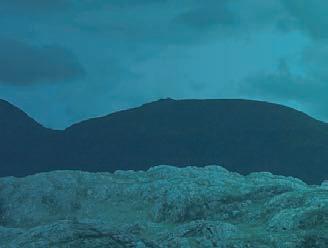

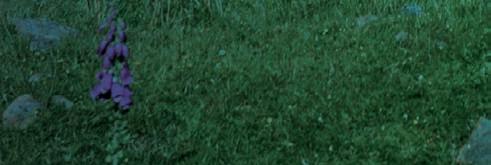



















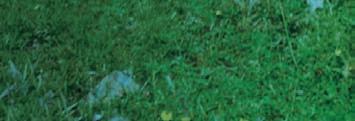


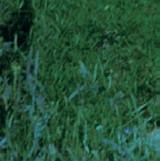
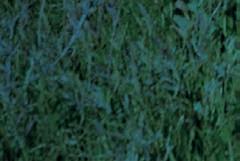






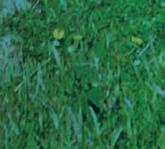



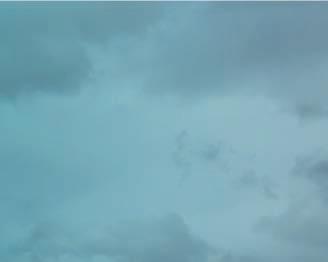


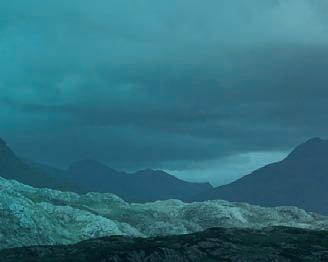
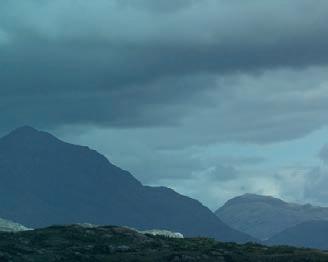
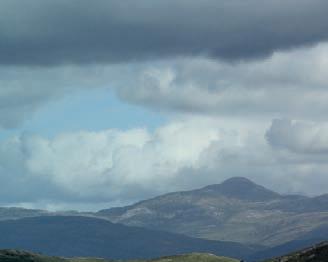

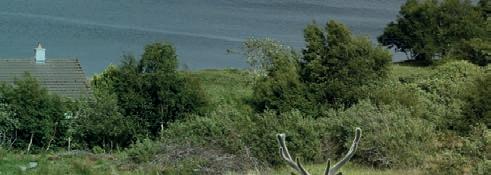

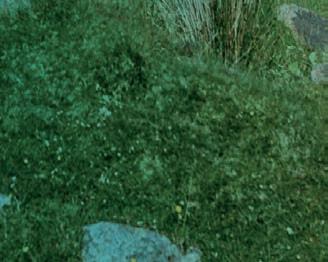
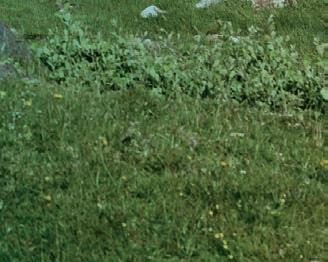
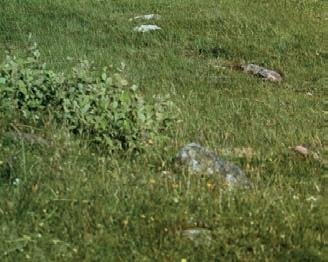



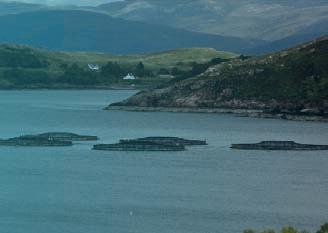


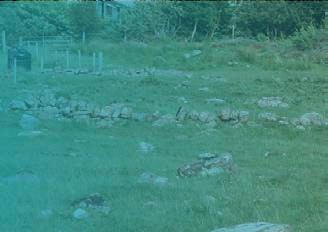
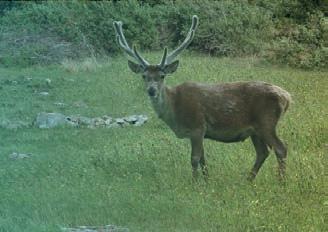











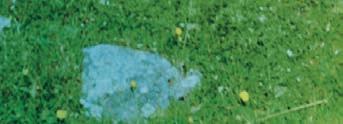













The Fish Farm Production Survey for 2021 shows that production of Atlantic salmon in Scotland last year was 205,393 tonnes. This represents a 7% increase on 2020 and is the highest level of production recorded in Scotland. The survey, based on data from the fish farmers, also shows that mortality continues to be a problem, with smolt survival for the 2019 input year class at 74.4%, down from 77.5% for the 2018 class. The production of rainbow trout increased by 8% in 2021 to 8,156 tonnes and production of cleaner fish was also up significantly from 19 tonnes to 38 tonnes, reflecting a drive to farm, rather than catch, wrasse and lumpfish.
The tables below summarise the results from the 2021 fish farms annual production survey (slight differences in these summary figures from figures in the main report are due to rounding).
The tables below summarise the results from the 2021 fish farms annual production survey (slight differences in these summary figures from figures in the main report are due to rounding).
The tables below summarise the results from the 2021 fish farms annual production survey (the slight differences in these summary figures from the figures in the main report are due to rounding).
Rainbow Trout (Oncorhynchus mykiss)

Total
2020 2021
Total production (tonnes) 7,5768,156 Production for the table (tonnes) 7,0327,655
Number of staff employed 134 146
Production for restocking (tonnes) 544 501
Mean productivity (tonnes/person)56.5 55.9
Number of staff employed 134 146
Number of ova laid down to hatch(millions)
Mean productivity (tonnes/person)56.5 55.9
Number of ova laid down to hatch(millions) 6.2 4.9
Number of ova imported (millions) 4.7 3.6
In 2021, the production of rainbow trout increased by 580 tonnes. Employment increased by 12 staff and mean productivity decreased to 55.9 tonnes per person. The number of ova laid down to hatch decreased by 1.3 million and the number of ova imported decreased by 1.1 million.
In 2021, the production of rainbow trout increased by 580 tonnes. Employment increased by 12 staff and mean productivity decreased to 55.9 tonnes per person. The number of ova laid down to hatch decreased by 1.3 million and the number of ova imported decreased by 1.1 million.
In 2021, the production of rainbow trout increased by 580 tonnes. Employment increased by 12 staff and mean productivity decreased to 55.9 tonnes per person. The number of ova laid down to hatch decreased by 1.3 million and the number of ova imported decreased by 1.1 million.
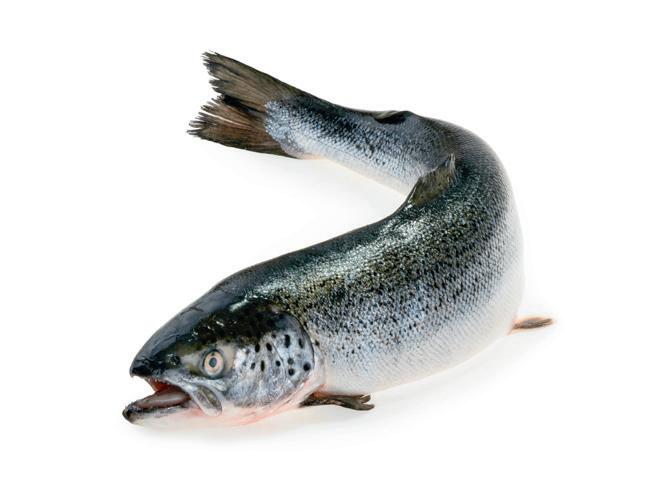
of ova exported (millions)0 0
Number of ova imported (millions)57.3
Number of smolts produced (millions)50.5 51.2
Number of smolts put to sea (millions)52.5 51.1
Number of staff employed 292 291
smolts put to sea (millions)52.5
Mean productivity (000’s smolts/person) 172.9 175.9
Number of staff employed 292 291
Mean productivity (000’s smolts/person) 172.9 175.9
The production of ova increased by 26.3 million in 2021 and the number of ova laid down to hatch decreased by 5.8 million. No ova were exported in 2021 and the number of ova imported decreased by 24.4 million from the 2020 figure. The number of smolts produced increased by 0.7 million. In 2021 the number of staff employed decreased by one and mean productivity increased by 3,000 smolts per person.
The production of ova increased by 26.3 million in 2021 and the number of ova laid down to hatch decreased by 5.8 million. No ova were exported in 2021 and the number of ova imported decreased by 24.4 million from the 2020 figure. The number of smolts produced increased by 0.7 million. In 2021, the number of staff employed decreased by one and mean productivity increased by 3,000 smolts per person.
The production of ova increased by 26.3 million in 2021 and the number of ova laid down to hatch decreased by 5.8 million. No ova were exported in 2021 and the number of ova imported decreased by 24.4 million from the 2020 figure. The number of smolts produced increased by 0.7 million. In 2021 the number of staff employed decreased by one and mean productivity increased by 3,000 smolts per person.
From the top: Rainbow trout; Atlantic salmon
Production tonnage increased by 13,264 tonnes with an increase in the mean harvest weight of grilse and pre-salmon, but a decrease in the mean weight of year 0 and year 2 salmon. Staff numbers decreased by 135 and mean productivity increased to 137.4 tonnes per person.
Production tonnage increased by 13,264 tonnes with an increase in the mean harvest weight of grilse and pre-salmon but a decrease in the mean weight of year 0 and year 2 salmon. Staff numbers decreased by 135 and mean productivity increased to 137.4 tonnes per person.
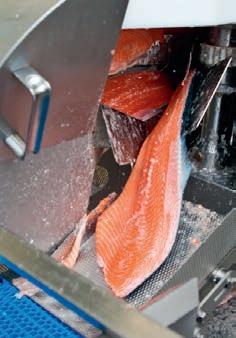


Survival (%)Years 0+1 Year 2 Total 2018 input year class 58.0 19.5 77.5 2019 input year class 54.4 20.0 74.4

The smolt survival rate for the 2019 input year class decreased to 74.4%. Mortality is included in the number of fish not harvested for human consumption, which also consists of fish that have escaped, been culled for production reasons, removed for sampling purposes or selected for broodstock production, as well as statutory culls.

Including brown/sea trout (Salmo trutta); halibut (Hippoglossushippoglossus); lumpsucker (Cyclopterus lumpus) and several species of wrasse (Labridae).
The smolt survival rate for the 2019 input year class decreased to 74.4%. Mortality is included in the number of fish not harvested for human consumption, which also consists of fish which have escaped, been culled for production reasons, removed for sampling purposes, statutory culls or selected for broodstock production.
Some figures are excluded from this report as providing them would reveal production information from an individual company.
Excluding halibut production.
Excluding halibut ova laid down to hatch.
information from an individual company. ªExcluding halibut production. bExcluding halibut ova laid down to hatch. In 2021, the production of other species increased by 18 tonnes from the 2020 total, although this figure does not include halibut production. Overall, employment increased by six in 2021. There was an increase in
Some figures are excluded from this report as providing them would reveal production information from an individual company. ªExcluding halibut production. bExcluding halibut ova laid down to hatch.
In 2021, the production of other species increased by 18 tonnes from the 2020 total, although this figure does not include halibut production. Overall, employment increased by six in 2021. There was an increase in the number of ova laid down to hatch during 2021 but any halibut ova laid down to hatch in 2020 were not included in the 2020 figure.

In 2021, the production of other species increased by 18 tonnes from the 2020 total, although this figure does not include halibut production. Overall, employment increased by six in 2021. There was an increase in the number of ova laid down to hatch during 2021, but any halibut ova laid down to hatch in 2020 were not included in the 2020 figure.
Number of Confirmed Escape Incidents from Fish Farms Notified to the Scottish Government
NUMBER OF CONFIRMED ESCAPE INCIDENTS FROM FISH FARMS NOTIFIED TO THE SCOTTISH GOVERNMENT
Species
Number of reported incidents which could have led to an escape of farmed fish
Number of reported incidents which did lead to an escape of farmed fish
Number of fish escaped
Rainbow trout 1 1 52
Atlantic salmon (freshwater stages) 0 0 0
Atlantic salmon (seawater stages)
Opposite from top: Salmon production; Smolt This page from top: Halibut; Salmon
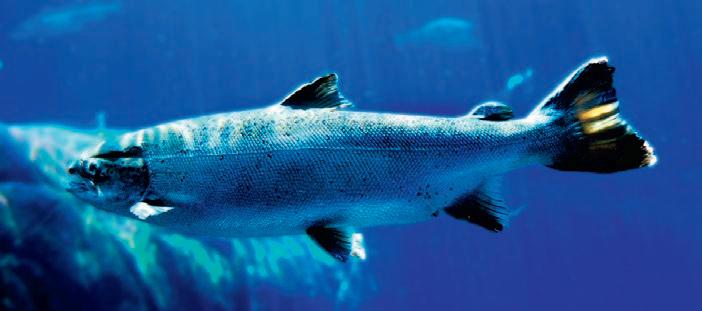


Production for the table in 2021 was 7,655 tonnes, an increase of 623 tonnes (9%) on the 2020 total. This accounted for 94% of the total rainbow trout production, an increase on the proportion to that produced in 2020. Also, an increase in the number of fish in the large size range and a decrease in the number of fish in the small and medium size ranges were observed.
Production for the table in 2021 was 7,655 tonnes, an increase of 623 tonnes (9%) on the 2020 total. This accounted for 94% of the total rainbow trout production, an increase on the proportion to that produced in 2020. Also, an increase in the number of fish in the large-size range and a decrease in the number of fish in the small- and medium-size ranges were observed.
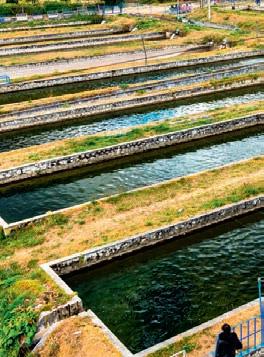









Table 1c: Production (tonnes) for the restocking trade during 2012-2021 according to weight category
Table 1c: Production (tonnes) for the restocking trade during 2012-2021 according to weight category
In 2021, production for the restocking of angling waters decreased to 501 tonnes representing a decrease of 43 tonnes (8%) on the 2020 total. This accounted for 6% of total rainbow trout production in 2021. These figures represent the tonnage of fish supplied to angling waters for restocking purposes; they do not account for the catch taken by anglers. There was a decrease in production of fish from all the size categories.
Production by Site
In 2021, production for the restocking of angling waters decreased to 501 tonnes representing a decrease of 43 tonnes (8%) on the 2020 total. This accounted for 6% of total rainbow trout production in 2021. These figures represent the tonnage of fish supplied to angling waters for restocking purposes; they do not account for the catch taken by anglers. There was a decrease in production of fish from all the size categories.
Table 2: Number of sites grouped by tonnage produced during 20122021
Table 2: Number of sites grouped by tonnage produced during 2012-2021
Production was reported from 27 of the 48 active sites. The number of producers in the 101-200 tonnes size bracket increased while those in the <1-25, 26-100 and >200 tonnes size brackets decreased. These figures do not include those sites specialising in the production of ova or young fish for on-growing.
Production was reported from 27 of the 48 active sites. The number of producers in the 101-200 tonnes size bracket increased while those in the <1-25, 26-100 and >200 tonnes size brackets decreased. These figures do not include those sites specialising in the production of ova or young fish for on-growing. Production by Method

Seawater production accounted for 5,144 tonnes (63%) and freshwater production the remaining 3,012 tonnes (37%). Production from all freshwater facilities decreased while production from seawater cage facilities increased during 2021.
Seawater production accounted for 5,144 tonnes (63%) and freshwater production the remaining 3,012 tonnes (37%). Production from all freshwater facilities decreased while production from seawater cage facilities increased during 2021.
Table 4: Number of companies and sites in production during 2012-2021
In 2021, the number of companies authorised by the Scottish government and actively engaged in rainbow trout production was 22. The number of sites registered and in production was 48.










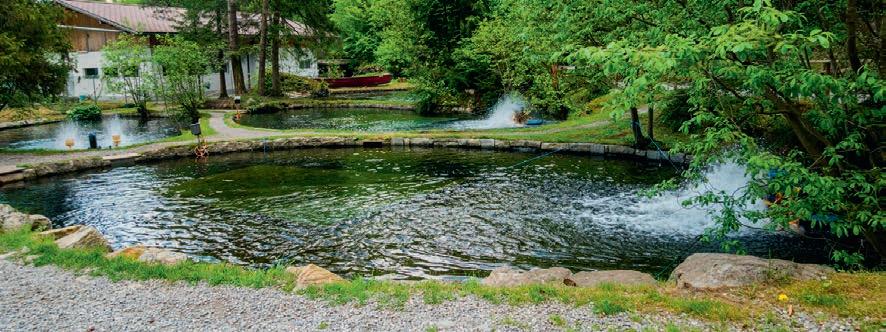
The overall number of staff employed in 2021 increased by 12 to 146. The number of full-time staff increased by 13, while the number of part-time staff decreased by one. Productivity, measured as tonnes produced per person, decreased by 1% in 2021, with no distinction between full- and part-time employees being made for this calculation.
The overall number of staff employed in 2021 increased by 12 to 146. The number of full-time staff increased by 13 while the number of parttime staff decreased by one. Productivity, measured as tonnes produced per person, decreased by 1% in 2021 with no distinction between full and part-time employees being made for this calculation.
Table 6: Production and staffing by area in 2021
Productivity was greatest in the west at 370.5 tonnes per site and 112.5 tonnes per person.

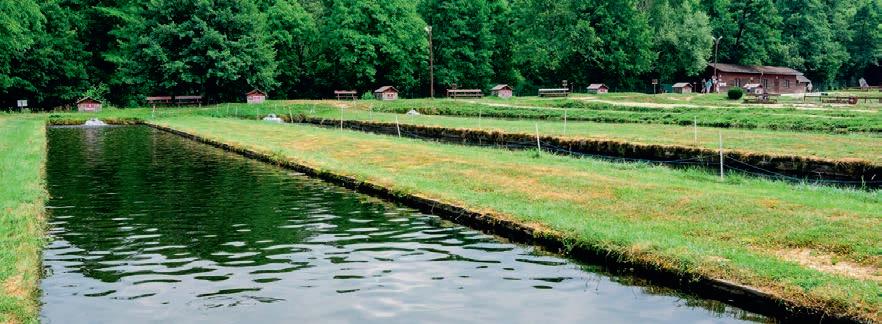
hatch during 2012-2021
Table 7: Number (000s) and proportions (%) of eyed ova types laid down to hatch during 2012-2021
Table 8: Number (000s) and sources of eyed ova laid down to hatch in 2012-2021
In 2021, the total number of eyed ova laid down to hatch decreased by 1.4 million (22%) on the 2020 figure. Imported ova came from only the Northern Hemisphere during 2021. The proportion of ova from GB broodstock increased (26% of the total) and the rainbow trout industry remained reliant on imported ova. Data on the importation of ova into Scotland are also available from the health certificates and are shown in Table 9a. Any discrepancy between the figures in Tables 8 and 9a is due to data being obtained from two independent sources.
In 2021, the total number of eyed ova laid down to hatch decreased by 1.4 million (22%) on the 2020 figure. Imported ova came from only the Northern hemisphere during 2021. The proportion of ova from GB broodstock increased (26% of the total) and the rainbow trout industry remained reliant on imported ova. Data on the importation of ova into Scotland are also available from the health certificates and are shown in Table 9a. Any discrepancy between the figures in Tables 8 and 9a is due to
Above: Trout ova



Suppliers within the European Union (EU) accounted for 74% of ova imported into Scotland during 2021 with the US accounting for the remaining 26%. In recent years, there has been a trend for producers to import part-grown rainbow trout into Scotland from Northern Ireland.
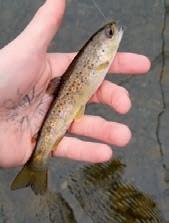
Table 10: Number (000s) of fry and fingerlings traded during 2012–2021
(33)
(13)
(87)2
established trade between hatcheries and on-growing farms continued in 2021. Some companies specialised in fry and fingerling production. The total number of fry and fingerlings bought increased by 10% while the number sold increased by 33%. The disparity between supply and demand is due to trade with England and Wales.
The established trade between hatcheries and on-growing farms continued in 2021. Some companies specialised in fry and fingerling production. The total number of fry and fingerlings bought increased by 10%, while the number sold increased by 33%. The disparity between supply and demand is due to trade with England and Wales.
The established trade between hatcheries and on-growing farms continued in 2021. Some companies specialised in fry and fingerling production. The total number of fry and fingerlings bought increased by 10% while the number sold increased by 33%. The disparity between supply and demand is due to trade with England and Wales.
Table 11: Number of sites rearing fish vaccinated against enteric redmouth disease (ERM) and number of fish vaccinated (millions) during 2012-2021
Table 11: Number of sites rearing fish vaccinated against enteric redmouth disease (ERM) and number of fish vaccinated (millions) during 2012–2021
Table 11: Number of sites rearing fish vaccinated against enteric redmouth disease (ERM) and number of fish vaccinated (millions) during 2012-2021
No. of sites 24192117181817211819 No. of fish







No. of sites 24192117181817211819 No. of fish 20.49.910.08.37.35.43.43.42.83.1
Vaccines continued to be used as a preventative treatment against enteric redmouth disease (ERM), a potentially serious bacterial infection caused by Yersinia ruckeri. Vaccination is generally carried out as a bath treatment at the fingerling stage, although some vaccines are administered by intra-peritoneal injection. A total of 3.1 million fish were vaccinated on 19 sites.
Vaccines continued to be used as a preventative treatment against enteric redmouth disease (ERM), a potentially serious bacterial infection, caused by Yersinia ruckeri.Vaccination is generally carried out as a bath treatment at the fingerling stage, although some vaccines are administered by intra-peritoneal injection. A total of 3.1 million fish were vaccinated on 19 sites.
Of the 48 sites recorded as being active in rainbow trout production in 2021, none were certified as organic.
Vaccines continued to be used as a preventative treatment against enteric redmouth disease (ERM), a potentially serious bacterial infection, caused by Yersinia ruckeri.Vaccination is generally carried out as a bath treatment at the fingerling stage, although some vaccines are administered by intra-peritoneal injection. A total of 3.1 million fish were vaccinated on 19 sites.


There was one incident involving the loss of 52 fish from a rainbow trout site in 2021. There was one additional incident reported where the company confirmed there was no loss of fish.
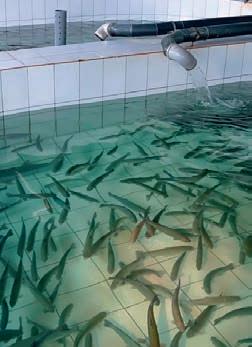
Production survey information was collected from all 22 companies actively involved in the freshwater production of Atlantic salmon, farming 74 active sites. This figure represents the entire freshwater industry operating in Scotland.
Production survey information was collected from all 22 companies actively involved in the freshwater production of Atlantic salmon, farming 74 active sites. This figure represents the entire freshwater industry operating in Scotland.
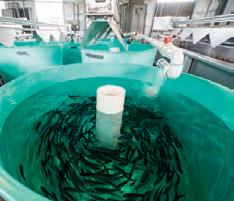
Table 12: Number of companies and sites in production during 20122021
Table 12: Number of companies and sites in production during 2012-2021
In 2021, the number of companies authorised by the Scottish government for freshwater production of Atlantic salmon decreased by two to 22. A total of 74 sites were actively engaged in commercial production, a decrease of four from the 2020 figure.
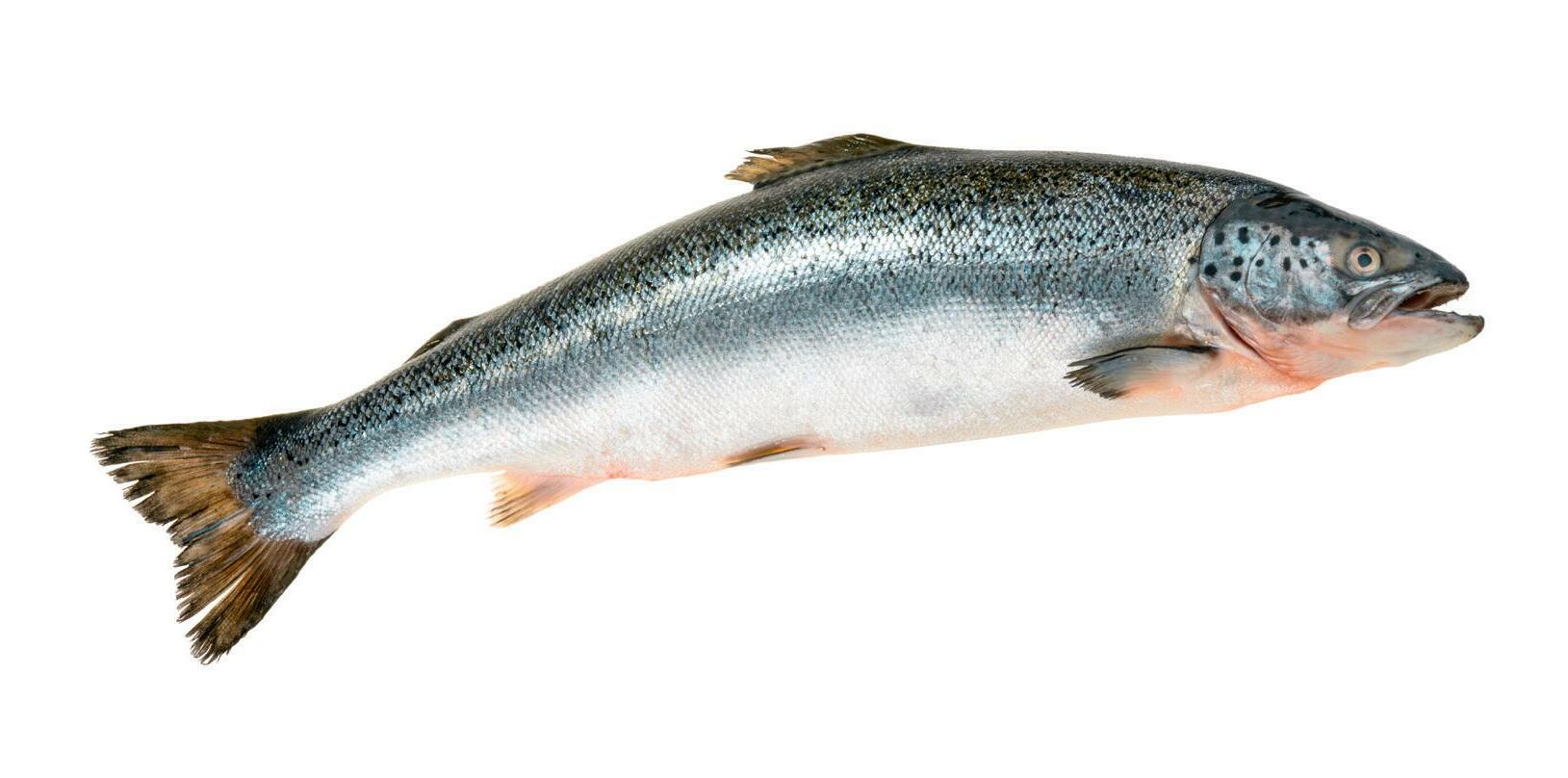
Table 13: Number (000s) of smolts produced, staff employed and smolt productivity during 2012-2021
Smolt production in 2021 increased by 1% compared to 2020. The number of staff employed in 2021 decreased by one and productivity increased by 2% to a figure of 175,900 smolts produced per person. Data for staffing and productivity in 2013 are shown, however, there are uncertainties with these data due to consolidation within the industry.
2023 FISH FARMER YEAR BOOK
Smolt production in 2021 increased by 1% compared to 2020. The number of staff employed in 2021 decreased by one and productivity increased by 2% to a figure of 175,900 smolts produced per person. Data for staffing and productivity in 2013 are shown, however, there are uncertainties with these data due to consolidation within the industry.
Smolt production in 2021 increased by 1% compared with 2020. The number of staff employed in 2021 decreased by one and productivity increased by 2% to a figure of 175,900 smolts produced per person. Data for staffing and productivity in 2013 are shown, but there are uncertainties with these data due to consolidation within the industry.
Table 14: Number of smolts (000’s) produced by type during 2012-2021
Table 14: Number of smolts (000s) produced by type during 2012–2021
In 2021, there was an increase of 32% in the number of S½ smolts produced and a decrease of 25% in the number of S1 smolts produced. In 2021, there was also production of S1½ smolts, which accounted for less than 1% of all smolts produced.
In 2021, there was an increase of 32% in the number of S½ smolts produced and a decrease of 25% in the number of S1 smolts produced. In 2021 there was also production of S1½ smolts which accounted for less than 1% of all smolts produced.
Table 15: Number and capacity of production systems during 2017-2021
The types of facility used for the production of smolts in freshwater are cages or tanks and raceways. In 2021, the number of farms using cages deceased by one and the number of farms using tanks and raceways decreased by three. In terms of volume, cage capacity decreased by 5,000m³ and tank and raceway capacity increased by 3,000m³. This resulted in a net decrease in volume of 2,000m³ available for the production of smolts in Scotland during 2021.
and tank and raceway capacity increased by 3,000 m³. This



Opposite from top: Atlantic salmon; Hatchery
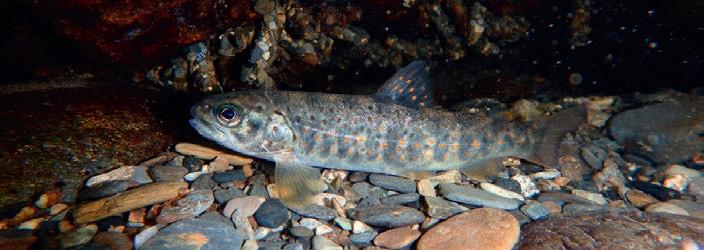
This page: Salmon smolts











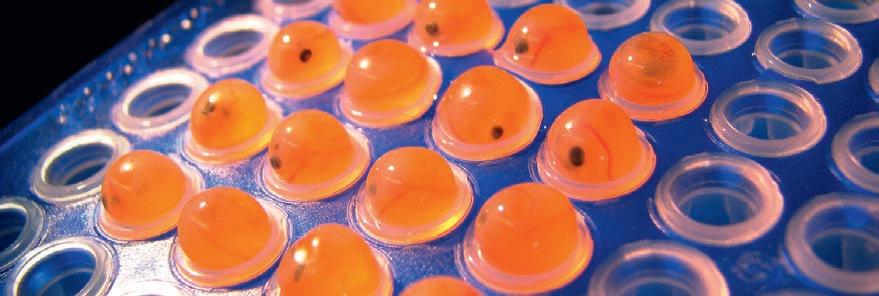
The number of ova laid down to hatch was 72.8 million, a decrease of 5.8 million (7%) on the 2020 figure. The majority of the ova (60%) were derived from foreign sources, this being a decrease of 25 million (36%) on the 2020 figure. Supplies derived from GB broodstock (excluding wild origin ova) increased by 19.3 million, a 199% increase on the 2020 figure. In 2021, 124,000 ova from GB wild broodstock were laid down to hatch, ova derived from wild stocks are generally held and hatched for wild stock enhancement by the aquaculture industry in cooperation with wild fisheries managers.
The number of ova laid down to hatch was 72.8 million, a decrease of 5.8 million (7%) on the 2020 figure. The majority of the ova (60%) were derived from foreign sources, this being a decrease of 25 million (36%) on the 2020 figure. Supplies derived from GB broodstock (excluding wild-origin ova) increased by 19.3 million, a 199% increase on the 2020 figure. In 2021, 124,000 ova from GB wild broodstock were laid down to hatch. Ova derived from wild stocks are generally held and hatched for wild stock enhancement by the aquaculture industry in cooperation with wild fisheries managers.

Table 19: Actual and projected smolt production and smolts put to sea (millions) during 2012-2023
The figure for the number of smolts put to sea includes smolts produced in England and smolts imported from elsewhere, whereas smolt production data relate only to those produced in Scotland. Smolt producers estimate putting 54.1 million smolts to sea in 2022. The ratio of ova laid down to hatch to smolts produced in 2021 was less than the ratio in 2020.
The figure for the number of smolts put to sea includes smolts produced in England and smolts imported from elsewhere, whereas smolt production data relate only to those produced in Scotland. Smolt producers estimate putting 54.1 million smolts to sea in 2022. The ratio of ova laid down to hatch to smolts produced in 2021 was less than the ratio in 2020. Scale of Production Table 20: Smolt-producing sites grouped by numbers (000’s) of smolts produced during 2012 2021
Table 20: Smolt-producing sites grouped by numbers (000s) of smolts produced during 2012-2021
The number of sites producing smolts in 2021 was 39. The number of sites producing less than 101,000 smolts decreased by three while the number of sites producing between 101,000 and one million smolts per year increased by one. The number of sites producing in excess of one million smolts per year remained at 16 sites.

The number of sites producing smolts in 2021 was 39. The number of sites producing less than 101,000 smolts decreased by three while the number of sites producing between 101,000 and one million smolts per year increased by one. The number of sites producing in excess of one million smolts per year remained at 16 sites.

Table 21: Staffing in 2021, ova laid down to hatch in 2020-2021, smolt production in 2020-2021 and estimated production in 2022-2023 by region
In 2021, the North West and the West were the main areas where ova were laid down to hatch. The North West and the West were the main smolt producing areas. The greatest number of staff were employed in the North West region. Above from top: Salmon ova; Salmon smolt
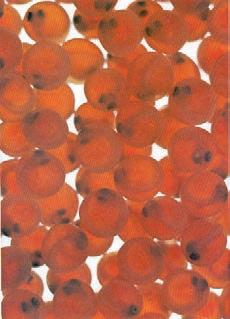
International Trade Scotland has a high health status with regard to the listed diseases. Imports of Atlantic salmon must originate from a source that is of equal or higher health status and consignments must be accompanied by a health certificate issued by the competent authority confirming that all requirements have been met.
Exports are subject to the health conditions placed by the importing country. Potential exporters should ascertain from the competent authority in the importing country any specific health testing requirements that may be a condition of import and obtain a copy of the required health certificate. The Fish Health Inspectorate will provide advice on whether the source site can fulfil the export requirements.
Scotland has a high health status with regard to the listed diseases. Imports of Atlantic salmon must originate from a source that is of equal or higher health status, and consignments must be accompanied by a health certificate issued by the competent authority confirming that all requirements have been met. Exports are subject to the health conditions placed by the importing country. Potential exporters should ascertain from the competent authority in the importing country any specific health-testing requirements that may be a condition of import and obtain a copy of the required health certificate. The Fish Health Inspectorate will provide advice on whether the source site can fulfil the export requirements.
Table 22a: Source and number (000s) of salmon ova, fry, parr and smolts imported during 2012-2021 derived from health certificates
The numbers of ova imported decreased by 11% in 2021. The number of fry, parr and smolts imported also decreased, with 300,000 fish imported from the Republic of Ireland during 2021.
Table 22b: Destination and number (000’s) of salmon ova, fry, parr and smolts exported during 2012-2021 derived from health certificates
Table 22b: Destination and number (000s) of salmon ova, fry, parr and smolts exported during 2012-2021 derived from health certificates
FISH FARM PRODUCTION SURVEY 2021 21
ovaFry, Parr and Smolts
In 2021, no ova were exported. Fry, parr and smolt exports decreased by 18,000 fish on the 2020 figure.
In 2021, no ova were exported. Fry, parr and smolt exports decreased by 18,000 fish on the 2020 figure.
Vaccines
Table 23: Number of sites using vaccines and number (millions) of fish
Vaccines were used to provide protection against furunculosis, infectious pancreatic necrosis (IPN), ERM, vibriosis and salmonid alphavirus (SAV). The majority of fish were vaccinated against furunculosis, IPN and SAV, with smaller numbers of fish being vaccinated against ERM and vibriosis. A total of 54.9 million fish were vaccinated across 43 sites.
Vaccines were used to provide protection against furunculosis, infectious pancreatic necrosis (IPN), ERM, vibriosis and salmonid alphavirus (SAV). The majority of fish were vaccinated against furunculosis, IPN and SAV, with smaller numbers of fish being vaccinated against ERM and vibriosis. A total of 54.9 million fish were vaccinated across 43 sites.
Above: Fish vaccination
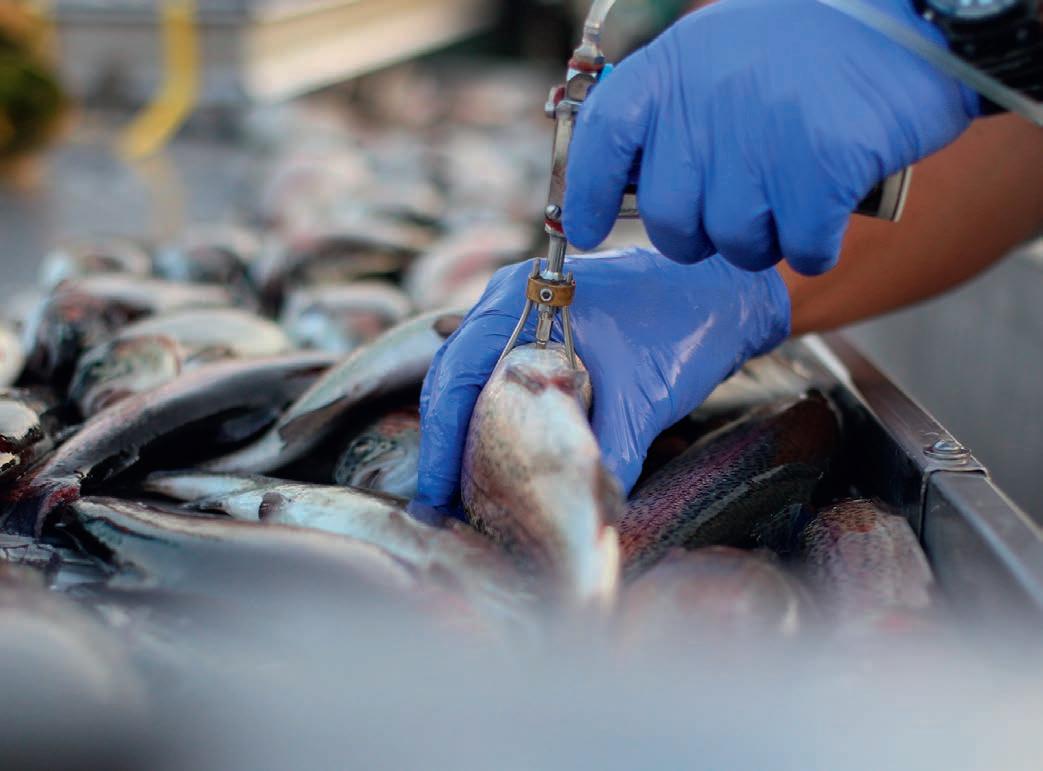
Escapes
In
In 2021, there were no reported escapes from sites rearing freshwater Atlantic salmon.
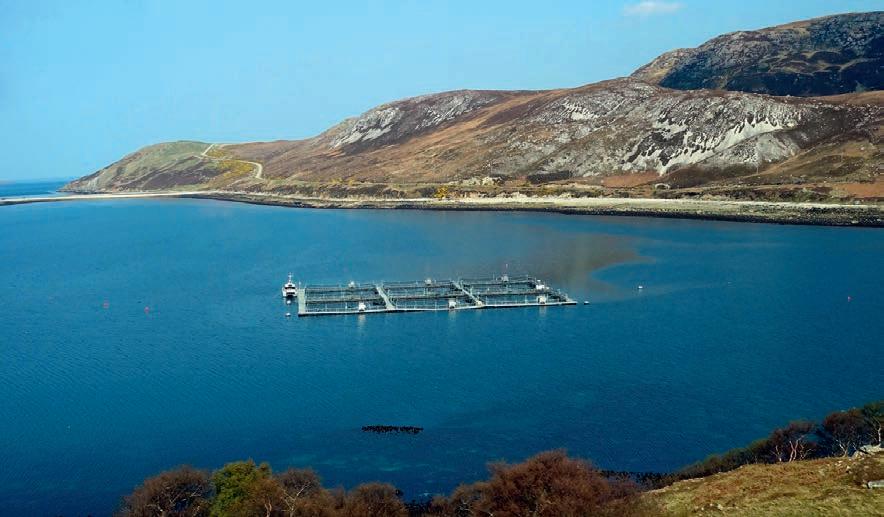














In 2019, the last year for which survival can be calculated, the survival rate from smolt input to harvest decreased to 74.4%. Of the 2020 year class, 57.2% of the input has been harvested, 2.8% higher than the average harvest of fish one year after input in the 2019 year class. In 2021, 0.03% of the fish were harvested from the 2021 input. This was a decrease compared with the proportion of fish harvested from the same year class in 2020.
In 2019, the last year for which survival can be calculated, the survival rate from smolt input to harvest decreased to 74.4%. Of the 2020 year class, 57.2% of the input has been harvested, 2.8% higher than the average harvest of fish one year after input in the 2019 year class. In 2021, 0.03% of the fish were harvested from the 2021 input. This was a decrease compared with the proportion of fish harvested from the same year class in 2020.
The total number of smolts put to sea in 2021 was over 51.1 million. This smolt input comprised S½s (58%), S1s (42%) and S1½s (<1%). Just under 3% of the smolts stocked to Scottish salmon farms were sourced from outwith Scotland, less than 1% of which came from sources outwith GB. This was a decrease of just under 2% compared with the proportion
The total number of smolts put to sea in 2021 was over 51.1 million. This smolt input comprised S½s (58%), S1s (42%) and S1½s (<1%). Just under 3% of the smolts stocked to Scottish salmon farms were sourced from outwith Scotland, less than 1% of which came from sources outwith GB. This was a decrease of just under 2% compared with the proportion observed in 2020.
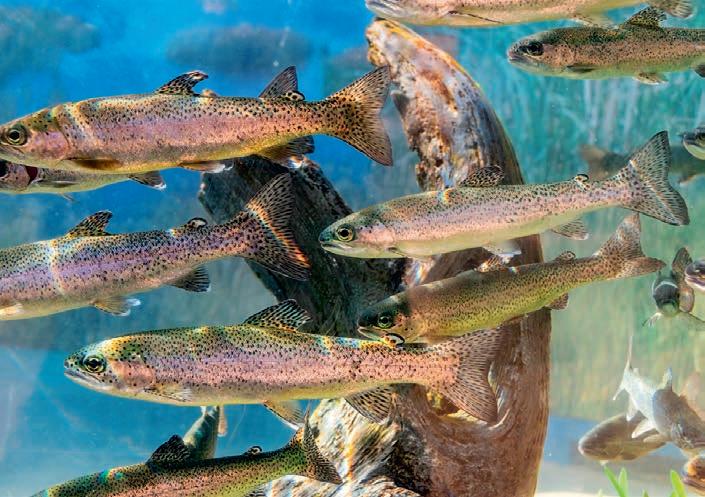
Table 31: Number of staff employed in the production of salmon during 2012-2021
Table 31: Number of staff employed in the production of salmon during 2012-2021
In 2021, the total number of staff employed in salmon production was 1,495, a decrease of 135 compared with 2020. The staffing figures collected refer specifically to the production of Atlantic salmon and do not include figures for staff involved with processing or marketing activities. Productivity increased from 117.9 to 137.4 tonnes produced per person.
In 2021, the total number of staff employed in salmon production was 1,495, a decrease of 135 compared with 2020. The staffing figures collected refer specifically to the production of Atlantic salmon and do not include figures for staff involved with processing or marketing activities. Productivity increased from 117.9 to 137.4 tonnes produced per person.

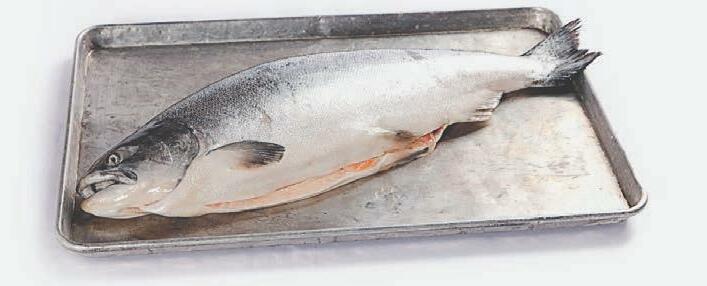
In 2021, the total number of staff employed in salmon production was 1,495, a decrease of 135 compared with 2020. The staffing figures collected refer specifically to the production of Atlantic salmon and do not include figures for staff involved with processing or marketing activities. Productivity increased from 117.9 to 137.4 tonnes produced per person.




Table 32: Production methods, capacity, tonnage and average stocking densities (kg/m³) during 2019-2021

Sea cage capacity decreased by 631,000 m3 during 2021 and the number of sea cage sites in production decreased by 19. Production efficiency in sea cages, measured as the ratio of fish weight in kilograms produced per cubic metre, increased from 8.4 kg/m³ in 2020 to 9.3 kg/m³ in 2021.
Sea cage capacity decreased by 631,000m3 during 2021 and the number of sea cage sites in production decreased by 19. Production efficiency in sea cages, measured as the ratio of fish weight in kilograms produced per cubic metre, increased from 8.4 kg/m³ in 2020 to 9.3 kg/m³ in 2021.

Table 33: Number of sites shown in relation to their production grouping and percentage share of production 2012–2021
For the 2021 survey report, production grouping
re-evaluated to give better resolution of the data. In 2021, the number of sites with no production decreased by 28 and the number producing 1 to 1,000 tonnes increased by three. The number of sites producing 1,000 to 4,000 tonnes increased by seven and sites producing over 4,000 tonnes decreased by one. The trend towards production in larger sites continued, with 87% of production being derived from sites producing over 1,000 tonnes.
For the 2021 survey report production grouping categories were reevaluated to give better resolution of the data. In 2021, the number of sites with no production decreased by 28 and the number producing 1 to 1,000 tonnes increased by three. The number of sites producing 1,000 to 4,000 tonnes increased by seven and sites producing over 4,000 tonnes decreased by one. The trend towards production in larger sites continued, with 87% of production being derived from sites producing over 1,000
Opposite: Scottish fish farm
Above: Scottish salmon

19,518*
1640-5,8224.518,1214.912,7514.7
Table 36: Number of companies and sites engaged in the production of Atlantic salmon during 2012-2021
Table 36: Number of companies and sites engaged in the production of Atlantic salmon during 2012-2021
The number of companies authorised and actively producing Atlantic salmon in 2021 was 10, two more than in 2020. Two companies remained active and authorised, although not producing salmon for harvest in 2021. These 12 companies had 213 registered active sites, although not all these sites produced fish for harvest in 2021.
Left: Scottish salmon farm

Table 38: Number of sites holding Atlantic salmon broodstock during 2012-2021
Table 38: Number of sites holding Atlantic salmon broodstock during 2012-2021 Year2012201320142015201620172018201920202021
In 2021, the number of freshwater and seawater sites holding broodstock remained at four sites. The number of sites holding broodstock in any one year can be variable, as can be seen from the previous years’ figures, which indicate no obvious trend. A total of 4,335 fish were stripped, yielding 46.3 million ova, giving an average yield of 10,670 ova per fish.
In 2021, the number of freshwater and seawater sites holding broodstock remained at four sites. The number of sites holding broodstock in any one year can be variable, as can be seen from the previous years’ figures, which indicate no obvious trend. A total of 4,335 fish were stripped, yielding 46.3 million ova, giving an average yield of 10,670 ova per fish.
In 2021, the number of freshwater and seawater sites holding broodstock remained at four sites. The number of sites holding broodstock in any one year can be variable, as can be seen from the previous years’ figures, which indicate no obvious trend. A total of 4,335 fish were stripped, yielding 46.3 million ova, giving an average yield of 10,670 ova per fish. Organic Production Table 39: Organic production of Atlantic salmon during 2012-2021
Table 39: Organic production of Atlantic salmon during 2012-2021
Organic Production
Table 39: Organic production of Atlantic salmon during 2012-2021
Of the 212 active Atlantic salmon seawater cage sites in 2021, 12 were certified as organic, producing 18,285 tonnes.
Of the 212 active Atlantic salmon seawater cage sites in 2021, 12 were certified as organic, producing 18,285 tonnes.
Of the 212 active Atlantic salmon seawater cage sites in 2021, 12 were certified as organic, producing 18,285 tonnes.

Escapes
There was one incident involving the loss of 19,686 fish from seawater Atlantic salmon sites in 2021. There were 14 additional incidents reported where the companies confirmed there was no loss of fish.
There was one incident involving the loss of 19,686 fish from seawater Atlantic salmon sites in 2021. There were 14 additional incidents reported where the companies confirmed there was no loss of fish.
Escapes
There was one incident involving the loss of 19,686 fish from seawater Atlantic salmon sites in 2021. There were 14 additional incidents reported where the companies confirmed there was no loss of fish.
4.Other Species
The Scottish aquaculture industry has continued to farm other species of fish during 2021. The production of brown/sea trout (Salmo trutta) showed a small decrease, with the majority of production being for the angling restocking market. In 2021, there was production of halibut (Hippoglossus hippoglossus), but the figure cannot be published without revealing the production from an individual company. Lumpsucker or lumpfish (Cyclopterus lumpus) and several species of wrasse (Labridae) were also produced in 2021. The production of lumpsucker and wrasse are targeted at the marine Atlantic salmon industry where they are used as a biological control for parasites. Lumpsucker and wrasse figures were amalgamated into a single cleaner fish category as separate publication of lumpsucker data would reveal the production of an individual company.
Company, Site and Production Data
Table 40: Number of companies and sites producing other species in 2021, annual production of other species (tonnes) during 2018-2021 and projected production in 2022
Table 41: Number of staff employed in farming other species during 2012-2021
36

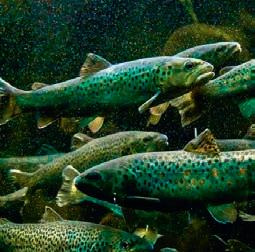
Opposite: Broodstock salmon
Above from top: Brown trout; Halibut steaks; Farm worker

species increased by six, to 41.
In 2021, the overall number of staff employed in the production of other species increased by six, to 41.
Production of Cleaner fish
Table 42: Number (000’s) of cleaner fish (lumpsucker and wrasse) produced during 2015-2021
Production of Cleaner fish

Table 42: Number (000’s) of cleaner fish (lumpsucker and wrasse) produced during 2015-2021
Table 42: Number (000s) of cleaner fish (lumpsucker and wrasse) produced during 2015-2021
Number of fish produced (000’s)
Species2015201620172018201920202021
Number of fish produced (000’s)
Cleaner fish▲ 310380983656719576689 ▲
Amalgamated lumpsucker and wrasse figures (excluding larval stage fish)
Species2015201620172018201920202021
Cleaner fish▲ 310380983656719576689 ▲Amalgamated lumpsucker and wrasse figures (excluding larval stage fish)
In recent years lumpsucker and wrasse spp. have been produced for use as a biological control for parasites in the marine Atlantic salmon industry. Data on the number of fish produced has only been collected since 2015. These figures do not include production of larval stage cleaner fish which may be traded for ongrowing at facilities outside of Scotland, shortly after hatching.
In recent years, lumpsucker and wrasse have been produced for use as biological controls for parasites in the marine Atlantic salmon industry. Data on the number of fish produced has only been collected since 2015. These figures do not include production of larval-stage cleaner fish, which may be traded for on-growing at facilities outside of Scotland shortly after hatching.

Ova Laid Down to Hatch
Table 43: Source of ova from other species laid down to hatch during 2021
In recent years lumpsucker and wrasse spp. have been produced for use as a biological control for parasites in the marine Atlantic salmon industry. Data on the number of fish produced has only been collected since 2015. These figures do not include production of larval stage cleaner fish which may be traded for ongrowing at facilities outside of Scotland, shortly after hatching.
Table 43: Source of ova from other species laid down to hatch during 2021
Ova Laid Down to Hatch
Table 43: Source of ova from other species laid down to hatch during 2021
Species
Source of ova laid down to hatch (000’s)
Own broodstock Other GB broodstock Foreign ova
Species Source of ova laid down to hatch (000’s) Own broodstock Other GB broodstock Foreign ova
Brown/sea trout 10 88 0
Halibut 0 0 0
Cleaner fish▲ 59,204 0 700 ▲Amalgamated lumpsucker and wrasse figures the figure for an individual company.
Trade in Small Fish
Brown/sea trout 10 88 0 Halibut 0 0 0 Cleaner fish▲ 59,204 0 700
37
Amalgamated lumpsucker and wrasse figures the figure for an individual company.
Table 44: Trade in small fish of other species in 2021
Table 44: Trade in small fish of other species in 2021
37
Species Bought (000’s) Sold (000’s)
Brown/sea trout 26 17 Halibut # 0 Cleaner fish▲ 900 60,104
Amalgamated lumpsucker and wrasse figures the figure for an individual company.
# During 2021 there was trade of small halibut but figures cannot be shown without revealing the figure for an individual company.
There was also a small amount of production of brook charr (Salvelinus fontinalis) and tiger trout (Salmo trutta x Salvelinus fontinalis). However, due to the small number of companies in production, it is not possible to summarise these data without revealing the production of individual companies.
There was also a small amount of production of brook charr (Salvelinus fontinalis) and tiger trout (Salmo trutta x Salvelinus fontinalis). However, due to the small number of companies in production, it is not possible to summarise these data without revealing the production of individual companies.
Of the 16 sites recorded as producing other species in 2021, no organic production was reported.
Above from top: Lump fish; Wrasse; Halibut
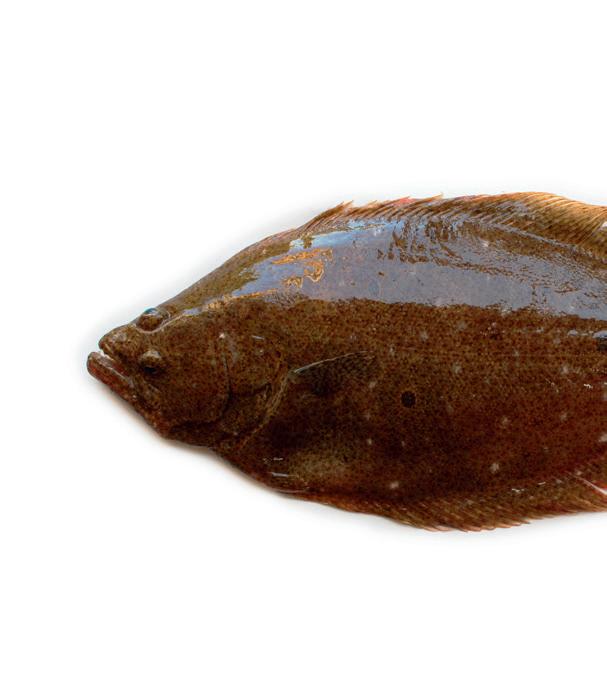
Of the 16 sites recorded as producing other species in 2021, no organic production was reported.
There were no reported escapes from sites rearing other species during 2021.
Escapes
There were no reported escapes from sites rearing other species during 2021.
The Marine (Scotland) Act 2010 introduces integrated management of Scotland’s seas. The creation of a National Marine Plan, as required by the Act, sets the wider context for planning within Scotland including what should be considered when creating regional marine plans. Eleven Scottish Marine Regions have been created under the Act (see Figure 4) which cover sea areas extending out to 12 nautical miles.





































The Marine (Scotland) Act 2010 introduces integrated management of Scotland’s seas. The creation of a National Marine Plan, as required by the Act, sets the wider context for planning within Scotland, including what should be considered when creating regional marine plans. Eleven Scottish Marine Regions have been created under the Act (see Figure 4), which cover sea areas extending out to 12 nautical miles.
To support the development of Regional Marine Plans by Regional Marine Planning Partnerships, tonnages and financial values of annual finfish production have been calculated for the regions defined under the Act. These regional data are presented in Appendix 3. In order to maintain commercial confidentiality salmon production figures for Argyll & Clyde and the North Coast & West Highlands have been merged. Other finfish species including brown/sea trout, rainbow trout, cod, halibut and cleaner fish were produced, however these figures cannot be attributed to Scottish Marine Regions due to commercial confidentiality.
To support the development of Regional Marine Plans by Regional Marine Planning Partnerships, tonnages and financial values of annual finfish production have been calculated for the regions defined under the Act. In order to maintain commercial confidentiality, salmon production figures for Argyll & Clyde and the North Coast & West Highlands have been merged. Other finfish species including brown/sea trout, rainbow trout, cod, halibut and cleaner fish were produced, but these figures cannot be attributed to Scottish Marine Regions due to commercial confidentiality.

Figure 4: Scottish marine regions
Figure 4: Scottish marine regions
THERE WAS ALSO A SMALL AMOUNT OF PRODUCTION OF BROOK CHARR AND TIGER TROUT
The production of rainbow trout increased by 8% in 2021 to 8,156 tonnes and was directed at the table (94%) and restocking (6%) markets. The total numbers of staff employed by the sector increased by 12 to 146. There was an overall decrease in the productivity of the industry to 55.9 tonnes per person.

In 2021, the number of eyed ova laid down to hatch (4.9 million) decreased by 1.4 million and was mainly triploid stock (99.7%). The proportion of ova from GB broodstock increased to 26%. Denmark was the largest source of imported ova, with 52% of the total – this was a decrease proportionally from 2020. The Scottish rainbow trout industry continues to be highly dependent on imported ova. Additionally, imports of part-grown rainbow trout from Northern Ireland continued in 2021.
In 2021, the total production of Atlantic salmon increased by 13,264 tonnes to 205,393 tonnes, a 7% increase on the 2020 production total and the highest level of

production recorded in Scotland. The survey showed increases in the production of grilse and year 2 salmon, but a decrease in the production of year 0 salmon and pre-salmon during 2021. The number of staff directly employed on the farms decreased by 135. Overall, there was an increase in the productivity of tonnes produced per person from 117.9 to 137.4. The estimated harvest forecast for 2022 is 189,693 tonnes. The trend towards concentrating production in larger sites was maintained with 87% of production being concentrated in the sites producing more than 1,000 tonnes per annum.
During 2021, there was an increase in the number of ova produced to 46.3 million. The number of ova laid down to hatch decreased by 7% to 72.8 million. 2021 saw 60% of ova supplied from foreign sources, with the remaining 40% being derived from GB broodstock (an increase of 199% on the 2020 figure). Smolt production increased to 51.2 million, with 59% being produced as S½ smolts, 40% as S1 smolts and less than 1% as S1½ smolts. The number of staff directly employed on freshwater sites decreased by one in 2021 to 291 staff, while productivity decreased to 175,900 smolts per person. Projections for 2022 suggest that more smolts will be produced than in 2021, followed by a further increase in 2023.
There was a decrease in the production of brown/sea trout from 24 tonnes in 2020 to 23 tonnes in 2021. Halibut production occurred in 2021, but the figure cannot be shown without revealing the production of individual companies. Lumpsucker and wrasse continued to be produced for use as biological controls for parasites in the marine Atlantic salmon farming industry. In 2021, the total number of staff employed in the production of other species increased by six to 41.
Opposite from top: Rainbow trout; Atlantic salmon
Above: Halibut fillet

DURING 2021, THERE WAS AN INCREASE IN THE NUMBER OF OVA PRODUCED TO 46.3 MILLION



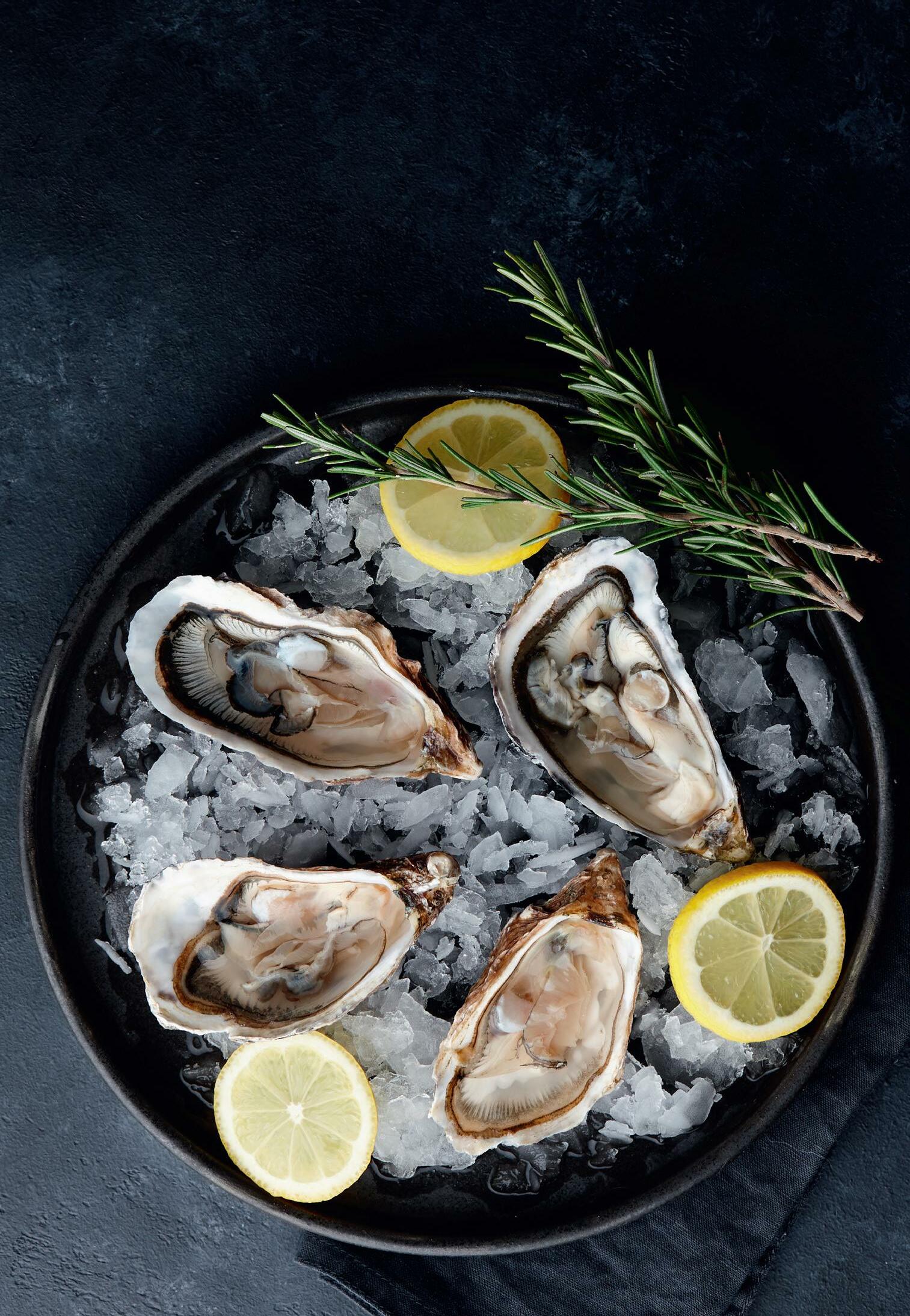



Following a pandemic year, shellfish production bounced back in 2021. For mussels, production for the table leaped by 52% from 5,661 tonnes in 2020 to 8,590 tonnes in 2021. This is the highest level of production recorded in Scotland, exceeding the 6,699 tonnes produced in 2019.Table production of Pacific oyster shells increased by 70% from the 2020 total and over 3.5 million shells were produced for on-growing in other waters. There were slightly more people employed, up by 1% to 303 full-time, part-time and casual staff in 2021 in an industry pulling in estimated revenue of around £9.8m, a 61% increase on 2020.
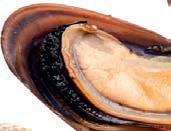

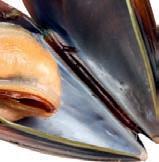


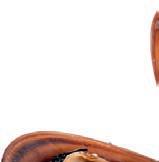
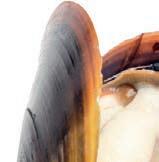













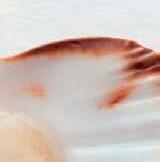
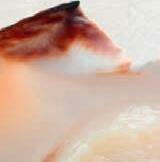
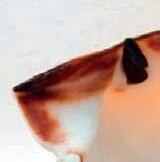

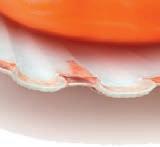



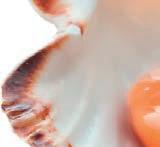










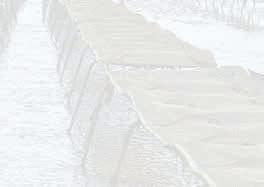
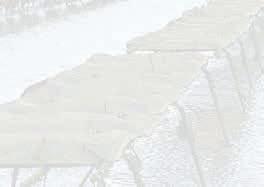
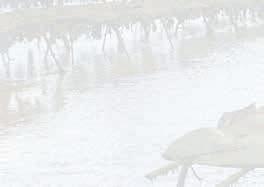

This page from top: Scallops; Mussels; Cockles Opposite: Oysters
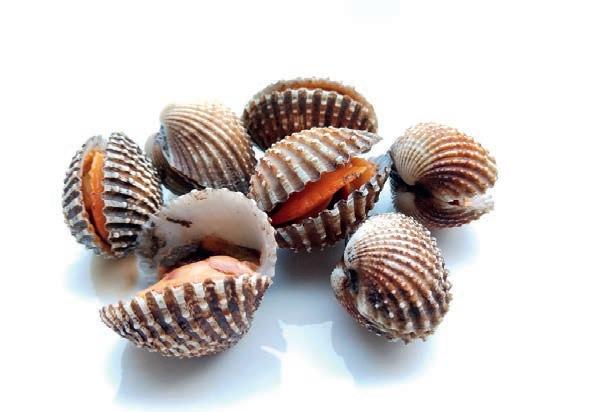














Table production by species is illustrated in Figure 1 (see page 86), while trends in production for the table market and on-growing in Scotland are presented in Table 2.
Table 2
Trends in production data for the table and on-growing 2012-2021










Mussel production, for the table, increased by 52% in 2021 (see Figure 1) to 8,590 tonnes. This is the highest level of mussel production recorded in Scotland. The greatest regional contribution to mussel production was from Shetland, accounting for 6,850 tonnes (80%) of Scotland’s total. Pacific oyster production increased by 70% from 2020. The production of farmed scallops increased by 42%, while production of native oysters decreased by 77%. There was a very small amount of queen scallop production during 2021 as the main producer reported no production during 2021 due to impacts from the Covid-19 pandemic. Historical data for all shellfish species show that production levels vary year on year. This can be due to a number of different factors such as poor spat fall, algal toxins, poor growth, adverse weather, pandemic restrictions and fluctuations in market prices.


>100 Native oyster (000s) 6771,015749133234813443271041>100 Queen (000s)01,490500900173000000 0 Scallop (000s)161,470136492394000 0 Mussel (tonnes) 3091,2811,2631,8412,6194,4372,1373,4934,1273,253-21 Mussel production, for the table, increased by 52% in 2021 (see figure 1) to 8,590 tonnes. This is the highest level of mussel production recorded in Scotland. The greatest regional contribution to mussel production was from Shetland, accounting for 6,850 tonnes (80%) of Scotland’s total. Pacific oyster production increased by 70% from 2020. The production of farmed scallops increased by 42% while production of native oysters decreased by 77%. There was a very small amount of queen scallop production during 2021 as the main producer reported no production during 2021 due to impacts from the COVID-19 pandemic. Historical data for all shellfish species show that production levels vary year on year. This can be due to a number of different factors such as poor spat fall, algal toxins, poor growth, adverse weather,








8,000 Tonnes
6,000
4,000
2,000
0
6,000
Mussel (tonnes) 5,000
4,000
3,000
2,000
1,000
Pacific oyster (000s)
Number (000s) Scallop (000s) Native oyster (000s)
0
'12'13'14'15'16'17'18'19 '18'19 '12'13'14'15'16'17
'21
Queen (000s)
10,000 '20 '20 '21
Figure 1 Table production by species 2012-2021.
Figure 1
Table production by species 2012-2021
Prices of farmed shellfish fluctuated throughout the year. Their value at first sale was estimated from the following figures obtained from the shellfish farming industry. These vary with demand, level of production and geographical area of origin. The average price of Pacific oyster was £0.37 per shell, native oyster £0.60 per shell, scallop £2.31 per shell, queen scallop £0.13 per shell and mussel £916 per tonne. The value of the table trade is estimated from the production figures shown in Table 1.
Mussel: £7.9m
Pacific oyster: £1.8m
Prices of farmed shellfish fluctuated throughout the year. Their value at first sale was estimated from the following figures obtained from the shellfish farming industry. These vary with demand, level of production and geographical area of origin. The average price of Pacific oyster was £0.37 per shell; native oyster, £0.60 per shell; scallop, £2.31 per shell; queen scallop, £0.13 per shell and mussel £916 per tonne. The value of the table trade is estimated from the production figures shown in Table 1 (see page 2).
Native oyster: £0.005m Scallop: £0.06m
Queen: >£0.0001m
Mussel: £7.9 million

Pacific oyster: £1.8 million
Native oyster: £0.005 million Scallop: £0.06 million

In 2021, the total value at first sale for all species was calculated at around £9.8m, an increase of 61% from the £6.1m estimated in 2020.
Queen: >£0.0001 million
In 2021, the total value at first sale for all species was calculated at approximately £9.8 million, an increase of 61% from the £6.1 million estimated in 2020.


Figure 2 Regional distribution of active shellfish sites in 2021 (number producing given in brackets) and number of producing businesses by region/species.
Table 5 depicts the number of businesses by region and by species: A) in table production, B) in on-growing production and C) showing no production. Many businesses cultivate more than one species on site, a practice made possible by similar cultivation techniques. For example, scallop can be grown together with queen, Pacific oyster with native oyster, and mussel with Pacific oyster. The highest proportion of Pacific oyster businesses are located in Strathclyde while the highest proportion of mussel businesses are in Shetland.


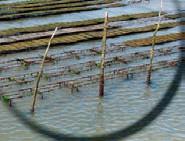
Table 5 depicts the number of businesses by region and by species: a) in table production, b) in on-growing production and c) showing no production. Many businesses cultivate more than one species on site, a practice made possible by similar cultivation techniques for different species. For example, scallop can be grown together with queen, Pacific oyster with native oyster, and mussel with Pacific oyster. The highest proportion of Pacific oyster businesses are located in Strathclyde, while the highest proportion of mussel businesses are in Shetland. Table 5 Number

Business production levels by species are shown in Table 6. There were 11 businesses producing more than 200 tonnes of mussels, which was an increase of one from 2020. These 11 businesses produced 84% of the total mussel production in Scotland. There were seven businesses that produced more than 200,000 Pacific oysters. The production from these businesses accounted for 82% of the Scottish Pacific oyster total.
Business production levels by species are shown in Table 6. There were 11 businesses producing more than 200 tonnes of mussels, this was an increase of one from 2020. These 11 businesses produced 84% of the total mussel production in Scotland. There were seven businesses that produced more than 200,000 Pacific oysters. The production from these businesses accounted for 82% of the Scottish Pacific oyster total. Table 6
Table 6
Business production levels by species 2021

Following anecdotal industry reports of poor spat settlement and mortality in 2010, Marine Scotland Science developed a questionnaire which was sent to all authorised aquaculture production businesses farming mussels. This 2011 investigation indicated that poor spat settlement and mortality were not widespread in Scottish waters, although they had major impacts on certain individual producers. As a result of talks between the Association of Scottish Shellfish Growers and Marine Scotland a spat collection question was introduced to the 2013 survey. This question focused on mussel spat collection and was presented in two parts: is this a spat collection site; if yes, was spat settlement sufficient for production purposes?




Following anecdotal industry reports of poor spat settlement and mortality in 2010, Marine Scotland Science developed a questionnaire that was sent to all authorised aquaculture production businesses farming mussels. This 2011 investigation indicated that poor spat settlement and mortality were not widespread in Scottish waters, although they had major impacts on certain individual producers. As a result of talks between the Association of Scottish Shellfish Growers and Marine Scotland, a spat collection question was introduced to the 2013 survey. This question focused on mussel spat collection and was presented in two parts: is this a spat collection site; if yes, was spat settlement sufficient for production purposes?
Responses were received from 219 (100%) of the sites authorised for mussel production in 2021. One hundred and twelve (51%) of these were spat collection sites, 58 (52%) of which reported that they had sufficient spat settlement for production purposes. Insufficient spat settlement on sites may require movement of mussels to that site which increases the risk of introduction or spread of diseases.




































Responses were received from 219 (100%) of the sites authorised for mussel production in 2021. One hundred and twelve (51%) of these were spat collection sites, 58 (52%) of which reported that they had sufficient spat settlement for production purposes. Insufficient spat settlement on sites may require movement of mussels to that site, which increases the risk of introduction or spread of diseases. Table 7

The industry employed 141 full-time and 162 part-time and casual workers during 2021. The number of full-time staff remained the same while the number of part-time and casual employees increased by three compared with 2020. The regional breakdown of employment is given in Table 8. The number of people employed by the shellfish farming industry in Scotland increased by 1% from the 2020 total of 300.
Table 8

Regional employment 2021.
The industry employed 141 full-time and 162 part-time and casual workers during 2021. The number of full-time staff remained the same, while the number of parttime and casual employees increased by three compared with 2020. The regional breakdown of employment is given in Table 8. The number of people employed by the shellfish farming industry in Scotland increased by 1% from the 2020 total of 300. Table 8
The Marine (Scotland) Act 2010 introduced integrated management of Scotland’s seas. The creation of a National Marine Plan, as required by the Act, sets the wider context for planning within Scotland, including what should be considered when creating regional marine plans. Eleven Scottish Marine Regions have been created under the Act, which cover sea areas extending out to 12 nautical miles.
To support the development of Regional Marine Plans by Regional Marine Planning Partnerships, tonnages/shell numbers and financial values of annual shellfish production for mussels and Pacific oysters have been calculated for the regions defined under the Act. In order to maintain commercial confidentiality mussel production figures for Argyll and Clyde, and the West Highlands, Moray Firth and the North Coast were merged. Similarly, Pacific oyster production for the West Highlands and the North Coast were also required to be merged. Other shellfish species including native oyster (Argyll and Solway), scallop (Argyll and West Highlands) and queen scallop (Clyde and West Highlands) were produced. However, these figures cannot be attributed to Scottish Marine Regions due to commercial confidentiality.
A risk-based surveillance programme targeting 37 shellfish site inspections was undertaken during 2021. On these visits, facilities, stock health, biosecurity planning, movement records and details
Opposite from top: Mussels; Oyster farming; Scallops
This page from top: Oyster farming; Mussel production


required for authorisation were checked. Records were checked remotely for a further 15 sites. The number of site inspections was reduced in 2021 due to Covid-19 travel restrictions in Scotland.
Most of the reported mortalities during 2021 were attributed to: predation from wild ducks, starfish, crabs and oystercatchers; fouling by sea squirts; adverse weather conditions including storms and temperature extremes; and damage due to grading and handling and from natural causes. It is the responsibility of shellfish farmers to inform Marine Scotland of any abnormal or unexplained shellfish mortality on their sites (see guidance on shellfish mortality in Appendix 1).
Approved zone status for bonamiasis, marteiliasis and Ostreid Herpes Virus-1 Microvariant (OsHV-1 μvar) continued to protect the health of both wild and farmed susceptible shellfish stock in Scotland’s waters (www.gov. scot/policies/fish-healthinspectorate/movement-restrictions-on-fish-and-shellfish).

The whole coastline of Great Britain is recognised as free from infection with Marteilia refringens, although there are movement restrictions in place on the River Tamar in Cornwall and Devon.
Also the whole coastline of Great Britain is recognised as being free from infection with Bonamia ostreae except the following areas which are covered by movement restrictions:
• Loch Sunart in Highland region;
• Dornoch Firth in Highland region;
• West Loch Tarbert in Strathclyde region;
• Lynn of Lorne, Loch Creran and Loch Etive in Strathclyde region;
• the south coast of Cornwall from Lizard to Start Point;
• the coast of Dorset, Hampshire and Sussex from Portland Bill to Selsey Bill;
• the area along the coast of North Kent and Essex from North Foreland to Felixstowe;
• the area along the coast in south-west Wales from Wooltack Point to St Govan’s Head, including Milford Haven and the tidal waters of the East and West Cleddau river;
• Menai Strait.
The whole coastline of Great Britain is recognised as free from OsHV-1 μvar except for the following areas:
• Essex, Kent and Suffolk (Felixstowe to Ramsgate)
• Butley Creek, Suffolk;
• Poole Harbour in Dorset;
• the River Teign in Devon.
Movements and imports of shellfish species susceptible to infection by Marteilia refringens, Bonamia ostreae and OsHV-1 μvar into the Great Britain health zone must originate from another zone or country recognised as free of that disease and are required to be accompanied by a health certificate. Movements are allowed from disease-free areas to non-approved areas, as well as those for direct human consumption without re-immersion in any other seawater areas.
Opposite from top: Oyster farm; Working on the farm; Mussel farming
In 2021, there was a continued demand for imported mussel and Pacific oyster spat in Scotland. The industry should be aware of the increased disease risk with the introduction, movement and deposit of stock on site and the importance of ensuring good biosecurity practices when sourcing shellfish from other areas.

• In 2021, 8,590 tonnes of mussels were produced for the table market. This is the highest level of mussel production recorded in Scotland.

• Mussel and Pacific oyster remain the main species produced in terms of value and tonnage. Mussel production increased by 52%

and Pacific oyster production increased by 70% during 2021.
• During 2021, over 3.5 million Pacific oyster shells were produced for on-growing.
• There was a very small amount of queen scallop production during 2021, with the biggest producer reporting no production due to the Covid-19 pandemic. There was an increase in scallop production, from 19,000 to 27,000 shells, since 2020.
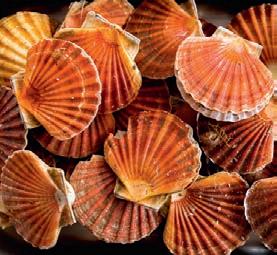
• There was a decrease in the production of native oyster from 35,000 to 8,000 shells in 2021.
• The number of mussel-producing sites with sufficient spat settlement for production purposes increased from 48 to 58.
• Employment levels increased by 1% from the previous year, with 303 full-time, parttime and casual staff being employed during 2021.
• The Scottish shellfish farming industry is estimated to be worth approximately £9.8m at first sale value, an increase of 61% on the 2020 figure.
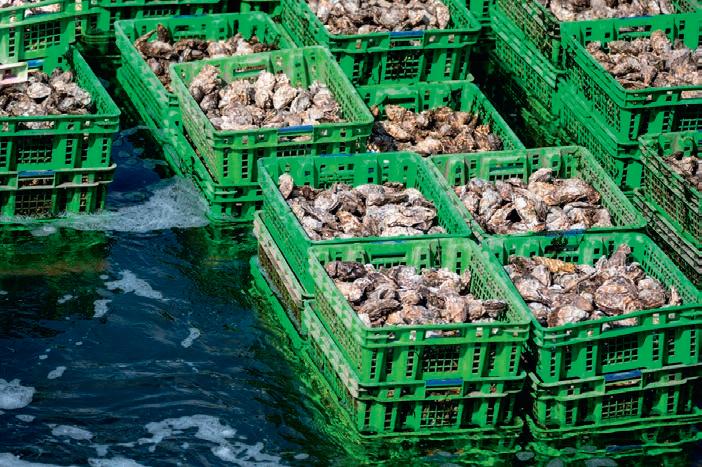
• Active surveillance for bonamiasis, marteiliasis and OsHV-1 μvar continued in 2021.
• For shellfish health purposes, 37 out of 309 sites were inspected during 2021 as part of a risk based surveillance programme. Further details can be found at www.gov.scot/policies/fish-health-inspectorate/ surveillance-programme
• Movement restrictions remain in place for the presence of Bonamia ostreae at Loch Sunart and the Dornoch Firth in Highland region, West Loch Tarbert and Lynn of Lorne, Loch Creran and Loch Etive in Strathclyde region.
• Great Britain maintained disease-free status with regard to bonamiasis, marteiliasis and OsHV-1 μvar, with the exception of specific compartments under movement restrictions. Immediate notification of increased mortality on farm sites must be reported to Marine Scotland Science, Fish Health Inspectorate.

This page from top: Scallops; Oysters in boxes
Opposite from top: Mussel dish; Mussel farming; Eating mussels
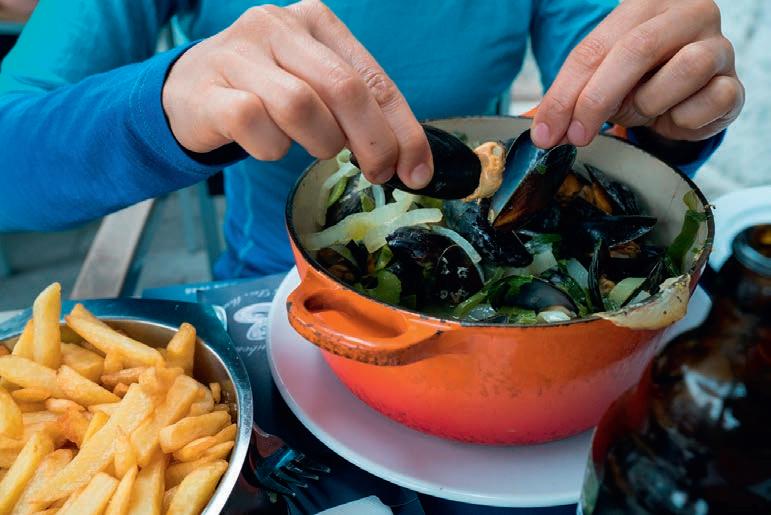




























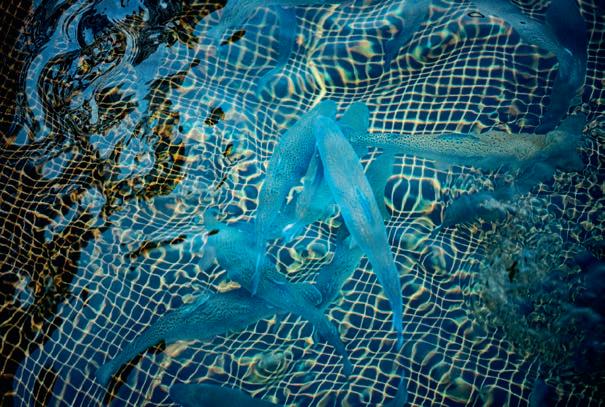

helped with river flows and spring replenishment.
Spring arrived with a strong demand for trout in all sectors, which was good news for everyone.


Increasing costs in terms of fish feed, electricity and oxygen, and how the trout sector could mitigate these, were the main topics.
By May, the British Trout Association (BTA) was able to attend meetings in person. Online meetings are an excellent way to get things done, but an in-person meeting still has its place.





Midsummer bought much warmer weather, and demand in restocking sector slowed down due to fisheries closing with high water temperatures.
The sector faced some

2022 has been a year of many changes.
January started well with Brexit hopefully well behind us – but still with its challenges – and Covid becoming less of a problem.
Demand on the markets was reasonably strong, the restocking sector was high on demand as fishing had become popular again. This is one positive from the Covid lockdown days.
We had a relatively warm winter, which helped on-growth and fish health, and average rainfall
challenging moments during late summer. This was mainly due to low water flows and high temperatures in fresh water and marine sites.
In the latter part of the year, we have had above-average rainfall. This has helped with water availability for all sectors and the above-average autumn temperatures have allowed good fish growth.
It would seem that the UK’s political situation is in now in a period of calm, so there is much to do with government hopefully
encouraging support for our sector.
On the subject of input costs, the two main challenges are feed and electricity. Finding novel feed ingredients might help with the former. In terms of electricity, solar power, low-head turbines – smallscale hydro turbines suitable for rivers – and wind power might well be worth looking at. Some grants for these would encourage investment.

Opposite
This page from top: Steelhead trout; Rainbow trout; Trout farm


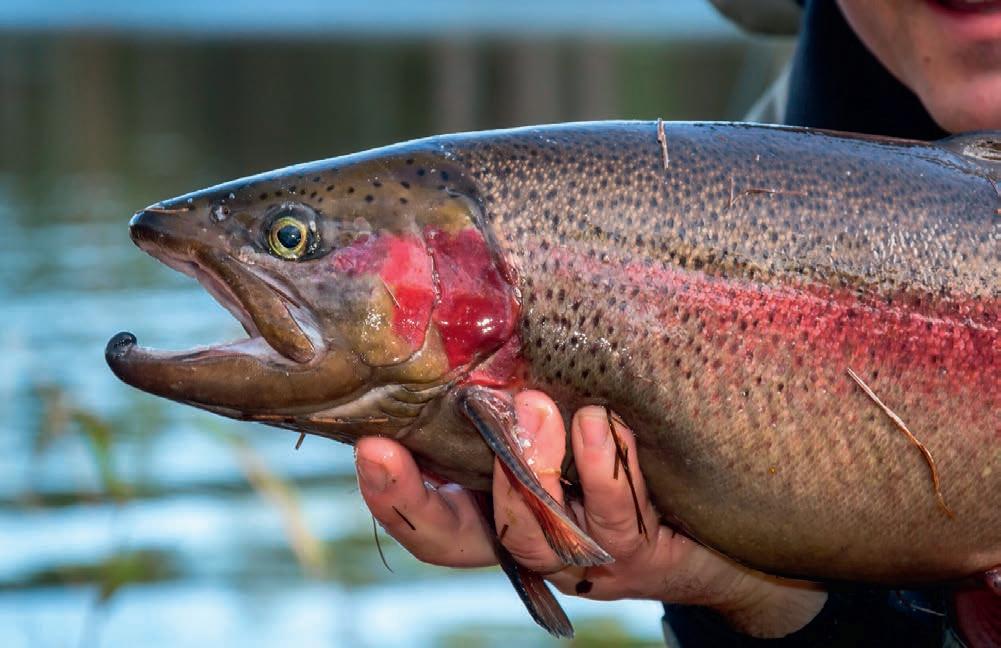
One of the biggest importers of seafood is China, so it was good news for the global industry when China announced early on in 2022 that it was temporarily reducing tariffs on almost 1,000 goods, including seafood.

The new rates included lower tariffs on fresh and frozen salmon, frozen herring and frozen cold water shrimp. The deal was designed to increase trade in the Asia-Pacific region, but was expected to benefit other exporters, including Norway.
In January we also reported that Wally Stevens had stepped down as CEO of the Global Seafood Alliance (GSA) after many years in office. His successor, Brian Perkins – who had joined the GSA in March 2021 – took up the role on 1 January.

The GSA was also able to report nearly 9% growth for its Best Aquaculture Practices (BAP) certification scheme, with 3,169 organisations BAP certified by the end of 2021. This includes 1,876 farms currently in operation, with a combined annual production of more than three million metric tonnes.
In February, Russia’s invasion of Ukraine shocked the world and the global economy. Energy and feed prices increased starkly as a result, putting pressure on aquaculture producers worldwide. Sanctions also affected trade with Russia, although feed companies were divided as to how to deal with the situation, with some continuing to supply producers in that country.
Ukraine’s fish farmers struggled with the impact of the war and power cuts as Russia targeted civilian infrastructure, and Russian producers faced with heavy sanctions for the country looked for ways to become more self-sufficient. Meanwhile, seafood companies in Norway agreed to cooperate on humanitarian aid for Ukraine, working with the Norwegian-Ukrainian Chamber of Commerce.
The Aquaculture Stewardship Council (ASC) launched one of its largest ever public consultations, seeking feedback from stakeholders on a proposed single Farm Standard. The new standard will replace the rage of different standards for each species under the ASC’s existing regime.
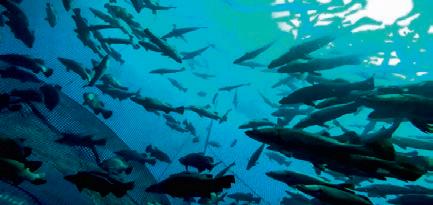
Further consultation on fish health and welfare, and benthic impact aspects of the Farm Standard took place in the autumn. The ASC planned to pilot the standard in late 2022, with a final round of public consultation in September 2023.
In April, the world’s biggest seafood trade event –Seafood Expo Global/Seafood Processing Global – took place for the first time since 2019, following a break during the height of the Covid pandemic. It was the first time that the Expo was held in the Fira de Barcelona Gran Via after many years in Brussels.
Nearly 27,000 seafood buyers, suppliers and supply chain representatives attended, and the Expo featured 1,550 exhibiting companies from 76 different countries from
Global standards continued to evolve in 2022 as fish prices – and feed prices – rocketed
around the world. While exhibitor numbers were slightly down on the 2019 event – mainly due to a very limited Chinese contingent and no Russian presence at all – visitor numbers were up and the consensus was that Barcelona had proved to be an excellent venue.

In June, we reported that four of the biggest Norwegian-owned salmon companies – Mowi, SalMar, Lerøy and Grieg – had reached a settlement for US $85m (£67.6m) in a class action in the US over alleged anti-competitive behaviour.

In a joint statement, the companies admitted no wrongdoing and said they had reached a settlement in order to save the cost and time of a court case.
On a more positive note, the Global Salmon Initiative (GSI), which represents some of the most significant producers in the sector, reported progress in cutting down on the use of antibiotics, managing sea lice through holistic methods and reducing the proportion of marine ingredients in aquafeed.
GSI CEO Sophie Ryan said: “This report is our way of motivating progress, holding one another accountable and doubling down on areas where we need to improve and innovate faster.”



In July, Rabobank’s Global Aquaculture Update warned that a downturn in consumer demand, combined with rising production costs, was set to hit aquaculture producers’ profits for the second half of the year.
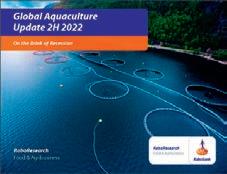
Rabobank said it expected to see weaker consumer demand in Europe and North America in the second half of 2022 compared with the first half.
The report said that with softening demand, price corrections and persistently high production costs, salmon and shrimp farmer profits were likely to decline from recent highs.
Gorjan Nikolik, Senior Global Specialist, Seafood, at Rabobank, said:


“The US remains a strong demand driver for seafood, but foodservice demand is clearly declining. This could be the beginning of a long, challenging period in the US. But China has the potential to be the key driver of demand for shrimp, and possibly salmon, in Q4 2022.
“Although we remain optimistic that China will once again become an important driver of shrimp and salmon demand before the end of the year, Covid lockdowns and import restrictions greatly decrease the probability.”

Rabobank said farmers were facing continuing high feed, freight and energy costs, and the high levels of profitability seen in the early part of 2022 were not likely to persist.


With continuing inflation, faltering growth in a number of economies and the war in Ukraine showing no signs of ending soon, the outlook for 2023 looks challenging.
from top: Fish market, China; ASC-accredited farm This page from top: Sophie Ryan; Wally Stevens; Rabobank report; Norwegian salmon pack; Seafood Expo Global stands
“
The consensus was that
Barcelona had proved to be an excellent venue”Opposite
January saw seafood investor Bluefront Equity investing an undisclosed amount in Bio Marine AS, a specialist in oxygen and lighting solutions for fish farming.
Former Mowi Chief Executive Officer Alf-Helge Aarskog was appointed as the company’s chairperson.
Bio Marine offers equipment and systems for environmental control in aquaculture, particularly for ocean-based pens. The company, which is headquartered in Surnadal, Norway, is a leading player within oxygen systems for aquaculture and offers a variety of other solutions for environmental control of pens.

In February, the Scottish government’s Cabinet Secretary for Rural Affairs and Islands, Mairi Gougeon, presided online at the
official opening of the expanded European Marine Science Park (EMSP) in Dunstaffnage, near Oban.
The additional laboratory and office facilities have been created at Malin House, part of the EMSP following a £2m investment by the park’s developer, Highlands and Islands Enterprise.
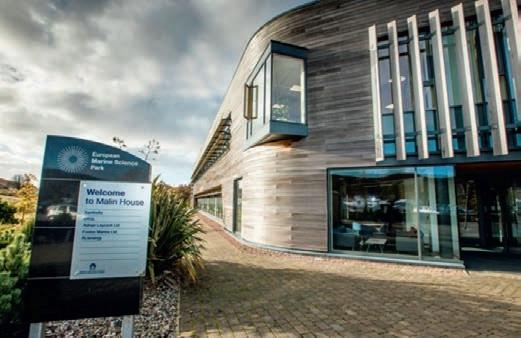
From shrimp feeding to underwater robots, technology promises to transform aquaculture
The project was prompted by companies at the park looking to expand their commercial activity, according to HIE.
The new laboratories and offices were designed in consultation with those companies and the work was carried out by local contractor TSL Limited.
Five companies have expanded into the new workspace: Patogen AS, Tritonia Scientific Ltd, Ocean Ecology, Oceanium and Shetland firm Ocean Kinetics, which has established new operations in Argyll.
February saw the official launch of
the Global Underwater Hub (GUH), a new trade and marketing body, at the Subsea Expo in Aberdeen. GUH, the successor to the former Subsea UK, estimates that the global market for underwater services is set to grow from £50bn to £140bn by 2035.
The UK’s own underwater sector, currently accounting for £8bn in revenue, could reach £45bn by the same time, GUH estimated – and aquaculture is helping to drive that demand.
If the UK can hang on to its significant share – estimated to be about a third of the global market – then, GUH says, underwater technology and services could create £20bn in exports and 180,000 new jobs.
In May, we reported that feed giant BioMar was buying AQ1 Systems, a supplier of feeding-control technology for shrimp aquaculture.
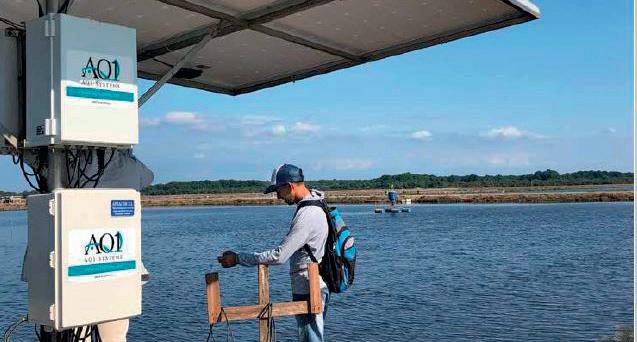
Tasmania-based AQ1 uses acoustic and optical sensing technology to provide feeding control and sizing solutions. The move appears to be motivated by an increasing interest in the shrimp feed market on BioMar’s part.
Also in May, the Global Seafood
Opposite from top: Bio Marine oxygenation in a salmon pen; European Marine Science Park
Above: AQ1’s shrimpfeeding technology
This page from top:
Regal Springs tilapia farm; Ken Fujiwara; Havkraft wave power plant
Opposite: Heather Jones, SAIC



Alliance (GSA) announced a partnership with tech business Envisible to collaborate on a sourcing and traceability solution for the industry worldwide. The platform will allow data from different tracing systems to be shown together in one format.
Envisible will digitise the GSA’s operations in a multi-year partnership that will leverage supply chain information for Best Aquaculture Practices and Best Seafood Practices stakeholders across the globe. This initiative, the GSA said, will enable its partners and endorsers to visualise non-identifiable data shared from stakeholders throughout certified supply chains.
BioFeyn, an aquafeed biotechnology business using nature-based materials, was named as the winner of the Seafood Innovation Award at the North Atlantic Seafood Forum in June.
BioFeyn applies biotechnology developed for human healthcare to create a solution that encapsulates aquafeed and feed additives in a biodegradable shell that is easily absorbed by the fish. The company is headquartered in the US, but works primarily with the aquaculture sector in Norway.
Runners up in the Seafood Innovation Award were:
• Marea, which provides a packaging solution based on algae;

• EasyX, which has designed a “vertical cleaning robot” for fish tanks and land-based aquaculture;

• Submerged AS, which has developed a system for counting fish in pens and calculating biomass;

• Wellfish Diagnostics, a UK-based business offering an alternative to lethal fish diagnosis, using blood tests;
• Tekslo Seafood, which is developing farmed seaweed;
• SoftSeaweed, a software developer that offers a monitoring and management solution for seaweed farmers; and
• Searas, which offers new technology for waste treatment and water quality monitoring for closed fish farming.
The awards were sponsored by NCE Innovation Cluster, Pareto and DNB.
Meanwhile, UK-based Ace Aquatec announced that it was working on a humane stunning solution for Regal Springs, one of the world’s biggest tilapia farmers. Originally developed for salmon, the in-water stunning system is being adapted for tilapia.


The project came about with the support of a £1m grant from the Humane Slaughter Association.
Emily McGregor, Regal Springs’ Sustainability Manager, said: “This is a huge step forward from thermal stunning to a more humane and controlled stunning process and, with this, towards better fish welfare.”
In August, we reported that Norwegian trout farmer Svanøy Habruk was planning to become the
“This is a huge step forward… more humane and controlled stunning process”
world’s first aquaculture business to use wave power to generate its electricity.
The wave power plant will be developed and installed by Havkraft, close to the island of Svanøy in western Norway. It will be based on the Havkraft Wave Energy Converter and, Svanøy Havbruk hopes, the plant will be installed during 2023.
Meanwhile, the cofounder of a Japanese tech company using machine learning to make aquaculture more efficient was honoured with an international award. Ken Fujiwara was named as a Hero of Progress in an awards programme initiated by digital security business ESET.
Together with his colleagues Masahiko Yamada and Takuma
Okamoto, Fujiwara founded UMITRON, a business based in Japan and Singapore that builds user-friendly data platforms using IoT (Internet of Things), satellite remote sensing and artificial intelligence. UMITRON aims to reduce business risk, cut waste by ensuring precision feeding and improve fish welfare.
In October, the Sustainable Aquaculture Innovation Centre (SAIC) opened a new funding call for collaborative innovation projects.
SAIC planned to split the funds, more than £500,000, between successful project proposals designed to future-proof Scottish aquaculture and support sustainable growth while minimising its environmental impact.

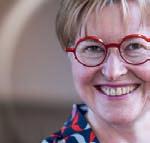
Heather Jones, CEO of SAIC, said: “Particularly during challenging times, it is important to continue supporting innovation that will help to shape the future of aquaculture. “Collaborative research and knowledge sharing is helping to drive the whole sector forward, making it more efficient and more sustainable so that it can continue to fulfil the rising demand for high-quality protein for years to come.”


James Dick: j.r.dick@stir.ac.uk

Fiona Strachan: fiona.strachan@stir.ac.uk



as a shareholder, we have a strong foundation to develop Enorm to commercial scale.”
The fly larvae feed on residual biomass from the food industry, concentrate nutrients and can be processed into ingredients rich in protein and fat as a sustainable alternative to traditional sources of feed. The ingredients can be used as feed for pigs, poultry, fish and pets, and potentially even for human food.

The company said feeding trials, with Enorm insect meal, at the National Institute of Aquatic Resources at the Technical University of Denmark had showed promising protein digestibility for trout and tilapia.
Feed is the biggest day-to-day expense in aquaculture and 2022 saw a huge focus on the cost of feed – not only its financial cost, but also its environmental cost.
In January, Danish insect protein business Enorm Biofactory raised €50m (£42m) in a funding round to enable it to scale up its production by 70 times.
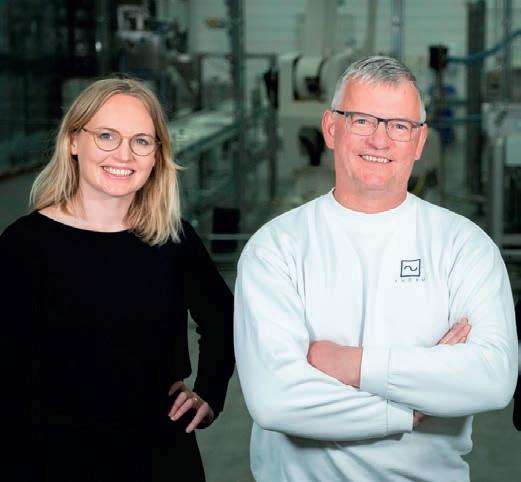
Enorm produces insect protein from black soldier fly larvae for animal and aquafeed. The company’s facility has an output of three tonnes per week, but the January funding round opened the way for an expanded factory producing around 11,000 tonnes annually.
Enorm’s CEO, Carsten Lind Pedersen, said: “With our current suppliers and cooperation partners, and DLG
In March, feed company BioMar was ordered to pay its competitor STIM NOK 36m (£3.1m) over breach of patent on a smolt feed.
The ruling, by the Borgarting Court of Appeal in Norway was the latest chapter in the long-running legal dispute between STIM and BioMar over the latter’s Intro Tuning smoltification feed. STIM claimed Intro Tuning infringed the patent protection of its own product, SuperSmolt Feed Only.
The smoltification feed is aimed at stimulating growth for juvenile salmon and enabling faster growth
in full light so the smolt can be introduced into seawater safely within a shorter time. BioMar simply copied STIM’s formula, STIM said, once it was clear that it was commercially successful.
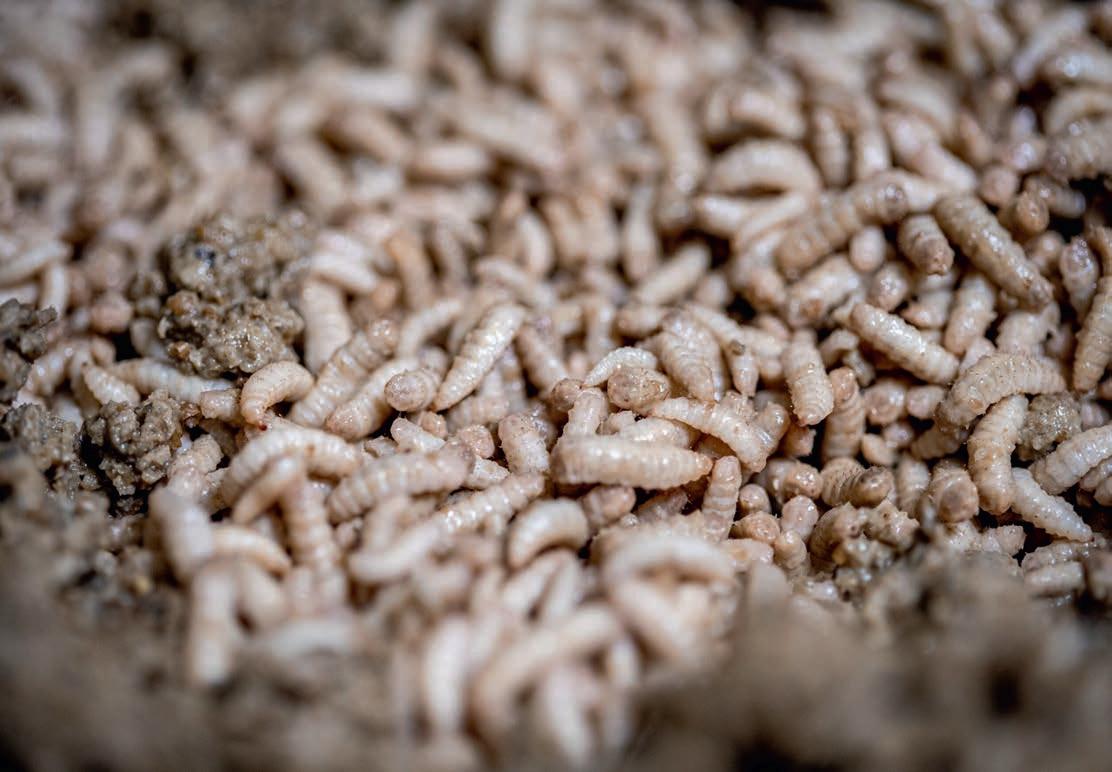
STIM hailed the validation of its patent. STIM CEO Jim-Roger Nordly said: “This is above all a victory for innovation and for the industry we are part of. Our company has always put great effort and resources into creating new products and solutions that can improve fish health and welfare, and the aquaculture industry as a whole. This ruling sends a clear signal that large international companies are not free to exploit such innovations. It is important not only for us, but for all
companies involved in development efforts.”
The Appeal Court said: “…BioMar developed Intro Tuning in a way that was not widely accepted in the industry, and that appears clearly blameworthy and contrary to considerations of healthy competition.”





 Opposite: Jane L.Sam and Carsten Lind Pedersen, Enorm Biofactory
This page from top: Black soldier fly larvae; Jim-Roger Nordly, STIM
Opposite: Jane L.Sam and Carsten Lind Pedersen, Enorm Biofactory
This page from top: Black soldier fly larvae; Jim-Roger Nordly, STIM
HAVE
Above: STIM small fish
Centre: Fish feed

Opposite: Sea bream
In July, the Norwegian Supreme Court Appeals Selection Committee threw out BioMar’s appeal against the Borgarting decision.
Håvard Yngve Jørgensen, Managing Director, BioMar Norway, commented: “We are disappointed with the decision by Norway’s Supreme Court and are taking note of it.”

In 2020, both sides claimed vindication after the Oslo District Court ruled that BioMar could continue to produce and sell Intro Tuning – albeit with a revised formula – following the replacement of a key amino acid, L-Tryptophane, in the BioMar product. An appeal


by STIM against that decision was dismissed at the Borgarting Court of Appeal in April 2021.
In June, we learned that sea bass and sea bream raised on a diet with a high proportion of fish trimmings are safe to consume, according to a study carried out for feed company Aquasoja.
Fish trimmings are increasingly being used in aquafeed as an alternative to fishmeal from wild catch sources to reduce the pressure on wild stocks. There have been concerns, however, that this could led to high levels of mercury, creating a health risk for human consumers.
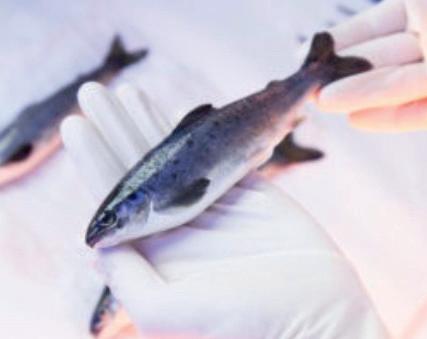
In a study presented to the XXth International Symposium on Fish Nutrition and Feeding, researchers from Aquasoja’s technical team assessed the levels of mercury in its organic form, methylmercury, in fish that had been fed on a diet with 20–25% fishmeal from trimmings, byproducts from fish processing.






Tiago Aires and Sara Magalhães of Aquasoja said: “The results of our study show a positive and significant correlation between the body weight of the fish and the mercury concentration in the fillet, although at levels far below the legal maximum [of 0.5 milligrams per kilogram, as set by the European Food Safety Authority [EFSA].”
The levels of methylmercury found were also lower than those commonly found in wild-caught species such as hake and tuna.

The researchers also pointed out that the manufacturing method for aquafeed makes it possible to measure and control the levels of mercury concentration.









“
”
The EFSA regularly conducts consumer surveys to determine the likely exposure to mercury, and continues to recommend including fish and shellfish as a regular part of a healthy diet, especially for children.
In August, we reported that researchers in the UK are looking into hemp – otherwise known as the cannabis plant – as a potential source of protein in aquafeed.

Salmon lovers hoping that this might add an extra mood-altering kick to their favourite fish are set for disappointment, however.
Rare Earth Global, growers of industrial hemp for a range of sustainable products, received £50,000 in funding from the UK Seafood Innovation Fund (SIF) to explore how hemp seeds could be integrated into the diets of farmed salmon in Scotland.
With support from the Sustainable Aquaculture Innovation Centre (SAIC) and the University of Stirling’s Institute of Aquaculture, the project team undertook a feasibility trial to assess the impact of hemp protein on fish health and wellbeing, looking at factors such as digestibility and nutritional value.
Researchers from the Institute of Aquaculture have been conducting trials at the University of Stirling’s facilities to assess how salmon react to different varieties of the hemp plant and any impact that the ingredient has on gut bacteria and the digestive system.




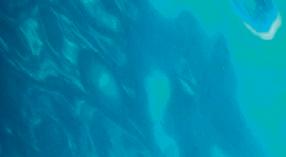

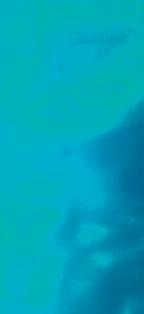




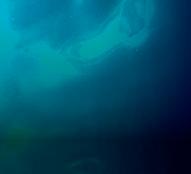


























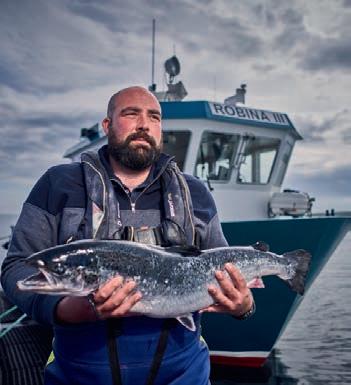











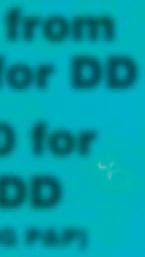




Biological issues were never far away from farmers’ minds over the past 12 months
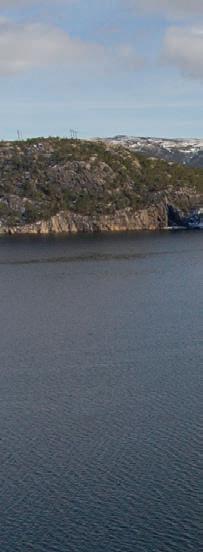
Fish health and welfare remained high on the agenda for producers in 2022.
In March, we reported a significant hire by Mowi Scotland, which named Hervé Migaud as its Fish Health, Welfare and Biology Director. Migaud joined Mowi from the University of Stirling’s Institute of Aquaculture, where he was a professor and head of the Production Research Group. He was also President of the European Aquaculture Society, an office he held until his term ended at the EAS AGM in September.

Biological issues continued to be a problem for salmon farmers. Iceland’s Arctic Fish, for example, reported that an incident that affected one of its sites in February was set to cost the company around ISK 1.5bn (almost £9m).

In this case, it was stormy weather and exceptionally cold temperatures in the seas around Iceland that had caused the excess mortalities. Around 25,000 tonnes of fish were lost and the slaughter ship Norwegian Gannet was brought in to harvest the affected fish.
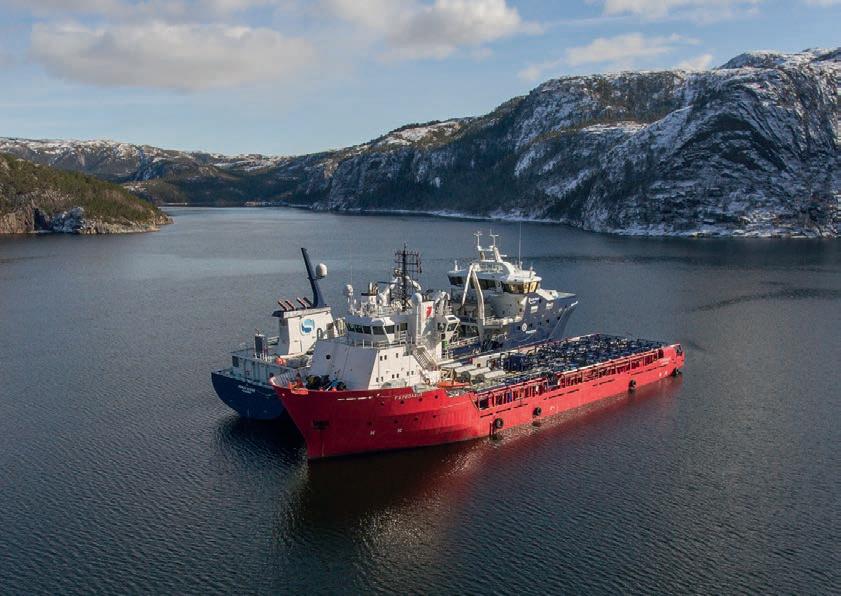
Bakkafrost Scotland (The Scottish Salmon Company, as it was at the start of the year) and Mowi were among those producers in Scotland warning that harvest levels for 2022 would not match those for the previous year.
Bakkafrost’s annual report for 2021 shows that biological problems contributed to a pre-tax loss for Bakkafrost Scotland of £46.18m, with turnover down £14.5m. The Top:
issues included compromised gill health and secondary complications including blooms of micro-jellyfish and “fish handling during necessary treatments”.








The company has been taking action to address these problems, with further investment in the Applecross hatchery – to grow smolts to a larger size before they are released into the sea, helping survivability – and the deployment of a new delousing and farm service vessel, the Bakkanes.

In Norway and the Faroes, SalMar, Lerøy Seafood, Bakkafrost and Norway Royal Salmon all also warned that 2022 was likely to see lower harvests thanks to biological issues.



The farmers were not helped by high sea temperatures during what proved to be an exceptionally warm summer across Europe, and particularly by an increasing proliferation of hydrozoans (micro-jellyfish) which are associated with gill health problems.














A novel sea lice treatment helped boost earnings for aquaculture health and nutrition group Benchmark. The company reported revenues up 38% year on year for the first quarter of this year, after its long-awaited CleanTreat system started commercial operations.


CleanTreat, combined with Benchmark’s Ectosan Vet

pesticide, aims to treat lice chemically in a process that neutralises the chemicals used before the waste water is flushed away.
There was more good news for Benchmark in May when NoMa, the Norwegian Medicines Agency, ruled that the water used in the Ectosan Vet treatment could be reused for a second batch of fish, subject to water quality tests. The decision means that Ectosan/CleanTreat is now a more economical option for farmers.
Less happily, human error caused a spill of Ectosan, which is harmless to fish and mammals at low doses, but deadly to invertebrates, at a fish farm in Nordland, Norway. Benchmark said that Ectosan “degrades rapidly on exposure water and sunlight” and the impact on the marine environment was minimal.
In April, we reported that finfish and shellfish farmers in Shetland would soon be able to get an early warning
of harmful algal blooms, thanks to grant funding from Highlands and Islands Enterprise for an imaging flow cytobot – an autonomous device that can scan water samples for phytoplankton using flow cytometry, lasers and cameras.

The project is being managed by the University of the Highlands and Islands (UHI), Shetland, and the device was developed by McLane Research Laboratories in the US.

Meanwhile, Cermaq – which produces salmon in Norway, Canada and Chile – had good news to report, with a 95% survival rate for its Atlantic salmon in 2021. The statistic was part of the group’s annual Global
Opposite from top
The new delousing and farm service vessel, the Bakkanes; hydrozoan (“microjellyfish”); CleanTreat Benchmark vessel
This page from top: Imaging flow cytobot; Bakkafrost Scotland, Applecross
Reporting Initiative report.





There was also an accolade for Mowi, which received a special award at the Compassion in World Farming Awards in June for its commitment to fish welfare, especially as regards reduced stocking densities and the introduction of humane percussive stun-kill systems for all of its operations.

Infectious salmon anaemia (ISA), which has been a problem for Norway over the past few years, was also detected in Iceland this year. In July, we reported that the Icelandic government had set up a working group to look into the factors behind outbreaks in the east of the country.
Earlier in the summer, Icelandic firm Ice Fish Farm had been hit by ISA outbreaks causing the loss of up to two million fish.
“
WildFish have made it clear they have little understanding of our business”
This page from top: Lumpfish; Ana Herrero, Mowi, checking salmon Opposite from top: Carlo C. Lazado’s hydrogen sulphide trials, inaugurated the new ‘one tank one RAS’ infrastructure at Nofima; Mike Baker; Benchmark CleanTreat tanks
In July, Norway Royal Salmon was forced to cull around 800,000 triploid salmon after detecting parvicapsulose disease, which is caused by the parvicapsula parasite. The incident occurred at a site in Alta municipality in Finnmark, northern Norway. Parvicapsula is not common, but it can cause mortalities among salmon.
In October, we reported that Scotland had won the honour of hosting the next International Sea
Lice Conference, which will be held in 2024. The successful bid was led by the Sustainable Aquaculture Innovation Centre (SAIC), and the conference will bring together leading international scientists, fish health practitioners and regulatory agencies to share research and exchange insights on the sea lice issue.


Meanwhile, conservation lobby group WildFish claimed that fish farmers in Scotland were using a loophole to avoid mandatory reporting of sea lice numbers. The organisation said that the grace period known as the “withdrawal period prior to harvest”, during which lice counts are not required, had been extended for longer than necessary on a number of occasions.
The regulator, Marine Scotland, dismissed the claim and said the “vast majority” of the 200-plus sites producing Atlantic salmon in seawater are reporting as they should.





Tavish Scott, Chief Executive of trade body Salmon Scotland, said: “’WildFish’ has made it clear it has

little understanding of our business, despite our members remaining open to engaging with it.”

So-called “cleaner fish” – mainly lumpfish (lumpsucker) and wrasse – are increasingly being used to help control sea lice numbers. These fish eat the sea lice that trouble salmon and trout, but they have their own welfare needs too, and some early deployments were unsuccessful because of high mortality among the cleaners.

The Centre for Sustainable Aquatic Research (CSAR) at the University of Swansea developed a free, easy-to-use online application to help farmers assess the health of their lumpfish.
The Lumpfish Operational Welfare Score Index (LOWSI) uses weight data (body mass index) and a





visual assessment for a sample of fish to indicate whether the health of the population as a whole is good, moderately compromised or severely compromised. LOWSI also recommends action to take based on the health report.
In November, RSPCA Assured – the RSPCA’s higher welfare food label and farm assurance scheme – announced that it had appointed Mike Baker as its new Chief Executive. Baker took up his new role on 1 December 2022, after previously spending eight months as RSPCA Assured’s interim Chief Executive. RSPCA Assured certifies the vast majority of salmon and trout net-pen farms in Scotland.
November’s Fish Farmer also included an article from Norway’s food research institute, Nofima, on new research that suggests salmon have a sensitive nose for hydrogen sulphide (H2S). This gas is a menace to fish in recirculating aquaculture systems (RAS) and it can form very quickly in a RAS biofilter.

The research at Nofima, led by Carlo C. Lazado, found that fish exposed to various levels of H2S could exhibit behavioural changes if the exposure was long term, although shortterm exposure was less problematic. It also found that the nose of a fish reacts most strongly to the gas during chronic exposure.
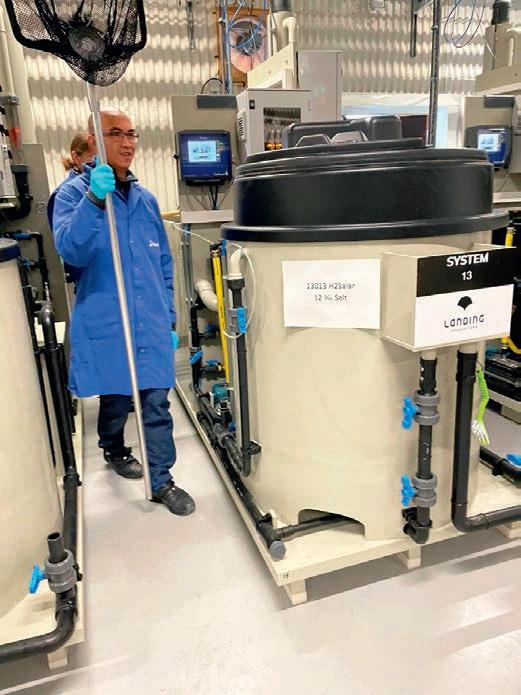
“Salmon have a sensitive nose for hydrogen sulphide”
Concern over the fate of wild Atlantic salmon continued throughout the past year and a key question remains how much of the hazards faced by wild fish are related to aquaculture.
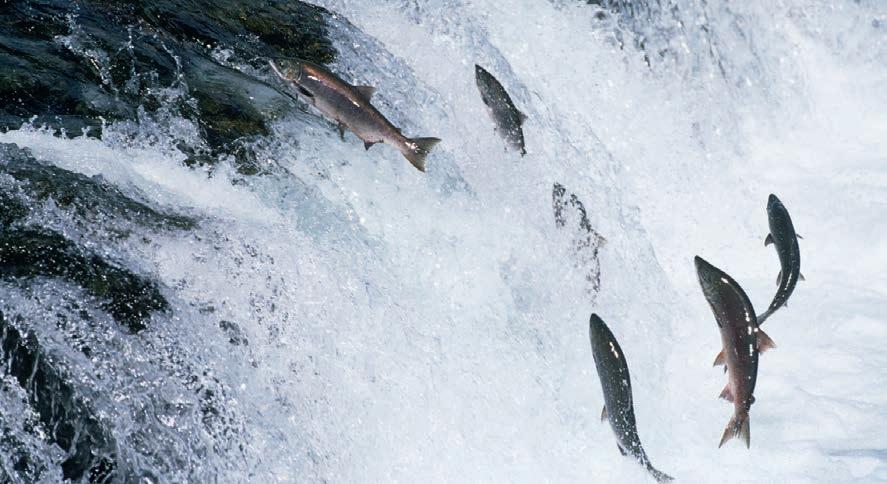
Fish Farmer’s January issue included a report on a paper by our own columnist, Dr Martin Jaffa, who published research that appears to show that the supposed correlation between fish farms and wild salmon decline is mistaken.
Jaffa’s paper, based on rod-catch records going back as far as 1952, analysed the trends for catches of larger Atlantic salmon (that spend up to four years at sea before returning to fresh water) and
smaller “grilse” that spend just one winter at sea.
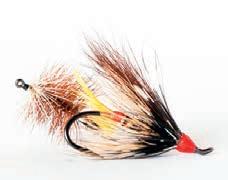

He concluded that, overall, numbers of the larger salmon had declined on Scotland’s east coast – where there are no farms – as well as in the west, while grilse numbers on the west coast have been rising.
The paper suggests that cyclical factors relating to changing sea temperatures and variations in growth rates at sea could explain variations in wild salmon numbers, going back to the earliest documented records in the 1740s.

Jaffa said the research “should end the scapegoating of the salmon farming industry as the cause of population declines in wild salmon”.
Also in January, the Scottish government launched an action plan
This page from top: Wild Scottish salmon; Fly fishing hook

Opposite: Wild salmon swimming
 The decline in wild salmon and trout numbers made headlines in 2022
The decline in wild salmon and trout numbers made headlines in 2022
to halt the decline in Scottish salmon. Rural Affairs Secretary Mairi Gougeon said: “There is now significant evidence showing that populations of Atlantic salmon are at crisis point and we must now reinvigorate our collective efforts to ensure a positive future for the species.”

The strategy highlights five priority themes for action, including improving the condition of rivers, managing exploitation, including the effectiveness of deterrents to poachers, understanding and mitigating pressures salmon face in the marine and coastal environment, international collaboration and developing a modernised policy framework.




Gougeon cited the resurgence in salmon numbers in the River Clyde as evidence that concerted action could help stocks to recover.
Later in the year, more detail was announced on funding for the National Adult Sampling Plan – effectively a census of wild salmonids – and the development of a standardised fisheries management plan template for use across Scotland.



Andrew Graham-Stewart, Chief Executive of WildFish (formerly Salmon & Trout Conservation), was unhappy, however, that there was not a commitment to more measures, such as removing barriers to salmon migration, and tree planting along rivers and streams to help reduce water temperatures.
More evidence of the scale of the challenge emerged in June, when we reported that rod-catch figures for salmon and sea trout were the lowest in Scotland since national records began in 1952.
for sea trout was 77%.
The picture south of the border was no better, with the Environment Agency’s report for 2021 estimating that wild salmon numbers had reached their lowest point on record. Out of 64 major salmon rivers in England and Wales, 51 were “at risk”.
The Environment Agency said: “Climate change is leading to rising sea and river temperatures, and overfishing is impacting on salmon stocks globally.
“Water quality in rivers and estuaries can also affect the fish lifecycle [and so can] barriers stopping salmon travelling upstream.”


The spring catch for salmon was 66% of the previous five-year average, while the equivalent figure
Meanwhile, this year the industry-backed Wild Salmonid Support Fund pledged an additional £120,000 for conservation projects to support wild salmon and sea trout. Projects funded this year included the restoration of the Fincastle Dam on West Harris, which allows salmon to return to their spawning grounds, and habitat restoration around Loch Lomond and Ayrshire.

This year has seen innovation continuing in the field of containment.
In January, we reported that aquaculture technology business AKVA Aquaculture supplier is hoping to produce the world’s first salmon pen made entirely of recycled plastic.
The AKVA group is working with plastic recycling business Oceanise and manufacturer Plasto in a project supported by the Handelens Miljøfond (the Norwegian Retailers’ Environment Fund).

Due to requirements for material quality that are regulated by a technical standard, NS 9415 (2009), mainly virgin plastic is used in loadbearing structures in salmon pens. The project partners aim to show that recycled plastic from a discarded aquaculture facility has the qualities to meet the standard’s requirements.
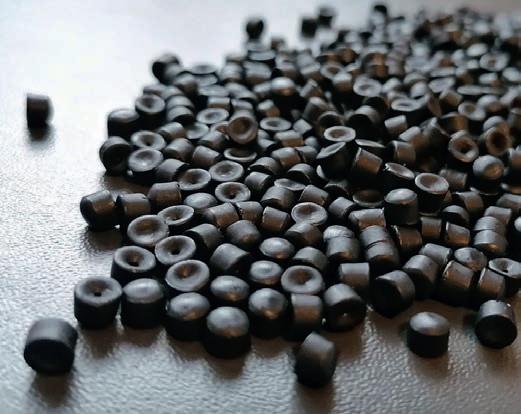
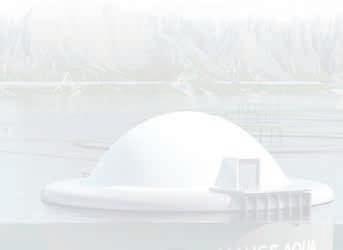
AKVA group has already used recycled plastic on the pen walkways,
but this project will make it possible to produce the entire pen based on recycled plastic from discarded pens.
Up to 12,000 tonnes of plastic waste is generated annually from the aquaculture industry.

Also in January, two leading producers of semi-closed fish farming cages, FiiZK and Ecomerden, announced they were merging.
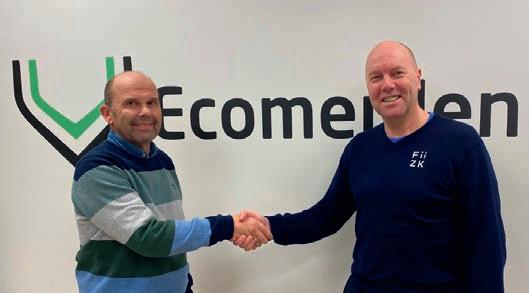
In a joint statement, FiiZK and Ecomerden said: “The integration of the companies has already begun to ensure a successful and efficient merger process with customers and suppliers.”


FiiZK and Ecomerden are leading players in the development and delivery of semi-closed cage systems, which some hope will enable fish farming at marine sites to continue
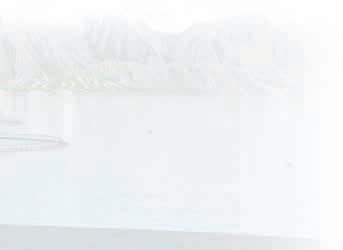
New thinking is transforming the way fish farms will approach containment in future
while minimising the risk from threats such as sea lice and harmful algal blooms.
General Manager of FiiZK, Torstein Rønning, said: “By combining the companies’ knowledge and technologies, we will strengthen delivery capacity at the same time as we accelerate further development of design and functionality.”
Jan Erik Kyrkjebø, General Manager of Ecomerden, said that he looked forward to bringing his employees and technology into a larger company to strengthen the opportunities this will provide for Ecomerden’s solutions.






In February, we learned from a report published by the Norwegian Directorate of Fisheries that just one major incident accounted for the majority of escapes in that country.
Approximately 61,000 salmon and 7,700 rainbow trout escaped
from Norwegian farms in 2021, but this included the escape of nearly 40,000 salmon form a farm run by Midt-Norsk Havbruk in the Trondelag region. An estimated 13,000 of the escaped fish in that incident were recovered.
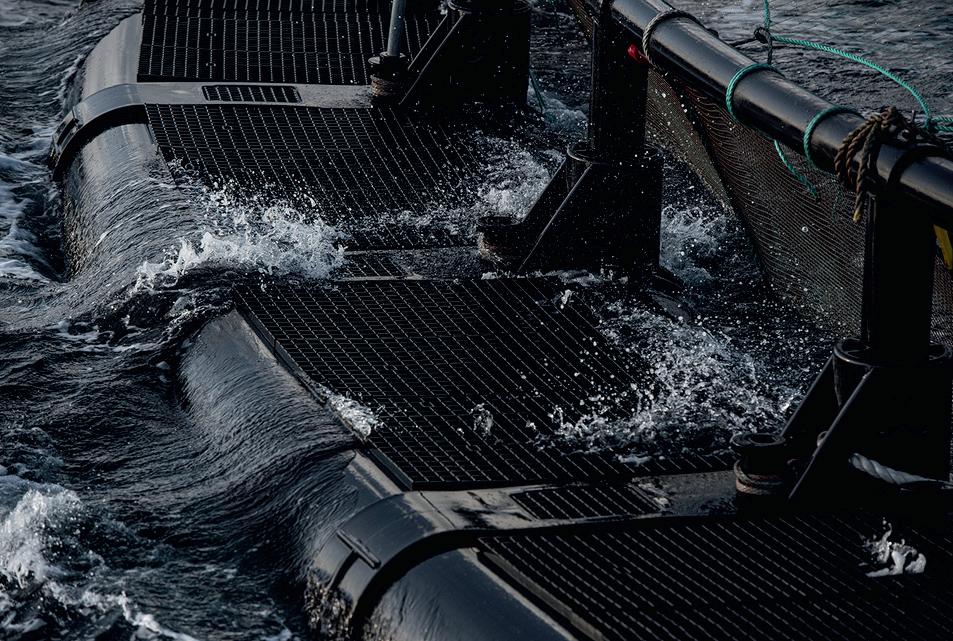
In April, Scotland’s salmon farmers introduced a system for reporting marine litter in a bid to help keep beaches free of plastic and other waste.

“By combining the companies’ knowledge and technologies, we will strengthen delivery capacity”
Scotland, is encouraging people to report waste, regardless of the source, so that salmon farmers close to the location can help remove it.
Salmon Scotland has set up a dedicated inbox – reportdebris@ salmonscotland.co.uk – to report waste along the coast. The information will be collated centrally and reported to local teams for recovery.
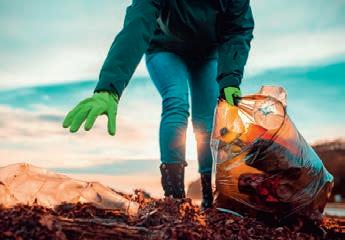
Those contacting the service are being asked, if possible, to provide a “what3words” location code and a photo.
The company behind one of the most eye-catching cage designs, the Hauge “Egg”, said goodbye to Mowi as a partner, while investment firm Akvakulturpartner AS increased its shareholding in the project.
Akvakulturpartner has been a



for some time and has shown strong interest in the Egg project (also known as Eggett) which is shaped like an egg and is designed to solve some of the problems associated with salmon farming such as lice, escapes and pollution.
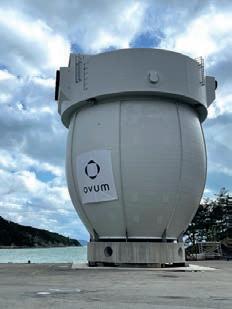
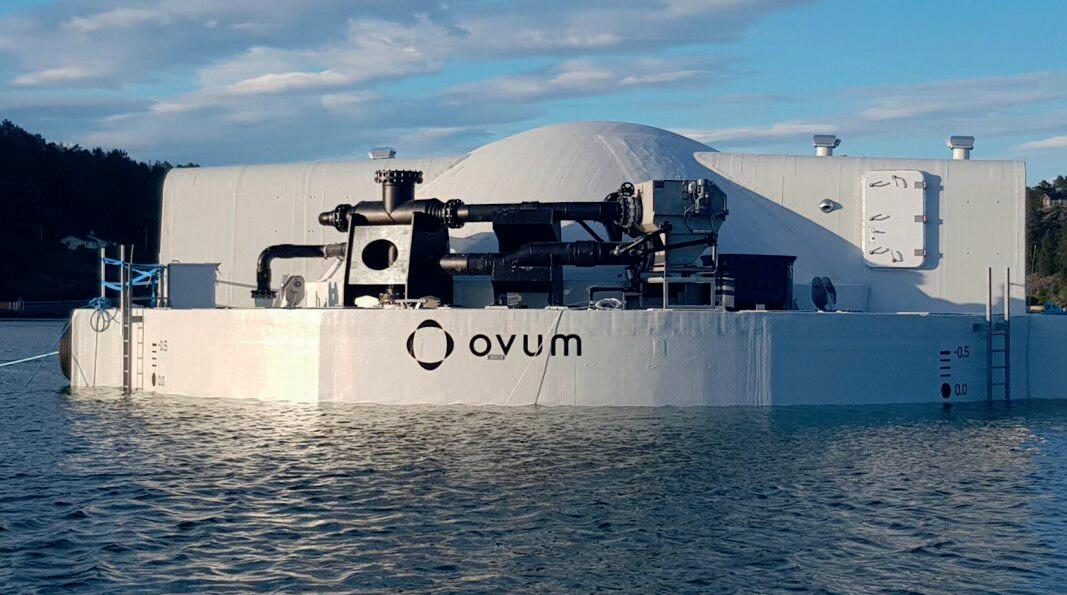
One of Akvakulturpartners’ principal shareholders is the former Manchester United manager Ole Gunnar Solskjær.
Akvakulturpartner founder BjørnVegard Løvik said: “For the players in Akvakulturpartner, this investment fits in perfectly with our goal of building business activities in aquaculture both regionally and globally.


“We ‘wear long protein glasses’ and it is sustainable to invest in new technology that can take this fantastic industry forward. We want to be a part of the development of closed fish farming at sea- and land-based [operations] as part of future growth in aquaculture, and we are therefore grateful that we got this agreement.”
The Egg made its first public appearance in Norway in May, attracting a large number of onlookers. Standing 21 metres tall, the size and unique design of the Egg was impressive. The builders, Herde
“We want to be a part of the development of closed fish farming at sea”
Kompositt, designed the closedcontainment fish farm.
Even at this scale, the pilot plant has been dubbed “mini egg” because it is just a tenth of the size of the eventual future constructions that the company is planning.
In October, the first batch of 50,000 smolts, averaging 150g in weight, were released into the pilot version of the Egg, moored at Romsdalsfjord, Norway.
In July, we reported that the Norwegian government was preparing to set out its future regulatory proposals for offshore salmon farming.

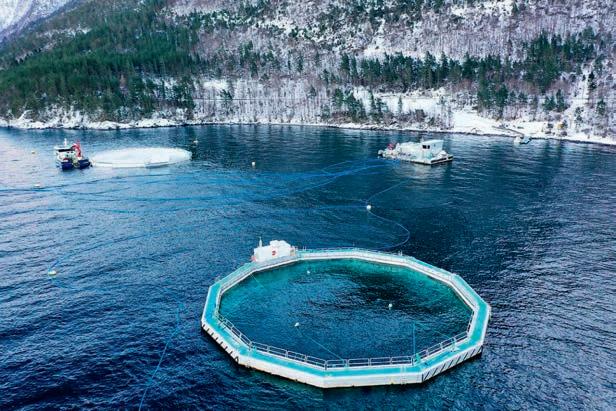
The rules proposed for farming further out to sea are different from those imposed by the “traffic light” scheme that governs coastal aquaculture in Norway.
Fisheries and Oceans
Minister Bjørnar Skjæran said the goal was to be at the forefront of developing the world’s most productive and environmentally friendly offshore aquaculture industry while providing food





Opposite from top: The Hauge “Egg”; Collecting marine waste Above: Ecomerden cage
Left: Bjørnar Skjæran

for a growing world market.
The proposal is the first to be sent for consultation after an interministerial working group submitted the report, Aquacultureatsea–new technology,newareas, published in December 2018.
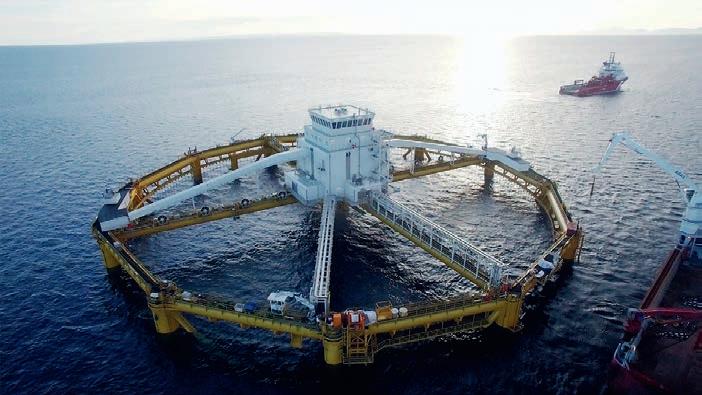
The proposal includes the overall regime for the identification and facilitation of areas for offshore aquaculture, as well as the introduction of a separate licensing regime at sea.
Skjæran added: “Experience shows that it is possible to establish farming further at sea, but then the authorities must facilitate this. At the same time, it is important to find out how to effectively handle challenges that may accompany such an operation and set a clear framework for it.”
A number of producers, such as SalMar, are already developing engineering solutions that are robust enough to allow fish farms to be placed in offshore, high-energy locations.
In September, the Norwegian government also announced it was tightening the rules around the escape of farmed fish, with new requirements coming into force next year.
Skjæran said: “We have laid down a revised set of regulations that increases protection against fish
escapes at the farms, while at the same time giving the industry more flexibility.”
Escapes were a major problem three years ago. The situation has improved considerably since then, although they still occur from time to time.
Known as the “NYTEK 23 regulation”, the rules replace the last NYTEK regulation from 10 years ago. The new regulation is designed to ensure there are proper technical standards in place at the farms along the coast.
Skjæran explained: “NYTEK 23 is a technology-neutral set of regulations. It facilitates freedom of choice, development and innovation better than the current regulations. I believe that it will benefit both the industry and the wild salmon.”
The regulations now contain new and overarching requirements on planning, use and maintenance.
“Technology neutral” means that the requirements are formulated so that producers have more freedom to choose how they want to implement them.
Skjæran said: “The industry is constantly developing. It is absolutely crucial that the regulations do not stand in the way of developing new and better solutions. Better conditions for innovation and further development can contribute to even better escape safety in the long term.”
“It is… crucial that the regulations do not stand in the way of… new and better solutions”
Cutting the carbon footprint for vessels is now a key aim for operators
Arecurring theme in the boats and barges sector during 2022 was the increasing trend to replace all-diesel vessels with hybrid diesel-electric models.
In March, we reported that workboat operator Inverlussa Marine Services had ordered an additional vessel from Nauplius Workboats. The contract followed a previous order placed late last year. Both of the orders were for hybrid workboats powered by a diesel-electric propulsion system.
The first vessel will be named Eloise Eslea and was delivered in November, with the second vessel (currently known as N023), due to be delivered in late December. N023 is a 27m x 13m workboat. Inverlussa expected to recruit an additional 12 crew/staff, taking the company’s head count to 115 local employees.

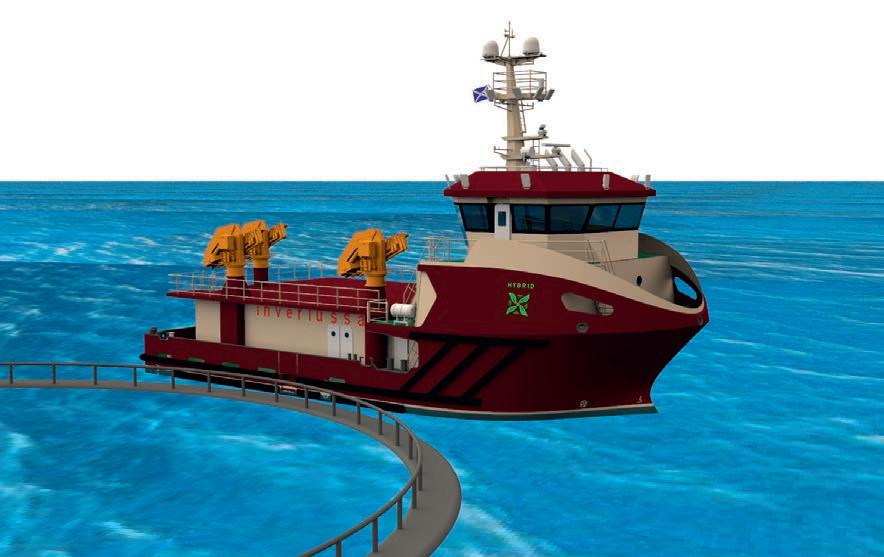
Ben Wilson, Inverlussa’s Managing Director, said: “As a business, we want to be an industry leader, building a reputation as a leading and forward-thinking partner in the Scottish aquaculture sector. We aim to achieve this

through continually reinvesting and innovating, with a strong focus on working with the most talented crew in the industry. This order for two newly designed hybrid vessels show Inverlussa’s commitment to delivering the best service to our customers.”

Also in March, wellboat operator Sølvtrans announced that it had selected marine cooling systems specialist Hydroniq Coolers as a preferred supplier.

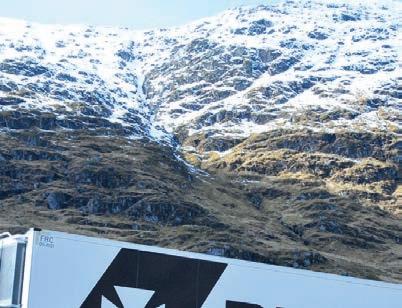

Hydroniq Coolers, which is headquartered at Ellingsøy outside Ålesund, Norway, has in recent years delivered its hull-integrated “Rack” marine cooling system to several of Sølvtrans’ wellboats, including numerous vessels that Norwegian shipyards Myklebust Verft and Aas Mekaniske Verksted have built or are in process of constructing for Sølvtrans.
Hans Robert Almestad, VicePresident, Sales & Marketing at Hydroniq Coolers, said: “Sølvtrans is the world’s biggest wellboat operator, with a highly ambitious new building programme. It focuses on sustainable solutions and futureoriented technologies that ensure optimal logistics and fish welfare.

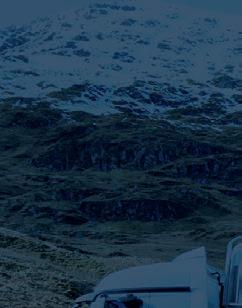
To be chosen as its main supplier of seawater coolers is a major declaration of trust and we consider it an important seal of approval.”






In May, we had two stories from



Opposite from top: Inverlussa hybrid workboat; VOLT Harvest III
Above: Hans Robert Almestad
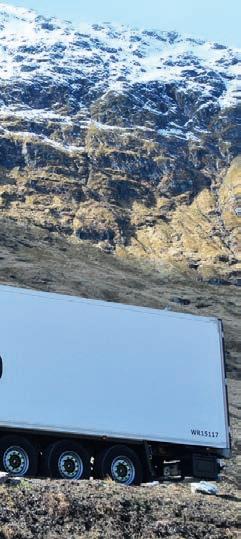
“We consider it an important seal of approval”
barge-builder Gael Force Group. Cooke Aquaculture Scotland took delivery of its first diesel-electric hybrid feed barge.

The barge, SM95, has been deployed at Cooke Aquaculture Scotland’s Mill Bay organic site in Stronsay, Orkney. It was supplied by Inverness-based Gael Force Group, working in partnership with Norwegian sustainability leaders Fjord Maritime, who developed the hybrid technology.
The SM95 barge is expected to achieve carbon savings of approximately 146 tonnes of CO2 every year, which is equivalent to removing 55 cars from the roads.
Gael Force also unveiled a series of 2022 Sea Safe features and enhancements on its extended SeaFeed barge range, encompassing modernised concrete and steel designs.
The company revealed the range ahead of exhibiting at Aquaculture UK in Aviemore in early May.

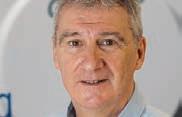

Adding to Gael Force’s existing range of 150T to 300T SeaFeed steel barges, and 600T SeaFarm steel barge, were the newly launched range of 400T and 500T SeaFeed steel barge designs, as well as the SeaFeed concrete barge range, now comprising standardised models with 150T, 200T and 350T feed load capacities.


This page from top: Gael Force SeaFeed 350T concrete barge; Gael Force Cooke barge; Stewart Graham; Beinn Mowi skipper Lewis Gibson; The Joenathe alongside Beinn Mowi
Meanwhile, Norway-based ship operator VOLT Service AS has ordered a new battery-powered harvest vessel capable of delivering up to 100 tonnes an hour.
The order has gone to Fitjar Mekaniske Verksted (FMV), based south of Bergen.
The company said the HFMV P42500 design has a strong focus on fish welfare, fish quality, operational efficiency and reduced climate emissions. The vessel will be called VOLT Harvest III.
VOLT Services said: “With battery operation and shore power connection together with a focus on solutions with low energy consumption, we believe that this is one of the vessels with the lowest emissions per unit transported in the industry.”
In June, one of Mowi Scotland’s workboats came to the rescue of a stranded sailing yacht in Loch Linnhe, on the west coast. Lewis Gibson,


“It was an unexpected drama in what was only his second shift as skipper”


The Damen Landing Utility Vessel 2208 is designed to perform diverse tasks in the aquaculture industry. Its scope includes the transportation of people, cargo and feed, with multiple loading and unloading options. Once on location, the vessel supports a wide range of activities, including pen maintenance and net cleaning.
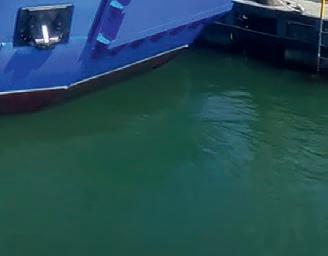
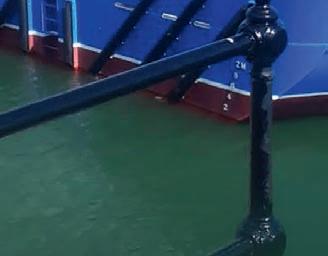

skipper of the workboat Beinn Mowi, saw the German-flagged Joenathe was drifting, dangerously close to Mowi’s salmon farm at Kingairloch.
Gibson was able to help the yacht moor safely alongside the farm until the weather had calmed enough for the Mowi boat to tow it to Dunstaffnage marina for repairs. It was an unexpected drama in what was only his second shift as skipper.
In August, we reported that shipping company AQS had selected Skagen Ship Consulting and Macduff Ship Design as main contractor and designer for a new 18.5-metre hybrid service vessel for aquaculture support services.

A key feature of the vessel will be the ability to operate on a zeroemissions basis for extensive periods, giving it a lower carbon footprint.
Skagen Ship Consulting will be responsible for the delivery of the design and equipment package, and the vessel will be built at TRX Marine in Yalova, Turkey.

The vessel will feature a hydraulic deck machinery package supplied by SHM solutions, including two Palfinger deck cranes and a full suite of aquaculture service equipment.

The project has seen significant initial development work by Macduff Ship Design in collaboration with Skagen Ship Consulting and AQS to
This page from top: The AQS support vessel; Bakkafrost electric workboat
ensure a bespoke vessel, with an arrangement to match the specific operating profile of AQS, alongside flexibility for future aquaculture roles.
In October, we reported that Faroese salmon farmer Bakkafrost had taken delivery of its first fully electric catamaran.
The company’s CEO, Regin Jacobsen, used the launch to call for greater investment in the Faroes’ power grid in order to help wean industry off its dependence on fossil fuels.
The all-electric catamaran, built by MEST shipyard, is the result of a sustainable energy project led by the Nordic Council of Ministers.
Jacobsen said: “Cooperation enables dreams and visions to be realised, but they can turn into nightmares if the cooperation does not work or is disorganised. Thus, it is of the utmost importance that we facilitate a land-based grid that can produce and supply enough green energy… there are still many changes that must be made if we are to reach our goals, but currently things are going too slowly, and if we do not start to make courageous decisions, we will be too late.”
“
If we do not start to make courageous decisions, we will be too late”





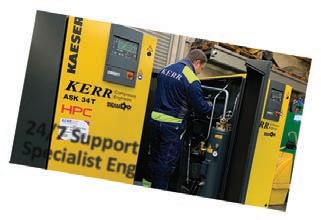
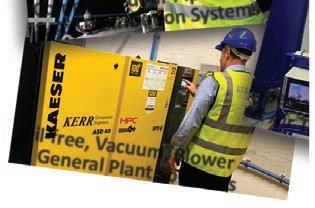



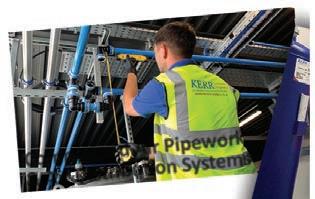








Aquaculture operators around the world encountered both support and opposition in government
robbery was carried out by two armed assailants who surprised the drivers at a highway rest stop.
In the US, the aquaculture sector welcomed a bipartisan bill in the House of Representatives that was intended to support another piece of legislation, the Advancing the Quality and Understanding of American Aquaculture Act (AQUAA), which was passed in 2021.
Fish farmers in Chile had an uneasy start to the year following the election of left-wing President Gabriel Boric in December 2021.
Boric had been openly hostile regarding the sector in his campaign and had warned companies that they would face new restrictions under his government.
Boric, who was born in a fish farming district, accused the big companies of polluting the environment and said that salmon businesses should be “properly regulated and decentralised”.
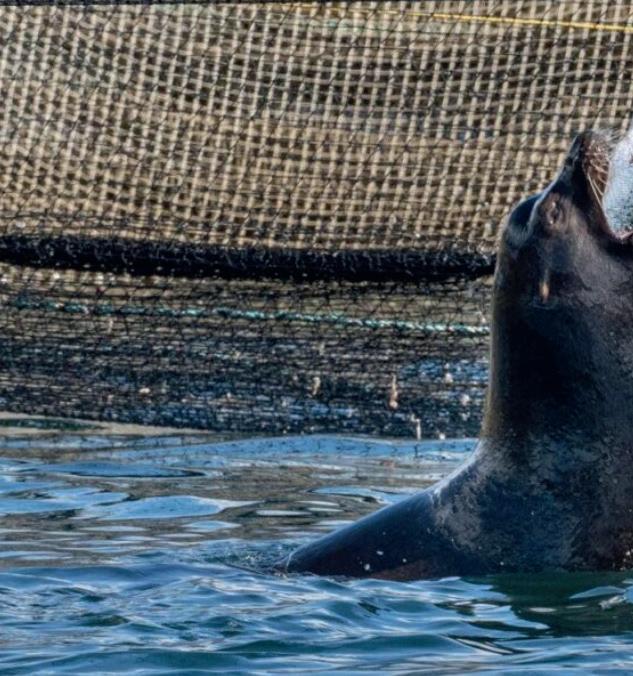

The latest bill was introduced by Republican representative Steven Palazzo and Democrat Ed Case. Together, the new legislation seeks to establish a regulatory framework for offshore aquaculture in the US, and also a research and technology grant programme for aquaculture. The move was strongly supported
Above: Chile flag














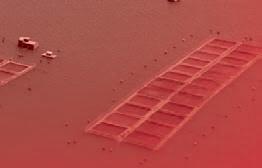
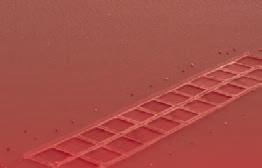
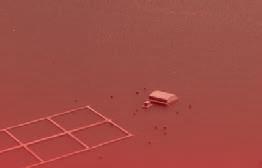






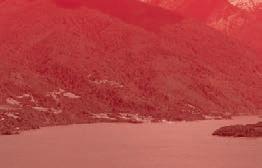

Right: Sea lion at Rant Point, British Columbia
Opposite: Grieg farm, Nootka Sound, British Columbia
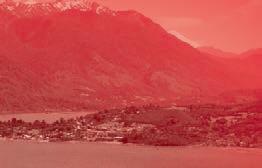
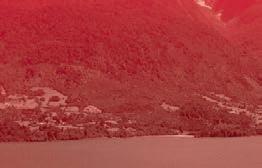
He also said: “It is not just about breeding and exports. Fish farming should be an affiliated industry and while jobs are important they should not be at the expense of the environment.”
Meanwhile, the industry in Chile was reeling following the loss of fresh salmon worth £100,000 in a truck hijacking. Regional newspaper Soy Puerto Montt reported that the
by the lobby group Stronger America Through Seafood (SATS).
Net-pen fish farming is not universally welcomed in the US, however, and early in the year Cooke Aquaculture’s US arm was awaiting the result of a case brought before the Supreme Court of Washington State.


Cooke had been granted a permit by the Washington Department of Fish and Wildlife (WDFW) to farm Pacific steelhead trout, following a decision that non-native species such as Atlantic salmon would not be permitted.
Examining a damages claim brought by environmental campaigners against the decision, the Supreme Court rejected the claim and upheld Cooke’s permit.
The company’s hopes to resume fish farming appeared to have been dashed, however, when in November Hilary Franz, Washington’s Commissioner of Public Lands, announced that the permits for Cooke’s remaining steelhead trout farms would not be renewed.
In a statement announcing the



decision, Franz said: “Today, we are returning our waters to wild fish and natural habitat. Today, we are freeing Puget Sound of enclosed cages.”

A letter to Cooke from the state’s Department of Natural Resources (DNR) said: “The inherent risks of finfish aquaculture are compounded by additional risks where, such as here, DNR lacks confidence that Cooke will consistently comply with lease mitigation requirements... Cooke’s proposed renewal is not in the best interests of the State.”
Franz followed this up almost immediately, by announcing that no net-pen fish farming will be permitted by Washington’s DNR on state-owned aquatic lands, effectively closing down the industry permanently. The order aligns Washington’s net-pen salmon aquaculture policy with those already in place in Alaska, California and Oregon.
Cooke described Franz’s decision as “disappointing” and “disheartening”. The company also said: “The order is short-sighted, and the Commissioner’s position neglects extensive scientific analysis and judicial rulings, which found that there are no significant adverse environmental impacts arising from marine fish farming.”
The federal government wasn’t the only thing fish farmers in Canada had to worry about. In April, dozens of sea lions broke into a salmon farm run by Cermaq at Rant Point on the west coast of Vancouver. Between six and 20 animals were in each pen every day during the incident, which the Canadian media described as an

“
Jobs… should not be at the expense of the environment”
“all-you-can-eat buffet”. Cermaq said the net did not appear to have been damaged and suggested that the sea lions appeared to have gained entry simply by jumping over the stanchions.

In June, Chinese company Qingdao Guoxin Development Group took delivery of a giant 100,000-tonne vessel which had been designed as a mobile fish farm.
Guoxin 1 was launched in January and underwent sea trials for around five months.
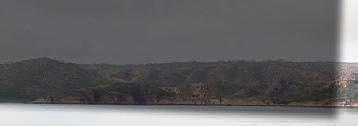
It has been described as a technological breakthrough in opensea aquaculture. The 249.9-metre-long vessel, which looks more like an ocean-going oil tanker, will be able to
harvest around 3,700 tonnes of fish a year and is said to be strong enough to withstand the worst storms. There are two swimming pools on board. The vessel will be operated by Qingdao Guoxin Development Group, which plans to build four similar mobile fish farms.
Also in June, Barramundi Group –which farms the fish of that name in Australia and the Far East – announced ambitions plans for expansion in Western Australia. The Singapore-based company said it expected capital spending on the project to amount to around AU $350m (around £200m).





Things were not to go so smoothly, however. After seeking a “strategic partner” for its loss-making Australian business, in September the group’s board said it was now considering “a complete divestment of the business” because it required more investment than Barramundi could raise.
In November, Barramundi’s CEO Andreas von Scholten stepped down, to be replaced by James Kwan, who










had been Chief Marketing Officer as well as managing the company’s Singapore operations.





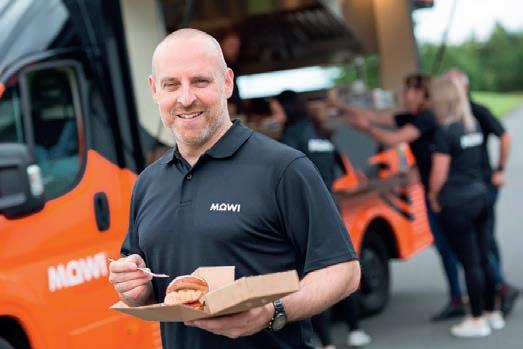
At the end of June, fish farmers in British Columbia (BC) were granted a stay of execution by Canada’s federal government just days before the remaining licences in BC were due to expire.
The decision means that the 79 farms currently in operation in the province can continue working, but the Ottawa government remains committed to “transition from open-net pen salmon aquaculture in British Columbia’s coastal waters in a manner that protects wild salmon, the environment and the economy”.
Meanwhile, the federal government stood by its decision to close all 19 farms on the Discovery Islands, a region within BC, despite a Canadian Federal Court ruling that the decision to prevent the salmon farmers from restocking the farms this year – which would have forced farmers to cull the smolts they had ready for stocking –must be reversed.
In August, Canada’s Fisheries Minister, Joyce Murray, launched a consultation paper for the “transition plan”, pledging among other things that it would: create a pathway for aquaculture producers to adopt alternative production methods to


minimise threats to wild salmon; improve transparency on how the government bases its policies on scientific information; support innovation; and involve the First Nations communities, which are themselves deeply divided between pro- and anti-fish farming lobbies.
The final version of the transition plan is expected to be published in spring 2023. Meanwhile, Canada’s aquaculture industry appears to be warming to Murray, who succeeded Bernadette Jordan as Fisheries Minister last year. And the Canadian Aquaculture Industry Alliance named a new Chair in October: Ian Roberts, Director of Communications for Mowi in Scotland, Ireland and Canada.
Opposite from top: Andreas von Scholten, Barramundi; James Kwan, Barramundi; Kühlbarra Barramundi; Cone Bay Ocean Barramundi; Barramundi Group’s farm
This page from top: China’s Guoxin 1 floating fish farm; Joyce Murray; Ian Roberts
Scotland’s seaweed industry has the potential to grow significantly, with output potentially up to 54,000 tonnes and a combined turnover of more than £70m.

So says a report from a steering group commissioned by the Scottish government.
The review, Understandingthe potentialscaleforseaweed-based industries in Scotland (February 2022), sets out two scenarios for the industry, which currently has a tiny share of a worldwide industry, worth an estimated €8.1bn (£7bn) annually.

The “business as usual” scenario envisages no cultivated seaweed industry in Scotland and modest growth for the industry as a whole.
Supply could increase to 25,000 tonnes, with a turnover of £22.1m per year by 2040, contributing £11.5m GVA (gross value added) and a further £1.9m in “induced impacts”.

In the “higher growth” scenario, the world market for seaweed products grows by 10% and Scotland produces, by 2040, 30,000 tonnes of wild harvested seaweed and 24,000 tonnes of cultivated crop, with a £71.2m turnover for the industry.
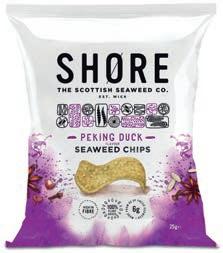
The industry under this scenario would contribute £38.5m GVA to the Scottish economy, plus a further GVA of £66m from induced impacts.
The review concludes: “There is growth potential in the seaweed industry”.



In March, we reported that The Seaweed Company, a Dutch seaweed
This page from top: Shore seaweed chips; Rosie Rees with Sugar Kelp
Opposite from top: Cultivated brown seaweed (Alaria); The Seaweed Company’s harvest vessel
Seaweed is increasingly being recognised as a crop
“We are off to a good start ”
startup, was planning “significant investment” following an injection of capital by Belgian retail group Colruyt.


The Seaweed Company produces seaweed in its own farms in Ireland, Morocco, India and the Netherlands, and markets high-quality applications such as animal feed supplements, food products and biostimulants.
The investment brings Colruyt’s minority stake in The Seaweed Company up to 21%. The amount has not been disclosed.
The Seaweed Company’s “SeaEO”, Joost Wouters, said: “Connecting our seaweed knowledge and expertise with the strengths of others, such as those of Colruyt Group, enables us to take major steps in the field of sustainable agriculture and food applications.”
Meanwhile, in Norway, the government announced it would classify seaweed and kelp as “seafood” as part of a strategy to encourage further development of the sector.
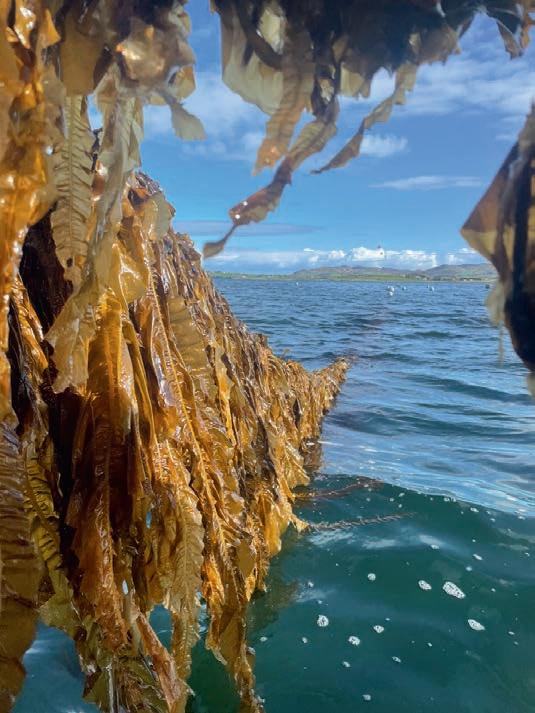
The move means seaweed will be included in the remit of the Norwegian Seafood Council and the seafood research fund known as FHF.
Fisheries and Oceans Minister Bjørnar Skjæran said: “Norway must lead the way in the development of

the world’s most sustainable and productive seafood industry, and here seaweed and kelp have a natural place.”
In October, we profiled Welsh social enterprise Câr-y-Môr (the name means “for the love of the sea”), based in St David’s, Pembrokeshire. As well as shellfish, Câr-y-Môr farms seaweed as part of an integrated multi-trophic aquaculture (IMTA) approach.
As a regenerative ocean farm, the enterprise aims to have a positive impact on the environment. Câr-yMôr plans to harvest 60 tonnes (wet weight) of seaweed next year and around 1.5 tonnes of mussels.
Co-founder Owen Haines told Fish Farmer: “Câr-y-Môr wishes to bring as many benefits as possible to coastal communities and we are off to a good start, but marine licensing remains our biggest challenge.”
Meanwhile, Scottish-based seaweed company Shore picked up an award at the Highlands and Islands Food and Drink Awards 2022, held on Friday 28 October at the Kingsmills Hotel, Inverness.
Shore was the winner in the Retail category for its Shore Seaweed Chips. The judges said: “The winner of this category demonstrated a clever marketing strategy and even started their own beach-cleaning programme across Scotland to heighten awareness. This product has also helped to bring a unique and distinctive flavour into the mainstream market for the first time.”
CEO Regin Jacobsen said the company had acquired the land during the first quarter of this year.


In February, Norwegian landbased fish farmer Andfjord Salmon raised NOK 38m (£3.1m) in a private placement that brought in feed giant Nutreco and seafood group Holmøy as investors. As part of the deal, Andfjord has entered into a supply contract with Nutreco’s aquafeed subsidiary, Skretting.
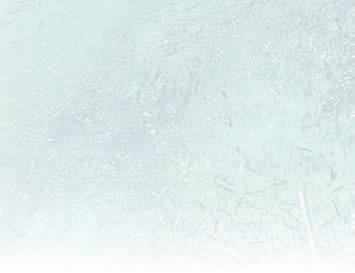

Growing smolts to a larger size before they are transferred to the sea is a key part of the fish health strategy for Bakkafrost Scotland, formerly The Scottish Salmon Company.


With this in mind, the company has been expanding its post-smolt facility at Applecross in the north-west highlands of Scotland.



In January, we reported that a four-year post-smolt research and development project based at Applecross had been awarded £5m in public funding. A central aim of the study will be to see how smolt sizes can be increased from 100g to 500g, rearing them using recirculating aquaculture system (RAS) technology.

In August, Bakkafrost also revealed that it had secured land to build a large new hatchery in Scotland in addition to the site at Applecross.
Andfjord’s fish farm is based at Kvalnes on the island of Andøya in northern Norway and it uses an innovative flow-through system rather than RAS technology.

Also in Norway, Salten Smolt was delighted to report that its RAS smolt plant was completed and fully operational ahead of schedule.
The facility was built by specialist supplier Pure Salmon Kaldnes at a site at Breivik near Bødø, Norway. It houses 5.5 million fry in a 9,000sqm fish farm. Salten Smolt, which is owned by Salten Aqua

“
I am more confident than ever in our mission”
AS,
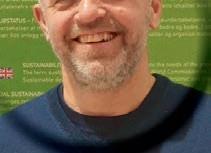




AS, already operates a smolt plant next door and a feeding plant in the neighbouring municipality of Saltdal.
The Salten Aqua group’s annual smolt production has now tripled from 400 tonnes to 1,200 tonnes.
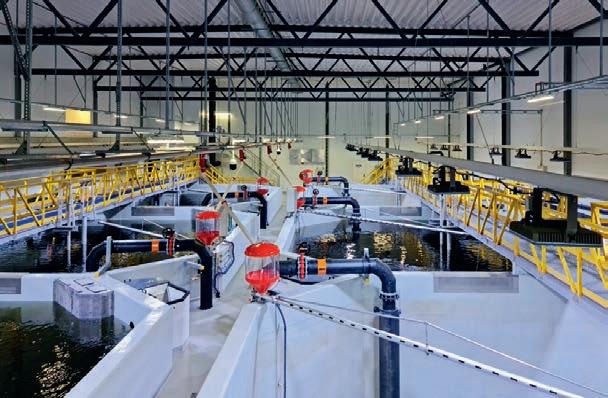
Salten Aqua’s CEO, Jarle Solemdal commented: “Pure Salmon Kaldnes not only delivered on time, but they actually delivered prior to deadline. That is not necessarily normal practice for our industry.”
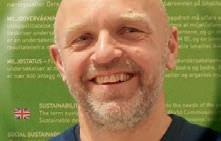

In March, Israeli firm AquaMaof agreed a deal with a yellowtail (Seriola lalandi) producer in Chile on the construction of a RAS farm.
The facility, at Tongoy Bay in the Coquimbo region of the country, will be run by Chilean company Atacama Yellowtail SpA (AYT). It is AquaMaof’s first recirculating aquaculture system project in Chile.
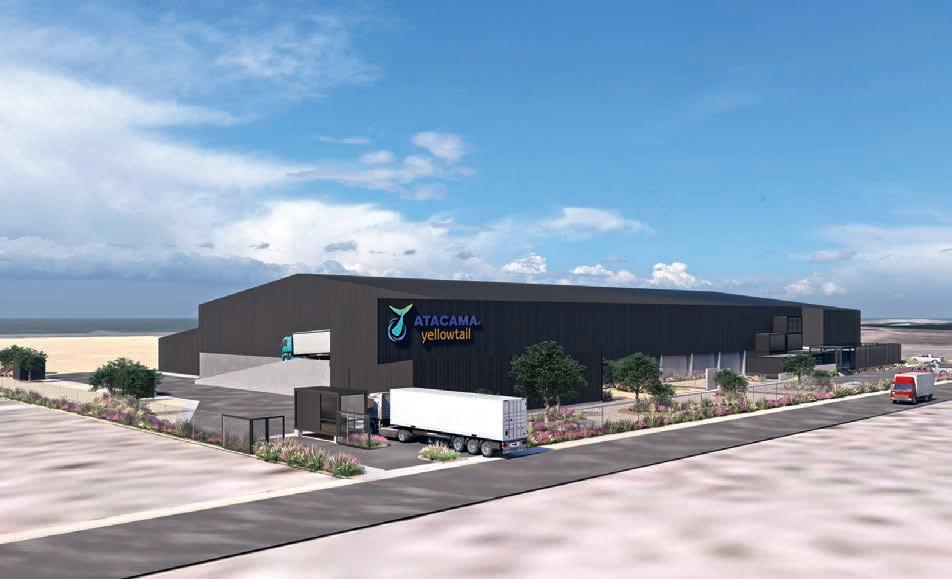
With an initial investment of US $25m (£18.6m), the project will produce 900 tonnes per year of premium yellowtail in the first stage. It is planned to double production in the second stage to reach 1,800 tonnes per year. AYT said the project would create approximately 50 new jobs.
Opposite from top: The Applecross facility; Andfjord laminar flow test
This page from top: Atacama Yellowtail KingFish facility; Smolthall, Salten Smolt; Jarle Solemdal
In March, land-based salmon farmer Salmon Evolution successfully completed its first smolt release at the company’s new facility at Indre Harøy, Norway. About 100,000 smolts were released with an average weight of around 300g.
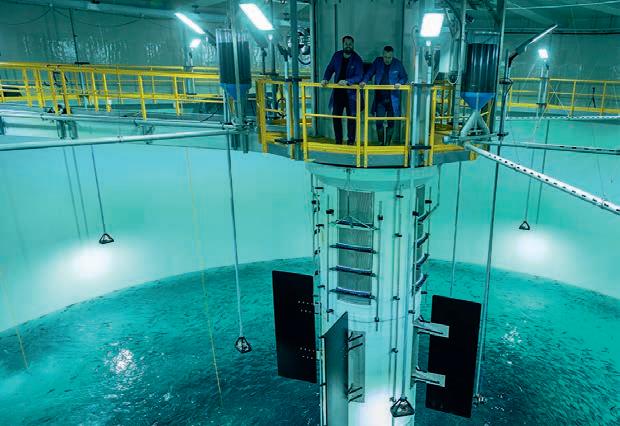
Indre Harøy, located on the Norwegian west coast, is a “hybrid flow-through” farm designed for an annual capacity of approximately 31,500 tonnes. Salmon Evolution is also developing a RAS farm in South Korea in a joint venture with Korean group Dongwon Industries.
Håkon André Berg, CEO of Salmon Evolution, commented: “I am extremely proud of our organisation and the fact that we have been able to adhere to our ambitious timeline, even with the challenges [that] faced us during the pandemic.


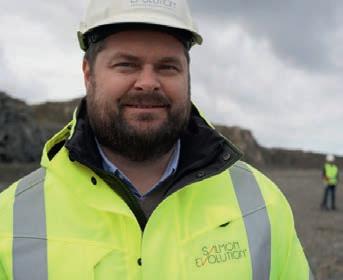
“At the same time, this is just the beginning. As we now move forward, our number-one priority is the biology in our farm… I am more confident than ever in our mission – extending the ocean potential.”
Following good results for fish survival and growth, Salmon Evolution released its second smolt batch at Indre Harøy in July, consisting of around 230,000 smolt with an average weight of 125 grams.
It carried out a test slaughter in August and, in November, celebrated the successful completion of its first harvest.
Berg was no longer Salmon Evolution Chief Executive by that

time, however, as he had resigned in October due to “personal family matters”.
Interim CEO Trond Håkon SchaugPettersen said the first harvest was a “historic milestone” for the business.
In April, Swiss Blue Salmon announced that it had entered a strategic partnership with Danish RAS business Billund Aquaculture.




Both companies said this would be an innovative project using state-ofthe-art RAS and other cutting-edge technologies, including artificial intelligence, machine learning, cloud solutions, digitalisation and full automation.
The planned location is the Alpine canton of Glarus in the east of Switzerland. When in operation the farm should be able to provide 8% of the salmon that is imported into the country.
Swiss Blue Salmon CEO Rudolf Ryf said: ”We have good-quality water sources in the country and I see an opportunity to build up a Swiss aquaculture industry and reduce the current high import levels.”
Meanwhile, Atlantic Sapphire was experiencing a challenging year. A seven-month police report had offered no explanation as to the cause of the devastating fire that destroyed the company’s first
RAS salmon farm in Hvide, Sande, Denmark, back in September 2021. Atlantic Sapphire’s annual report for 2021 showed it had achieved a significantly improved biological performance for its Florida site. Revenues were up by 170% to almost US $17m (£13.2m), but the company reported a net loss of US $13.2m.
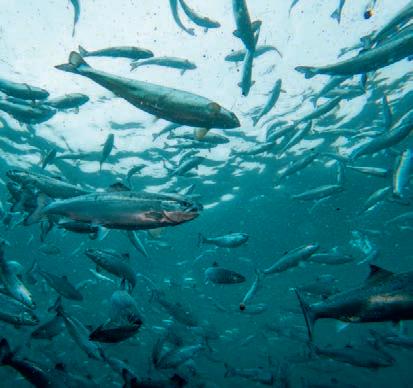


April also saw the publication of a new Hatchery Standard from the Global Seafood Alliance, as part of its Best Aquaculture Practices (BAP) standards. Version 2.0 of the Hatchery standard includes a requirement to carry out an assessment of potential human food safety risks, new health and safety requirements for workers, and revised requirements for monitoring water quality for net-pens in salt or brackish water and effluent in land-based systems.
The new standard will take effect from 23 April 2023. Norwegian-owned American Aquafarms, which is looking to

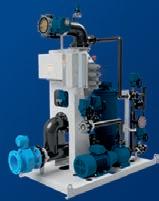








Opposite from top: Håkon André Berg, Salmon Evolution; Trond Håkon SchaugPettersen; First smolt release from Salmon Evolution
Left: Andfjord salmon
www.desmi.com
build a large RAS salmon farm in Maine, on the northeast coast of the US, suffered a setback when the state’s Department of Marine Resources knocked back its permit application. The reason given was that the company had failed to select an approved source for its eggs. American Aquafarms had planned to buy ova from the Newfoundland hatchery run by AquaBounty, which produces genetically modified (GM) salmon. Both companies stressed that the eggs for the Maine farm would not be GM.
In Japan, Proximar Seafood signed a deal with the Marubeni Corporation for the future distribution of its salmon. Proximar is building a RAS farm close to the slopes of Mount Fuji and hopes to carry out its first harvest in 2024.

News emerged in July of another large RAS project in Japan. Industrial giant Mitsubishi is to go into the land-based salmon farming business in its home country, in partnership with Maruha Nichiro, Japan’s largest seafood company.
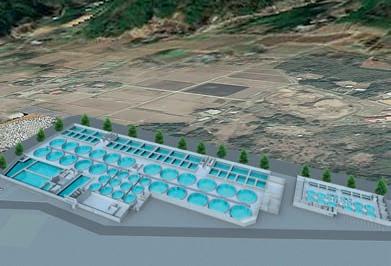
The joint venture will be known as the ATLAND Corporation. The facility is expected to be operational by 2025, with an initially modest production capacity of 2,500 tonnes. It will be built on Japan’s west coast near the city of Nagano.
Mitsubishi will own 51% of ATLAND, while Maruha will own 49%. Mitsubishi, which employs 80,000 people worldwide, is already the owner of Cermaq, which operates in
Norway, Chile and Canada.
In June, The Kingfish Company finally received federal approval for its proposed new Dutch Yellowtail facility in Jonesport, Maine.



The permit was granted by the US Army Corps of Engineers and follows the approval of key permits from the State of Maine Department of Environmental Protection (MDEP) and critical water-side permits last year.
Kingfish Maine is a wholly owned subsidiary of The Kingfish Company, which is the largest Yellowtail Kingfish producer in the European Union.
This page from top: Smolt hatchery; Proximar signing; Proximar Mount Fuji RAS facility illustration
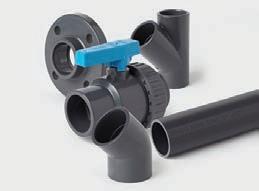



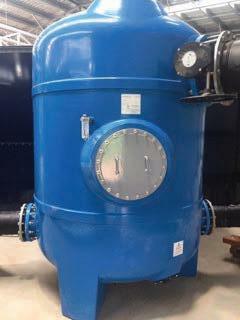




It plans to deploy the technology and operational expertise developed in the Netherlands to become the largest producer of Yellowtail Kingfish in the US, once the Jonesport facility is operational.
The company cleared the final local hurdle in October when the community of Jonesport, close to where the RAS facility will be built, approved Kingfish Maine’s construction application.
Kingfish said: “With the Kingfish Maine project fully permitted by state and federal regulatory agencies, this local building permit is the final step required for Kingfish to begin preconstruction design and engineering on its new facility in the US.”

This page from top: MainStream farm, Australia; MainStream barramundi, Australia Opposite: Mount Cook salmon land farm concept
In August came news that Londonbased investment company JLEN Environmental Assets was moving into Norwegian aquaculture.


JLEN, which describes itself as an environmental infrastructure fund, is setting aside up to £40m over the next three to four years for Hima Seafood, a Norwegian company building the world’s largest trout farm.
The farm, which is to be built in Rjukan in Norway’s Telemark region, will be a RAS facility. Hima Seafood has identified and secured a licence to obtain water from a huge groundwater reservoir in Vestfjorddalen, just below where the facility will be.
JLEN said: “It is expected that partial operations will commence in 2024, with full operations expected in 2025, following which the facility is forecasted to produce approximately 8,000 tonnes of trout annually.”
annually.” had
Also in August, it was announced that aquaculture technology group AKVA had been awarded the contract to design and build Cooke Aquaculture’s post-smolt salmon hatchery in Nova Scotia, Canada.
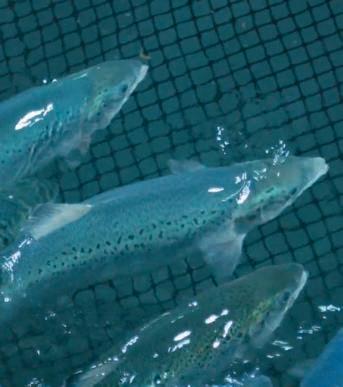

The facility, in Centreville on Digby Neck, is projected to produce three million salmon annually, up to the post-smolt stage.
Meanwhile, Australian barramundi producer MainStream Aquaculture announced plans to build a RAS arm in the US state of Arizona. The company already has a pilot plant in place and the facility, when building is completed, will occupy 1,100 acres.
Arizona is one of the most arid states in the US, but the company said the site was a desert oasis with pristine natural water sources.
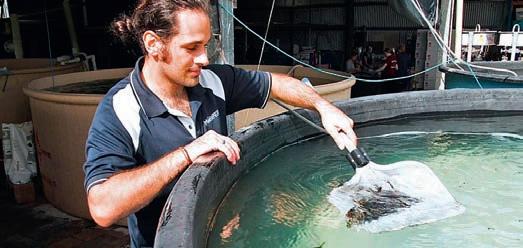
“
”
In October, news came that New Zealand was about to get its first land-based salmon farm.
With government support, Mount Cook Alpine Salmon Farm unveiled plans to construct a prototype facility in Twizel, Canterbury, which will double the company’s capacity to between 6,000 and 8,000 tonnes.
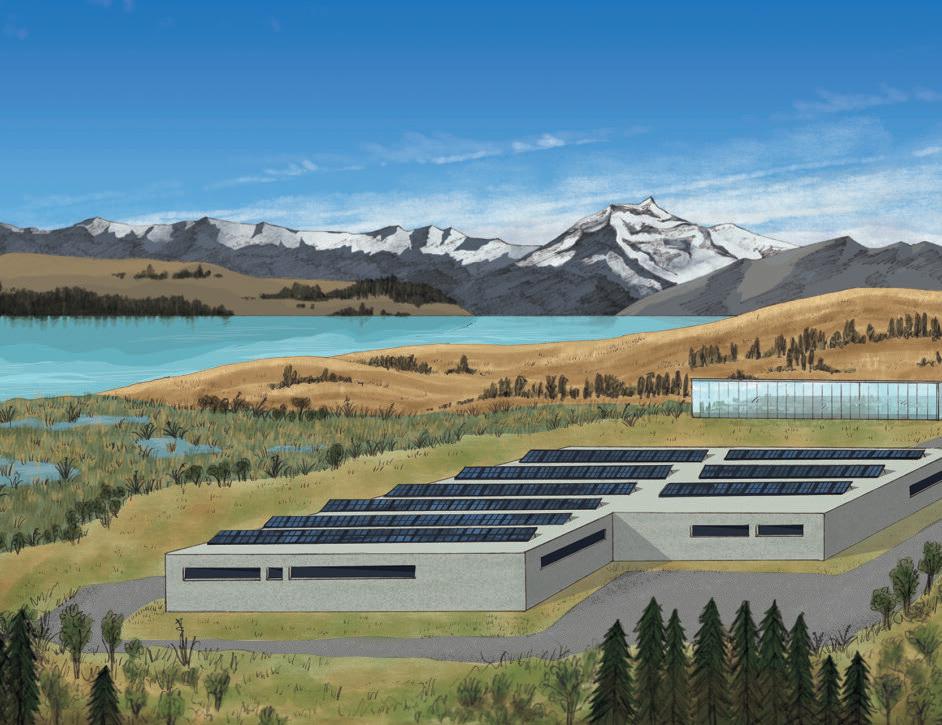
The new farm will be a hybrid facility that will use a part flowthrough system designed to optimise energy use through gravity-fed water and renewably sourced energy. Nutrients from the salmon operation will be collected to support an aquaponics crop.
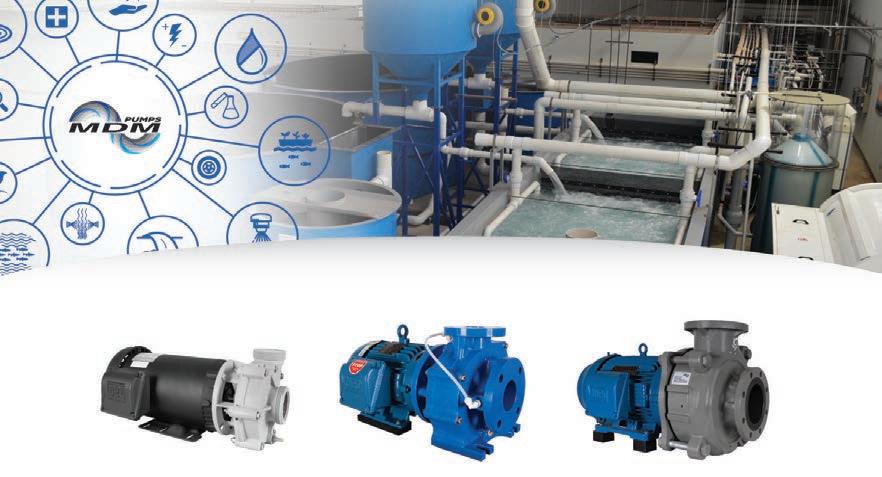
The New Zealand Ministry for Primary Industries Sustainable Food and Fibres Futures (SFF Futures) Fund has pledged NZ $6.7m (£3.38m) towards the NZ $16.7m (£8.42m) project.


Steve Penno, Director of Investment at the Ministry of Primary Industries,
said: “Demand for healthy, sustainably produced aquaculture products continues to grow, and landbased salmon farming will enable New Zealand to boost the supply of this high-quality, high-value product.”
This page from top: AquaBounty tanks: Benchmark Genetics lab employee
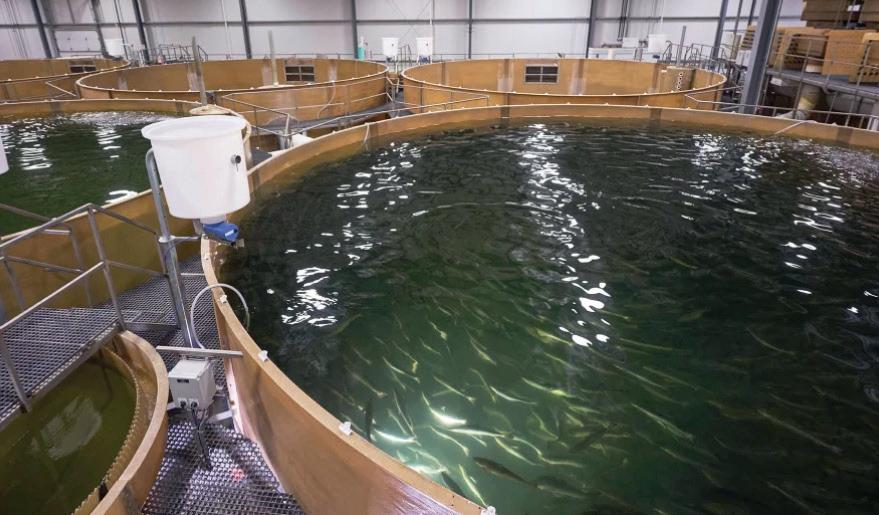
Opposite from top: Carolina Peñaloza; Grazyella Yoshida and Hans Ekvall; Earth Ocean Farms red snapper
Benchmark began 2022 with some key hires.
In January, we reported that Benchmark Genetics (BG) had recruited the Roslin Institute’s Professor Ross Houston as Director of Innovation, Genetics.



Professor Houston was
previously Personal Chair of Aquaculture Genetics at the Roslin Institute, University of Edinburgh, where he led the aquaculture genetics team. He was also the Roslin Institute’s Deputy Director for Translation and Commercialisation. In the role of Director of Innovation, he is now leading BG’s strategic
The supply of genetic services and ova is increasingly tied to long-term contracts
development of innovation and R&D to support business growth and secure the company’s competitive advantages.
He is also a member of Benchmark’s crossdivisional Innovation Board.
Later that month, Benchmark Genetics announced two more hires for its core genetics team. Dr Grazyella Yoshida joined as Senior Geneticist and Hans Ekvall as Junior Geneticist.




In November, they were joined by Dr Carolina Peñaloza, formerly of the Roslin Institute, as Senior Scientist in the company’s new Molecular


Genetics program in Edinburgh. She was brought in to lead the development of a new molecular genetics programme.
In March, we reported on a project, carried out by the Center for Aquaculture Technologies (CAT) for Mexico-based Earth Ocean Farms (EOF), to accelerate genetic improvements in farmed red snapper.
CAT is an R&D and contract service organisation, based in the US and Canada, focused on aquaculture and related industries. Its in-house genotyping team developed a custom panel of genetic markers to accelerate genetic improvement in red snapper, analyse performance and ensure the overall health of the stock.
This customised breeding programme was the first of its kind for Pacific red snapper. It will assist EOF to select for specific traits in the snapper stock that show higher production yields through improved growth performance and phenotypic (observable) traits, and provide insights into feed conversion and product yield.

“
This customised breeding programme was the first of its kind”
EOF is an open-ocean aquaculture producer rearing two native species, Pacific red snapper (Lutjanusperu) and totoaba (Totoaba macdonaldi), in the Pacific off Mexico’s Baja region.
Pablo Konietzko, Director General of Earth Ocean Farms, said: “The future of sustainably raised red snapper is vitally important to take the pressure off the overfishing of the wild Pacific and Atlantic red snappers while meeting the market demand for this delicious fish.”
In April, we reported on a milestone moment – the first commercial harvest of a genetically modified (GM) generation of salmon. US-based producer AquaBounty Technologies said the harvest had been a success.

AquaBounty’s “AquAdvantage” fish are Atlantic salmon that have had elements of Chinook salmon and another fish, ocean pout, added to their genetic makeup for better growth rates and more efficient feed conversion.
AquaBounty, which rears GM salmon in land-based recirculating aquaculture
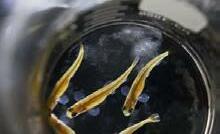

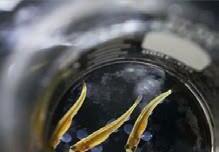
systems (RAS) facilities, reported harvest revenue for the full year 2021 of US $783,000.
During Q4 of 2021, the company harvested 91 tonnes of GM Atlantic salmon and generated US $340,900 in revenue from the sale of 101,700 pounds of salmon to customers. It reported a net loss for the year ended 31 December 2021 of US $22.3m (2020: US $16.4m).
The company operates two farm sites on Prince Edward Island, Canada, and in Albany, Indiana, US. It is developing a larger farm site in Ohio, in the appropriately named town of Pioneer, which at 10,000 tonnes will have around eight times the capacity of the Indiana farm.

Sylvia Wulf, Chief Executive Officer of AquaBounty, said: “Commercial interest in our nutritious salmon, which is free of antibiotics and other contaminants, has been impressive and we continue to receive orders for the entire output from our farms.”
She added that: “…we are extremely confident in the market acceptance





This page from top: AquaBounty Pioneer farm; AquaBounty small fish; Sylvia Wulf Opposite from top: Kames juvenile trout; Arctic char
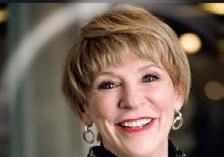
of our salmon and will strive to create long-term value for our shareholders.”
The company officially broke ground at the Pioneer Ohio site in April, although later on, Wulf warned that inflation in the US meant that the latest estimate for construction costs was greater than the previous range of US $290m–$320m.

She said: “We will review all options for reducing cost, including potentially phasing the construction of the 10,000 metric tonne farm with an initial production output level that would demonstrate our competitive advantage and ability to operate at commercial scale.”
In June, we reported that Swiss Alpine Fish, Switzerland’s first commercial salmon farmer, had signed a contract with Benchmark Genetics for the supply of ova for the next five years.
The company had already sourced its ova from Benchmark. The new deal offered the company security of supply and the eggs will be provided from Benchmark’s new incubation centre in Vogar, Iceland.
In September, independent producer Kames Fish Farming announced a strategic partnership with breeding and genetics specialist Xelect. Kames will be working with Xelect to develop an improved strain of steelhead trout.


Kames, a long-established name in Scottish aquaculture, farms trout in marine pens on the west coast. The
new programme will focus on faster growth, improved survival rates and fish that are even better placed to survive in the sea.
In the wild, rainbow trout often migrate to the sea –which is when they are known as “steelhead” – but some individuals fare better in seawater than others. Genetic selection should help to ensure that Kames has a strain well suited to growing and thriving in sea lochs.
The project started with an initial genetic evaluation of Kames’ broodstock to ensure that the selective breeding programme would be based on a highly diverse population, with strong potential for future gains.
Xelect Programme Manager Lidia de los Rios Perez said: “In the next stage, Xelect will combine genetic analysis of the fish (‘genotypes’) with real-world performance data (‘phenotypes’). By using the latest breeding programme management techniques and our highly sophisticated software, OptiMate, Xelect can then identify the optimal crosses to provide Kames with major trait improvements every generation”.
In October, we reported that the Center for Aquaculture Technologies (CAT) was working with Canadian fish farmer Icy Waters on a breeding programme for Arctic char.
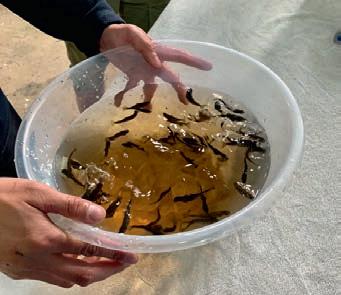
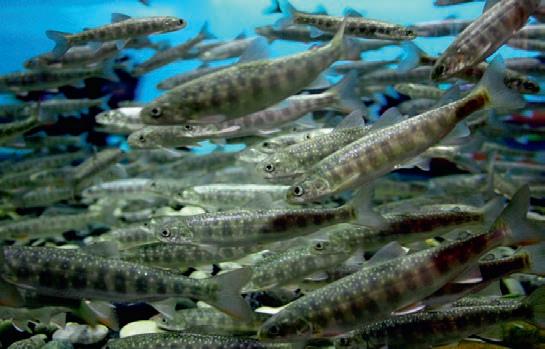
Icy Waters, based in Whitehorse, in Canada’s Yukon Territory, is a fully integrated aquaculture business producing Arctic char (also known as charr) and char ova for other farmers.
CAT will apply genomic analysis to Icy Waters’ two founder populations of char, selecting the best traits from both in order to create an improved broodstock.
Doug Hotson, General Manager of Icy Waters Ltd, said: “Developing sustainable food and protein sources continues to be a key economic factor for many countries around the world. Aquaculture is poised to be an increasingly important contributor to this landscape. With the rise of recirculating aquaculture systems (RAS), the benefits in growing char relative to other salmonids continues to gain interest, given their natural preference for higher densities.”


Columbia, blaming the Canadian government’s decision to shut down salmon farming in the Discovery Islands region.
Mowi is British Columbia’s largest salmon producer and its 23,000 sq ft processing plant, in the town of Surrey, employed around 80 people.

Although Surrey is outside the Discovery Islands region, Mowi said the loss of 30% of its production in BC meant the production plant was no longer viable.
In a year of consolidation and pressure for seafood processors, we started 2022 with the news that Faroese salmon producer Bakkafrost had taken a 90% stake in Danish canner Munkebo Seafood AS.
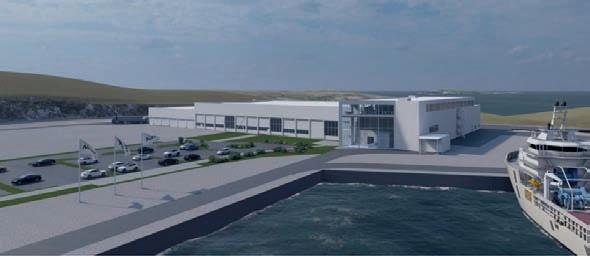
Bakkafrost has not disclosed how much it is paying for the business. Munkebo, which employs around 40 people, had an operational EBIT of DKK 4.8m (£550,000) in 2020. Its products are mainly sold in grocery stores in the European Union.


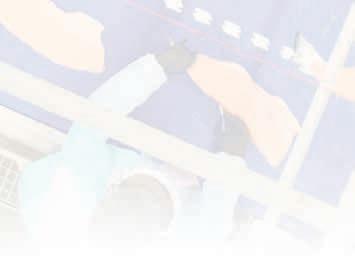

Munkebo Seafood A/S was founded in 1974 and has, since its formation, been engaged in production of canned fish, including salmon, at the factory in the Danish city of Munkebo.
Later in January, Mowi Canada West announced that it was permanently closing its fish processing plant in Surrey, British
An economic report commissioned by the BC Salmon Farmers Association found that the companies operating within Surrey that are part of BC’s farm-raised salmon supply chain generated more than CAN $363m (£224m) in revenues, and created jobs for 1,189 workers earning almost CAN $65m (£40m) in salaries.


There was better news from the UK’s Young’s Seafood, which reported a return to solid profitability for the year ending
This page from top: Mowi processing plant, Surrey BC; Mowi processing plant, Hitra Opposite from top: Raleigh Salvesen, former MD, Dawnfresh; Callum Carmichael; Scott Nolan, Mowi
“Wenger is a true leader in its field”
It was a mixed year for the downstream sector in seafood
3 April 2021. The company notched up pre-tax profits of £29.5m for the 53-week period, compared with a loss of £13.7m for the 78 weeks to 28 March 2020.
In March there was a shock for Scotland, however, when Dawnfresh, Scotland’s largest trout producer, went into insolvency.
Tom MacLennan, Callum Carmichael and Michelle Elliot, partners with FRP Advisory, were appointed joint administrators of the Dawnfresh group, which includes trout farms and processing.

The administrators immediately announced 200 redundancies – with more to come – on the seafood processing side of Dawnfresh’s business. Its plant at Uddingston, near Glasgow, was closed with immediate effect.
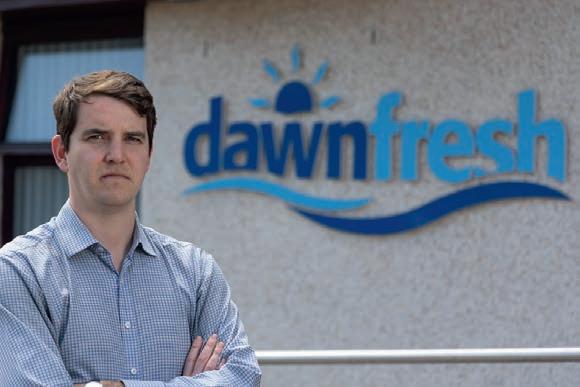
The imminent closure of the Uddingston plant had been announced in September last year by Dawnfresh’s then Managing Director Raleigh Salvesen. At the time, staff were given the option to transfer to the Arbroath site, which the company planned to expand.

When the company went into administration, Dawnfresh’s Arbroath processing business, trading as RR Spink & Sons, was acquired by Lossie Seafoods, a subsidiary of Associated Seafoods Limited (ASL). All 249 staff at that plant saw their employment transferred to the new owner.
In June, Thistle Seafoods agreed a deal to acquire the fish processing facility at Uddingston as a going concern. The sale, by administrators FRP Advisory, is expected to save 40 jobs in Lanarkshire.
Meanwhile, as the year drew to a close, the administrators were still looking for a buyer for
Dawnfresh’s fish farming business, which operates seven fish farms in Northern Ireland and Scotland, and continues to trade solvently.

The administrators said they expected a number of serious offers, and with licensed fish farming sites at a premium the sale could attract some big players.
At the end of March, Mowi announced plans to build a “stateof-the-art” processing centre in Hitra, Norway.

The new factory is scheduled for completion in the first half of 2024. It will have a production capacity of 100,000 tonnes and will replace Mowi’s current factory at Ulvan. The new plant will take fish from sea harvest vessels only, rather than wellboats.
Meanwhile, Mowi’s Scottish arm appointed Scott Nolan to the newly created position of Operations Director, Processing and Sales (UK and Ireland).


Nolan was formerly Processing Director for Mowi Scotland Ltd. In his new position, he reports jointly to Ben Hadfield (COO Farming, Scotland, Ireland & the Faroes) and Andreas Soraa (MD, RMT).
Mowi said the new role was intended to ensure the company achieves the highest level of operational efficiency through coordination across the business
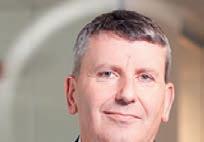
unit, leveraging potential synergies from Mowi’s integrated value chain.
In late April, the news broke that international fish and meat processing equipment manufacturer Marel had struck a deal to acquire US-based Wenger, a leader in extrusion systems for producing pet food, aquafeed and food for consumers.



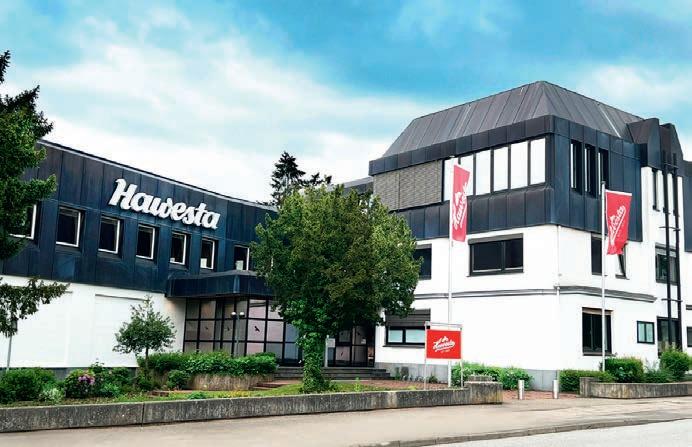
The move extends Iceland-based Marel’s reach into the pet feed, plant-based food and aquafeed sectors. It will form the basis for a new business segment, based on the Wenger platform, making a fourth pillar alongside poultry, meat and fish.
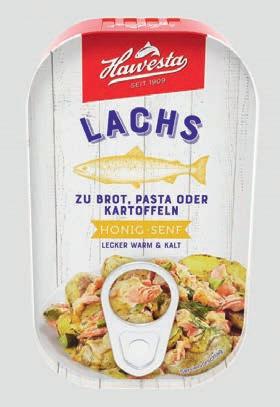
Arni Oddur Thordarson, CEO of Marel, said: “Wenger’s passion for innovation and commitment to high-quality solutions, in addition to its excellent customer focus and talent management, are the key attributes Marel
the pet food industry and aquafeed

is proud to partner with. Wenger is a true leader in its field of providing solutions and services to the pet food industry and aquafeed industries, and has in recent years made its mark on the fast-growing plant-based protein consumer market with best-in-class solutions positioned right in the centre point of the value chain.”


In June, we reported plans for a new processing plant and the
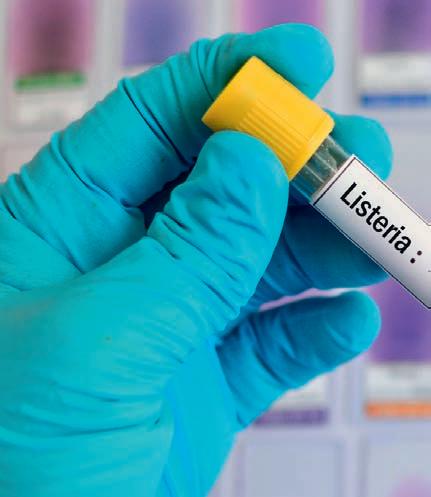
closure of an established one. The new plant is being built by Iceland’s Arnarlax in the country’s Westfjords region. Its capacity will be 80,000 tonnes per year and the plant, subject to planning consent, is expected to create many new jobs once it is up and running.

Meanwhile, Thai Union’s German subsidiary Rügen Fisch AG announced it was to close its processing plant in Lübeck, transferring operations to Sassnitz, where the rest of the Rügen Fisch processing is based.
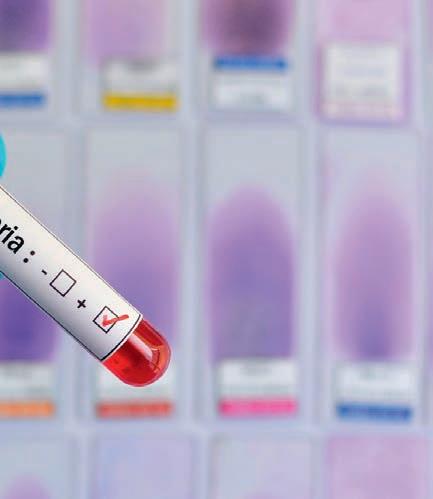
The plant in Lübeck, the secondlargest city on Germany’s Baltic coast, is currently run by Rügen’s subsidiary, Hawesta, which produces a variety of canned fish including salmon and mackerel.

In August, we reported that Mowi Consumer Products UK (CPUK) in Rosyth had been awarded an AA+ for food safety under the Brand Reputation Global Standards (BRCGS) framework. The unannounced audit assessed operational excellence and preparedness across every
department at CPUK.


In September, Highland salmon and trout processing company Aquascot – which supplies highquality seafood to retailer Waitrose – signed up to Developing the Young Workforce Inverness & Central Highland (DYWICH), affirming its commitment to providing employment and training for young people in the region.
Joanne Brogan, HR advisor at Aquascot, said: “It is important that we support the next generation of workers and future leaders, as they are key to our future economic success – providing a new perspective, and helping companies with resource shortages and skills gaps.”
Also in September, we reported that the Cooke Seafood Group, one of the world’s largest salmon farming companies, had acquired Morubel NV, the leading shrimp and prawn processor in Western Europe. Belgium-based Morubel



Opposite from top Marel at trade show; Listeria test kit; Hawesta building, Lübeck; Hawesta tinned salmon This page from top: Joanne Brogan Aquascot; Aquascot production line

“
October saw warnings over listeria in smoked fish”
cultivates, processes, packs and distributes shrimp and other seafood products.





October saw warnings over listeria in smoked fish in a joint message from Food Standards Scotland, the UK Food Standards Agency and the UK Health Security Agency.

An investigation identified 14 linked cases of listeriosis since 2020, with eight of these occurring since January 2022, in England and Scotland. While the majority of listeria cases cause mild gastroenteritis that usually persist for a few days, people in vulnerable groups can suffer more serious illness, including meningitis and life-threatening sepsis.

Ian McWatt, Food Standards Scotland (FSS) Deputy Chief Executive, said: “While the risks to the general public of becoming seriously ill due to listeria are very low, we need people who are vulnerable – specifically those over 65, pregnant women and people with weakened immune systems –to be aware of the risks.”
The agencies recommended that those in vulnerable groups ensure that smoked fish is stored below 5°C and thoroughly cooked before it is consumed.
“
is not a strategic fit for Iceland
Opposite from top Mowi Consumer Products team, Rosyth; Mowi salmon processing
Left: XASC Awards 2022 (from left): Olivia Brett, Product Technologist – Fish, Sainsbury’s; Jonathan Jordan, Senior National Account Manager, Mowi; Alyson Anderson, Product Technologist, Sainsbury’s; David Parker, Head of Aquaculture &; Fisheries, Sainsbury’s; Lorraine Gallagher, ASC Market Development Manager, UK &IE; Robin Brown, Head of Technical & Development, Mowi; Chiara Beghini, ASC European Regional Manager
The latter part of 2022 also saw warnings of listeria in smoked fish products in Norway and France, where some products had to be pulled from the shelves.
Salmon producer Mowi’s Consumer Products arm was named UK Retail Supplier of the Year in the Aquaculture Stewardship UK Awards, held in Aberdeen. Supermarket chain Sainsbury’s won the title of UK Retailer of the Year.
The awards recognise the work by suppliers and retailers involved to drive sustainability.

In November, Iceland Seafood International (ISI) announced it was to close its Grimsby-based value-added seafood business with the loss of around 90 jobs. The company said uncertainty following Brexit was partly to blame.

Although the company has extensive and highly successful salmon operations in Ireland and Spain, the UK business had been struggling for some time. The company said it was eroding profitability and the board no longer felt justified in continuing with it.
Chief Executive Bjarni Ármannsson said: “Although it has been concluded that the UK operation is not a strategic fit for Iceland Seafood anymore, the excellent facilities and



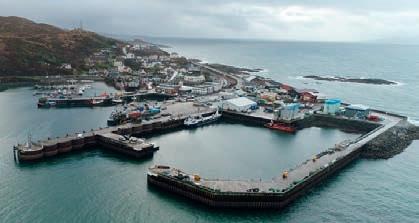
strong management team in Grimsby can be a great addition to other companies in the sector.”

The Seagriculture Conference Asia-Pacific 2023 will gather top speakers, who will share their know-how within seaweed for feed, food, offshore cultivation, biorefinery of seaweed and much more
Online, February 8-9, 2023 seagriculture-asiapacific.com
Aquaculture America 2023 returns to one of the favorite tourist spots in the world for the only major national aquaculture conference and exposition held in the U.S. New Orleans, Louisiana, USA, February 23-26, 2023 www.was.org

Designed as a point of reference for professionals in the international aquaculture sector, in which to be able to update themselves on the latest technological innovations and market strategies.
Santiago de Compostela, Recinto FIG-Silleda, Spain

March 28-30, 2023. en.aquafuturespain.com
LACQUA23 will be the 2023 Annual meeting of the Latin American & Caribbean Chapter of WAS. LACQUA23 will bring back international attention to the aquaculture industry of Panama and Latin America. Panama City, Panama, April 18-21, 2023 www.was.org
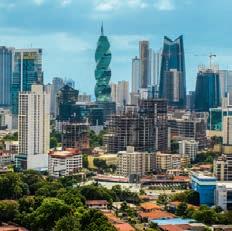
The hands-on Ocean Technology Exhibition and Training Forum. Meet over 300 suppliers to discover the latest products, technologies and techniques that will transform your business.
Southampton, United Kingdom, April 18-20, 2023 www.oceanbusiness.com
This annual event will incorporate the Australiasian Aquaculture industry and will see several thousand attendess from around the world converge on the city of Darwin.

Darwin, Northern Territories, Australia, May 29-June 1, 2023 www.was.org
Seawork is a “one stop shop” providing access to the commercial marine and workboat business. It is the largest European commercial marine exhibition held at the prestigious Mayflower Park venue in Southampton
Southampton, United Kingdom, June 13-15, 2023 www.seawork.com
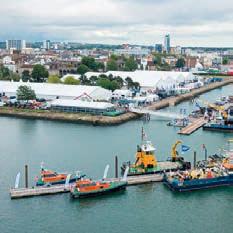
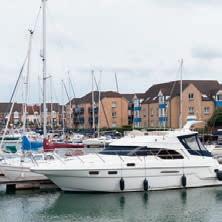
Since 1979, Aqua Nor has been an important international meeting place for the aquaculture industry, and it is today the world’s largest aquaculture technology exhibition.
Trondheim, Norway, August 22-25, 2023 www.aquanor.no/en/
Taking place in the iconic Austrian capital, Vienna, AE2023 will be the perfect meeting place to focus on diversification in aquaculture. AE2023 will also feature an international trade exhibition, industry forum, student sessions and activities, satellite workshops and updates on EU research.
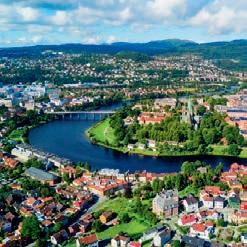
Vienna, Austria, September 18-21, 2023 www.aquaeas.org

The UK has huge potential to increase its shellfish aquaculture production, as we farm some of the best bivalve shellfish on the planet, but 2022 has been another challenging year for the sector.

Sadly, recently produced government statistics, collated by Cefas Weymouth, demonstrate a further reduction in UK production figures (2020 data) and show that the industry is in need of support if it is to survive.
Overall, UK mussel production has reduced by 60% over the last seven years. In terms of specific areas, Scotland has decreased by 17%, Wales 99.5%, England 35% and Northern Ireland 80%.

The data over the last three years look any better, with a total reduction of 31% (Scotland 17%, Wales 98.2%, England 10% and Northern Ireland (4%).
Turning to oysters, the picture is similarly depressing, with an overall 30% reduction in production in the last three years (Scotland 30%, Wales 75%, England 29% and NI 4%).
It is true to say there have been exceptional circumstances,




with Brexit, Covid and, more recently, parliamentary turmoil leading to challenging trading conditions and now a cost of living crisis.
As we know, Covid created havoc in the catering trade at home and abroad. Added to this, Brexit has had huge implications for the export of bivalve shellfish from B-class waters. The shellfish aquaculture industry needs support to survive, but the government and its agencies have long been operating in a negative manner toward the main cultivated oyster species.
Added to the poor water quality we have and a waste water system that is not fit for purpose this leaves shellfish aquaculture in a vulnerable position and subject to negative
Executive, Shellfish Association of Great Britain (SAGB)
The UK has the capacity to produce great shellfish, but this has been a tough year
WHAT IS CONSTRAINING THE SECTOR IS NOT IN THE HANDS OF INDUSTRY TO RESOLVE
media coverage.
At the same time, our governments are suggesting that they want and need shellfish aquaculture to grow and develop. The mantra currently is that UK governments want to see “industry-led growth in the sector” – however, what is constraining the sector is not in the hands of industry to resolve.

All of this has an impact on the industry and, importantly, opportunities for investment in it.
This is all happening at the same time that a new “industry” is developing, that of Native Oyster Habitat Restoration, with huge quantities of money being spent at myriad sites around UK shores. This is recognised by many as a good initiative, as native oysters deliver excellent ecosystem services by way of carbon sequestration, water cleansing and delivering an increase in biodiversity.
The Zoological Society of London states on its website of native oyster restoration: “The shellfish are known as ‘ecosystem engineers’ because they provide the foundation for entire ecosystems – filtering water and providing vital food and habitat for coastal wildlife.”
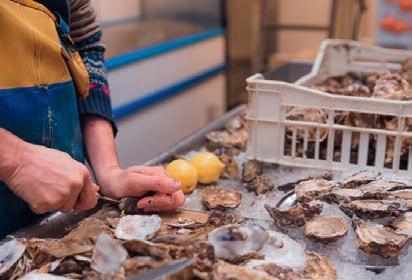
It is strange – and sad – that UK statutory nature conservation agencies argue that Pacific oysters are a problem, as – applying exactly the same reasoning – they are also “ecosystem engineers”!





















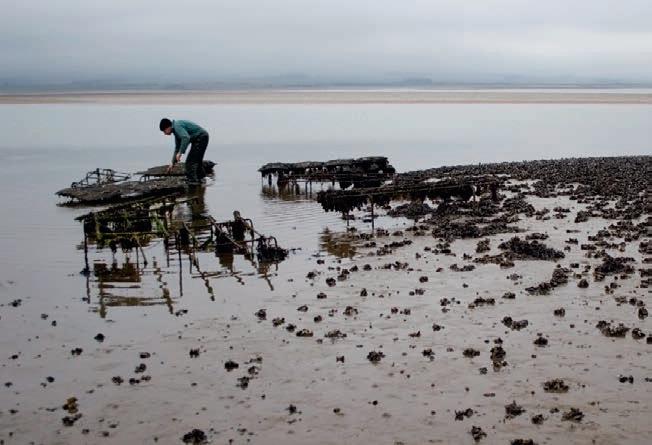
However, it is not all bad news. One upside from the pandemic is that the UK public have demonstrated that they do want to buy local, and buy UK shellfish. Consequently, UK demand has risen in the last year. This has helped some in the sector who were affected by the change in trading post-Brexit.
In addition, in 2022, the All Party Parliamentary Group (APPG) on Shellfish Aquaculture was set up with the SAGB providing the secretariat. The aim of this APPG is to help parliamentarians understand the enormous opportunities in the sector and the constraints preventing the industry from growing without government buy-in. We need political support in order to change the tide of negativity in the industry and develop a vibrant industry delivering jobs in the coastal rural communities and increasing export potential, while supporting the blue agenda and delivering on food security.
Shellfish aquaculture is recognised as being the cheapest and most natural form of protein production, so let’s harness the UK’s potential!
Opposite from top: Mussels; David Jarrad This page from top: Farmer collecting oysters from beds near Holy Island (Lindisfarne) in Northumbria, England; Fresh oysters; Fishmonger shucking fresh oysters on the Isle of Skye
We began the year with a frank assessment of the UK shellfish industry’s challenges since Brexit officially took effect in January 2021.
Anger in the sector remained strong after it emerged that the UK government had failed to negotiate an agreement with the European Union to cover the export of live bivalve shellfish.

EU rules – which existed before Brexit – mean that shellfish such as mussels and oysters cannot be imported into Europe unless they are either from “Class A” waters (a requirement that most UK fisheries do not meet) or have been depurated, a process that requires specialised facilities.
Previously, UK shellfish were simply exported in bulk to processors in France and Belgium for depuration, before being sold on. Promises to invest in depuration facilities in the UK, wrote Fish Farmer’s Nicki Holmyard, missed the point that continental buyers do not want depurated shellfish. Depuration is part of their process and doing it twice reduces the shelf life of the product.
David Jarrad, Chief Executive of the Shellfish Association of Great Britain (SAGB), said: “The mood for exports



is extremely dour to say the least.”
In February, we reported on an innovative company from New Zealand that is looking to roll out its ideas to a global market. Marlborough Oysters developed the FlipFarm, a line of baskets on a rope that flips automatically when winched up, reducing time and effort for operators.
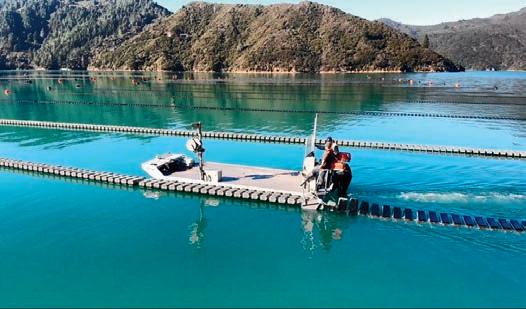
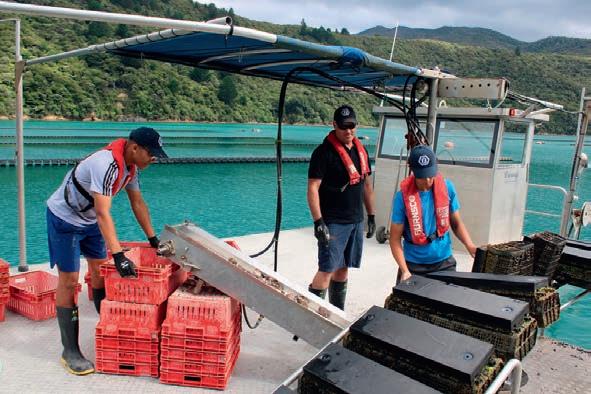
Since its launch two years ago, FlipFarm has been taken up by more than 70 farmers in 12 countries, and
In 2022 the UK shellfish industry was beginning to find its voice






was named the winner of the Global Seafood Alliance’s Innovation Award for 2021.

In March, we reported that the UK’s shellfish had finally succeeded in getting an All-Party Parliamentary Group (APPG) for Shellfish Aquaculture off the ground.
Opposite from top: Aaron, Joel and Luke harvesting oysters, FlipFarm; the FlipFarm This page from top: Lisaqua team: Charlotte Schoelink, Caroline Madoc and Gabriel Boneu; Anthony Mangnall MP
The inaugural meeting kicked off in February, with Simon Fell MP elected as Chair, Anthony Mangnall MP as Vice-Chair and seven MPs in attendance. SAGB agreed to take on the secretariat role, with assistance from Seafish.
Mangnall commented: “I have seen first hand the value of the shellfish industry to the environment, to the economy and to our coastal communities. We can and must do more to recognise the potential for growth and to provide clarity and support for this industry.”
In April, plans for a new landbased shrimp farm in France took a big step forward after the company behind the project announced it had
secured almost €5m (£4.2m) in funding.
Lisaqua plans to build a 2,000m2 facility near Nantes, followed by others around the country, which together will eventually be capable of producing up to 10,000 tonnes of shrimp a year.
Gabriel Boneu, Lisaqua CEO and co-founder, said the company hoped to achieve its 10,000 tonne target by 2030.
He said: “This funding will allow us to recruit 10 people and to structure strategic partnerships to prepare our scale-up. We plan to set up a network of farms near the main French cities from 2024 in order to make our ultra-fresh shrimp available to as many people as possible”.
Lisaqua has developed “permaquaculture”, a patented co-culture technology combining shrimp, microorganisms and marine invertebrates in recirculated indoor aquaculture farms.
This innovation allows the farming
“The mood
least”
of shrimp without antibiotics, preserves the environment – such as mangrove forests – and saves 99% of water compared with conventional shrimp farming.
The company has also been selected for an ambitious project to use the thermal energy generated from the Monthyon energy recovery unit (ERU) in the Greater Paris region, which uses household waste to create energy.
In Australia, however, plans to build the world’s largest shrimp farm in Australia’s Northern Territory have been put on hold.
Seafarms unveiled Project Sea Dragon more than four years ago and last summer announced plans to raise around £50m. It had also received backing from Japanese seafood giant Nissui.
Seafarms said it remained committed to the project, but explained that construction of the 25,000-acre black tiger prawn facility was not financially feasible in its current form.
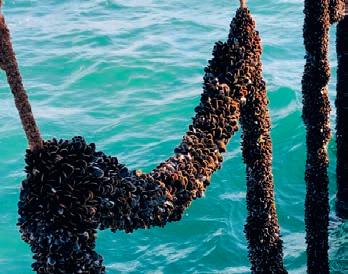
The site, more than 200 miles south of Darwin, was seen as too remote and would have presented construction, breeding, processing and logistical challenges.
At the end of April, a joint venture between two family owned shellfish businesses, Krijn Verwijs Yerseke BV of the Netherlands and England’s Offshore Shellfish, scooped two special prizes.

Krijn Verwijs Yerseke and Offshore Shellfish, which joined forces last year to create Premier Offshore VOF, won the Seafood Excellence Global special award for Retail Packaging for its product Bangkok – Mussels in Fresh Sauce with Lemongrass and Ginger, a convenient meal for one or starter for two with a chef-made sauce

that can be prepared in just three minutes.
Krijn Verwijs Yerseke/Premier Offshore also won the Seafood Excellence Award for Best Seafood Product Line for its line of BAPcertified and organic mussels in fresh sauces. The line includes Bangkok – Fresh Sauce with Lemongrass and Ginger, Classic – Fresh Sauce with Thyme and Rosemary, and Avignon –Fresh Sauce with Wild Garlic.
May saw the annual conference of the SAGB, with addresses from UK Fisheries Minister Victoria Prentis and also from her equivalent in the Scottish government, Mairi Gougeon. Other speakers included Katrine Sasaki, Head of Market Opening and Agriculture at the British Embassy in Tokyo; Matt Whittles, Head of Trade in Seafood in the Defra fisheries trade team; and Lewis LeVay of Bangor University, who outlined the case for an assurance scheme to predict and control bacteria such as E. coli in shellfish production. In July, it emerged that farmed mussel production in Scotland reached a record-breaking 8,590 tonnes in 2021, according to Marine Scotland Science, while production of Pacific oysters leaped by 70%.
The figures came from the Scottish Shellfish Farm Production Survey 2021, an annual count based on








information provided by producers in within the mussel, Pacific oyster, native oyster, queen scallop and scallop species sectors (see page 82 for more details).
The tonnage for mussels in 2021 represented a 52% increase on 2020.
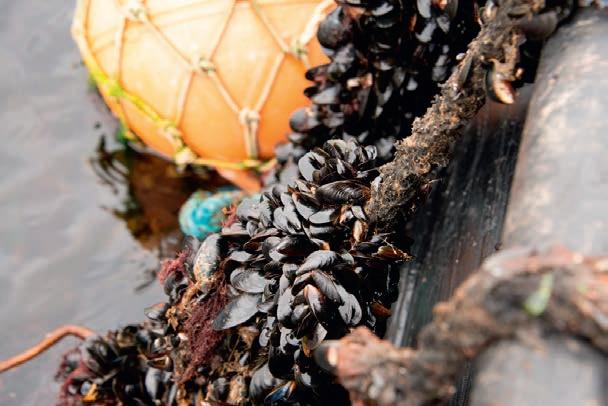
September brought news of a private equity-led deal to consolidate the European clam sector.















The Ocean 14 Capital Fund (O14C) was the funder behind MITO, a company created by bringing together three leading clam hatchery and nursery operators: Societá Agricola Ecotapes Italia SrL, Delta Futuro Societá Agricola SrL in Italy, and Ecotapes Zeeland BV in the Netherlands.
The combined company produces more than 300 million clam seed juveniles for the Italian market. MITO integrates biosecure hatchery operations in the Netherlands with local nursery centres in the core Italian market and has an ambitious growth plan to increase its operational capacity to two billion seeds annually over the next few years.
The fund plans to invest an additional €5m (£4.23m) to scale and grow the business further, as part of its European bivalves strategy.
Meanwhile, Israel-based startup Mermade announced plans to created cell-cultured seafood, starting with scallops. The company
said it had developed an affordable growth medium that would make it economical for lab-grown scallops to compete with shellfish grown in the sea.
The end of the month saw Storm Fiona hit Canada’s east coast, with a serious impact on farmed seafood as well as catch fisheries. The Canadian Aquaculture Industry Alliance estimated that the farmed shellfish sector on Prince Edward Island alone had suffered losses amounting to at least CAN $50m (£33m). The Canadian federal government pledged $300m (£197m) to help the region as a whole recover.
In October, the Association of Scottish Shellfish Growers (ASSG)





Opposite from top: Mussels in fresh sauces from the Krijn Verwijs/ Offshore Shellfish joint venture; Lewis LeVay, University of Bangor; Mussels growing on ropes
This page from top: Mussels; Cockles; Seafarms shrimp farm under construction
“I have seen first hand the value of the shellfish industry”
annual conference and trade show returned to Oban. As well as a programme of leading speakers, the conference saw the results of the Best Scottish Shellfish competition announced.

The winners were:
Best Gigas Oysters
– Andy Abrahams, Colonsay Oysters, Isle of Colonsay

Best Native Oysters
– Judith Vajk, Caledonian Oysters, Barcaldine

Best Mussels
– Cameron McLean, Inverlussa Shellfish, Isle of Mull

“We judge the shellfish on their appearance, taste, smell and texture, and they come to us as a numbered sample, so we have no way of knowing who produced it. It is a difficult but tasty job picking out the very best, and the judges were unanimous in their choice of worthy winners. All the shellfish submitted this year were outstanding, but there can only be one winner!” Nicki Holmyard, Chair of the judges’ panel, said.
Above: ASSG awards – the winners of the annual Best Scottish Shellfish awards (from left): Best Gigas Oysters – Andy Abrahams, Colonsay Oysters, Isle of Colonsay; Best Mussels – Cameron McLean, Inverlussa Shellfish, Isle of Mull; and Best Native Oysters – Judith Vajk, Caledonian Oysters, Barcaldine.
Left: SAGB Conference, London

“It is a difficult but tasty job picking out the very best”

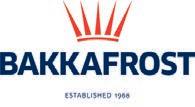


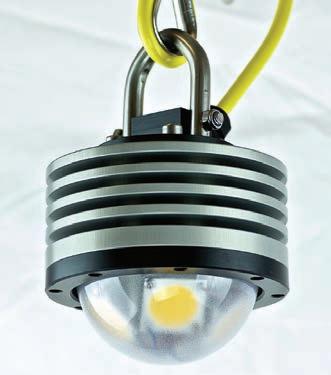








Headline


Landing Utility Vessel 1908 is designed to perform diverse aquaculture industry. Its scope includes the transportation cargo and feed, with multiple loading and unloading options. location, the vessel supports a wide range of activities including maintenance and net clearing. more on Damen.com
FORMULATE MORE WITH LESS
aqua team designed a unique range of feed additives to enhance digestive and processes. Species-speci c solutions AQUAGEST® as well as a complete range of emulsi ers like LIPOGEST and AQUALYSO. more options on ingredient choice, protein e ciency and creating a more aquafeed with less environmental would like to share our in-depth and hands-on experience with you. It’s you, and great for your sh and shrimp.




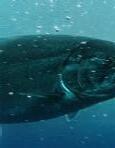

Find your local contact at
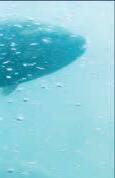
www.fishfarmermagazine.com
Sponsored by

